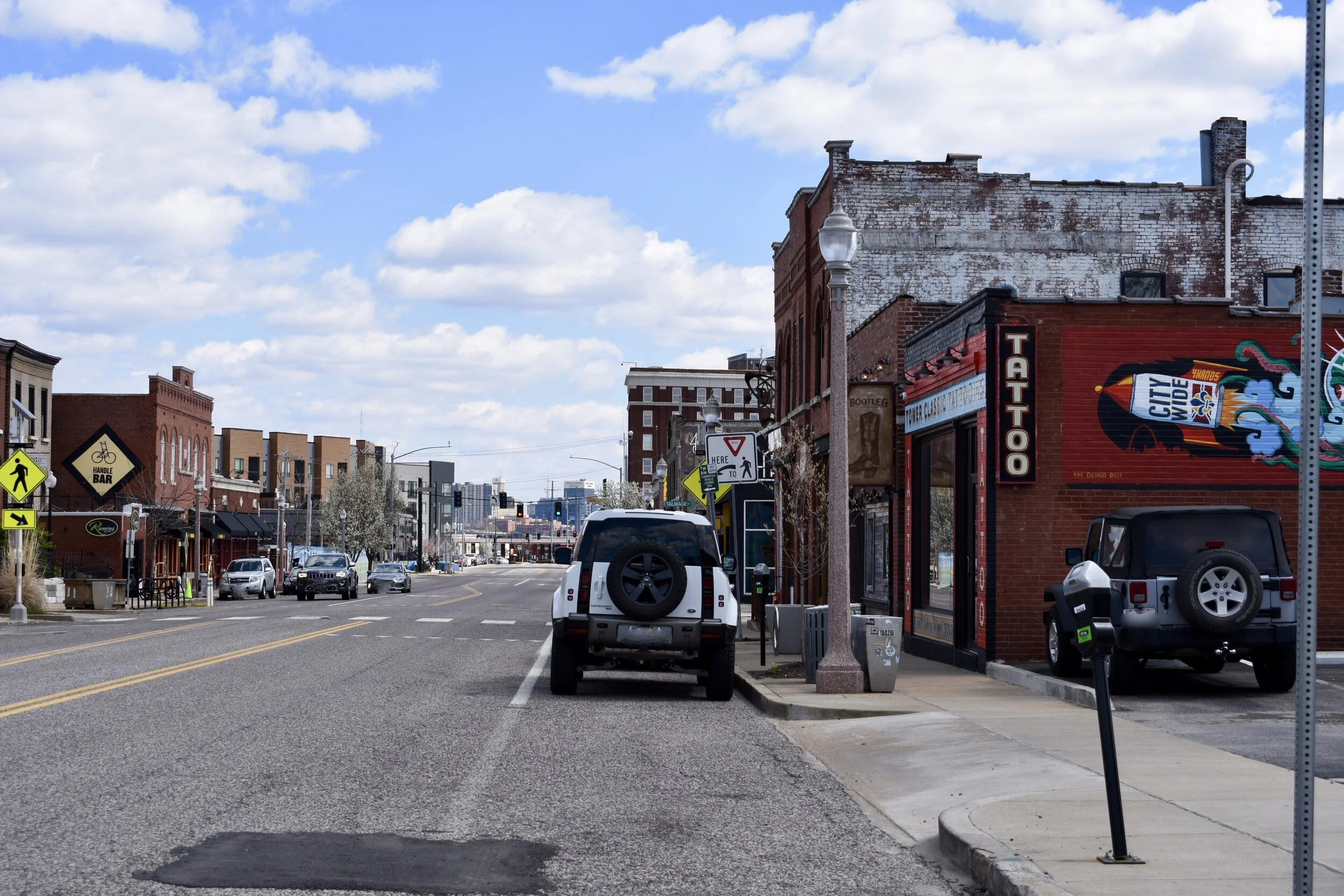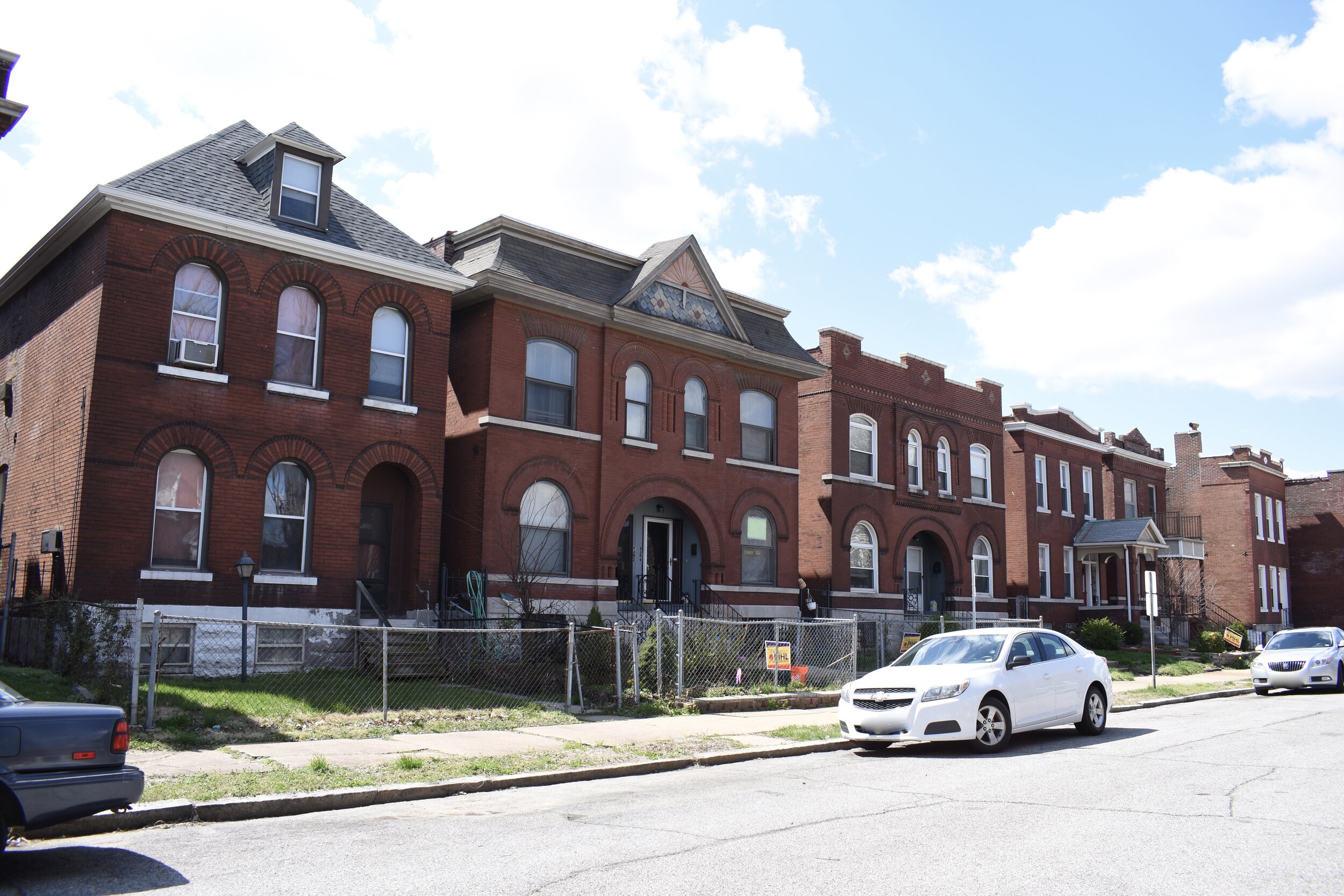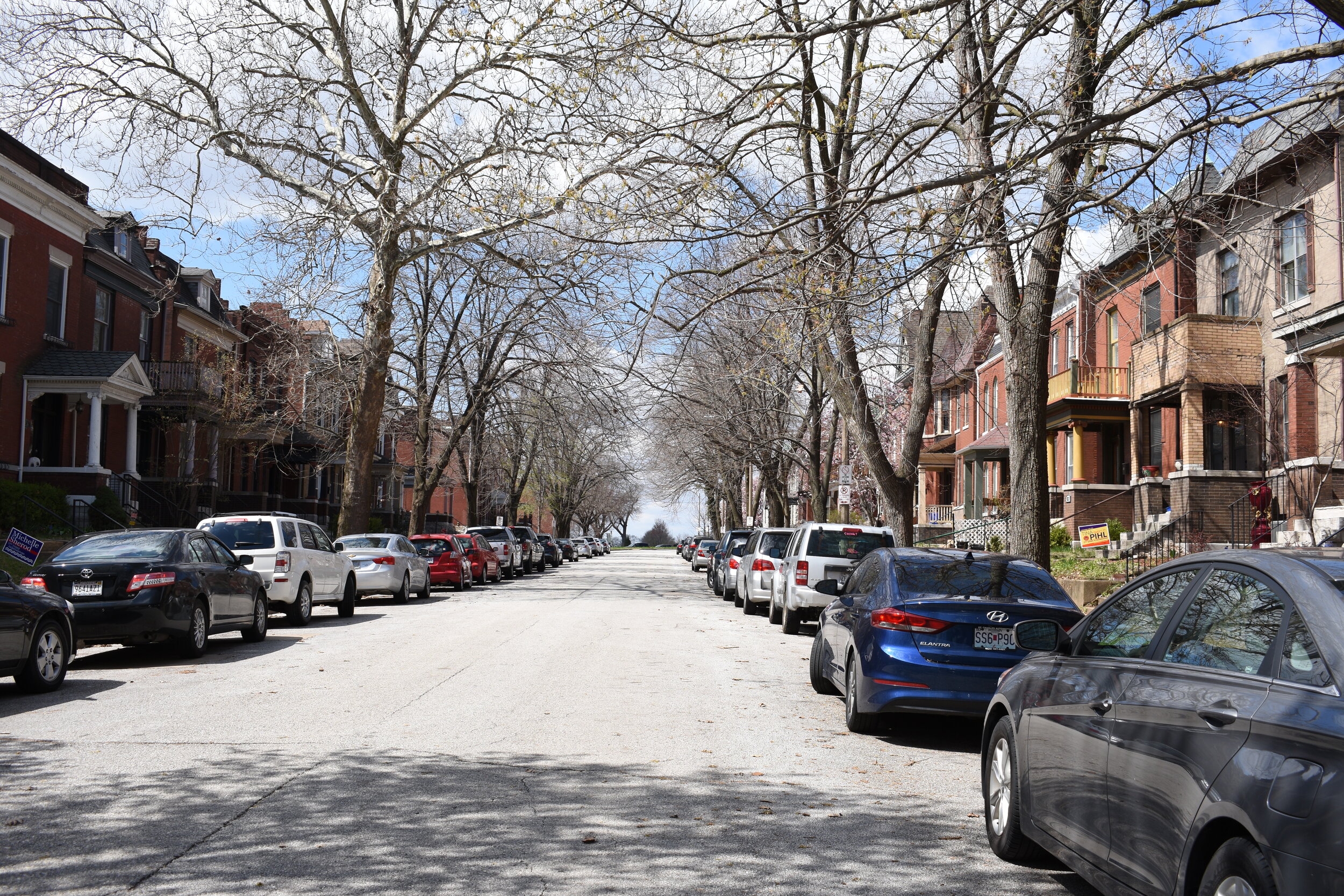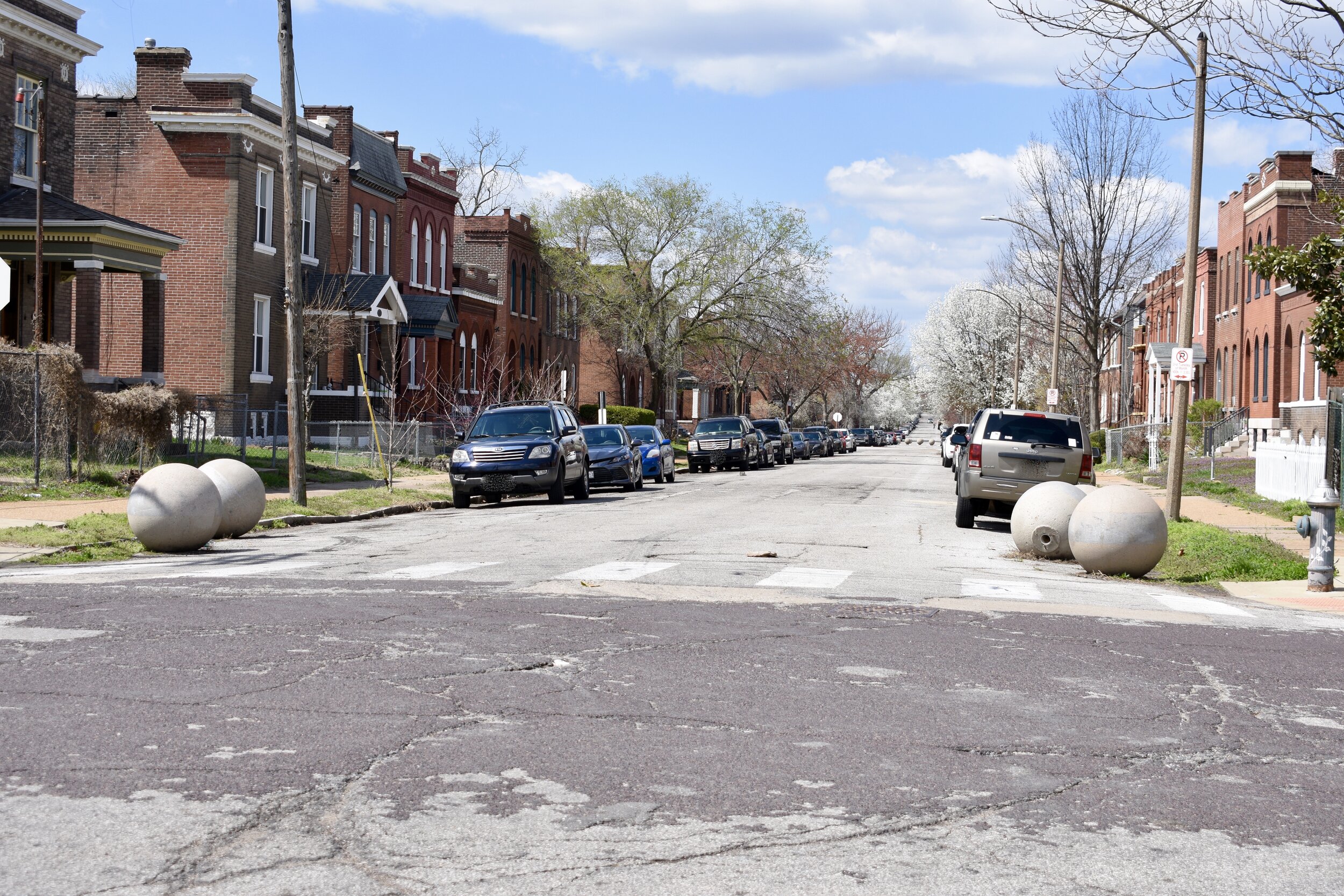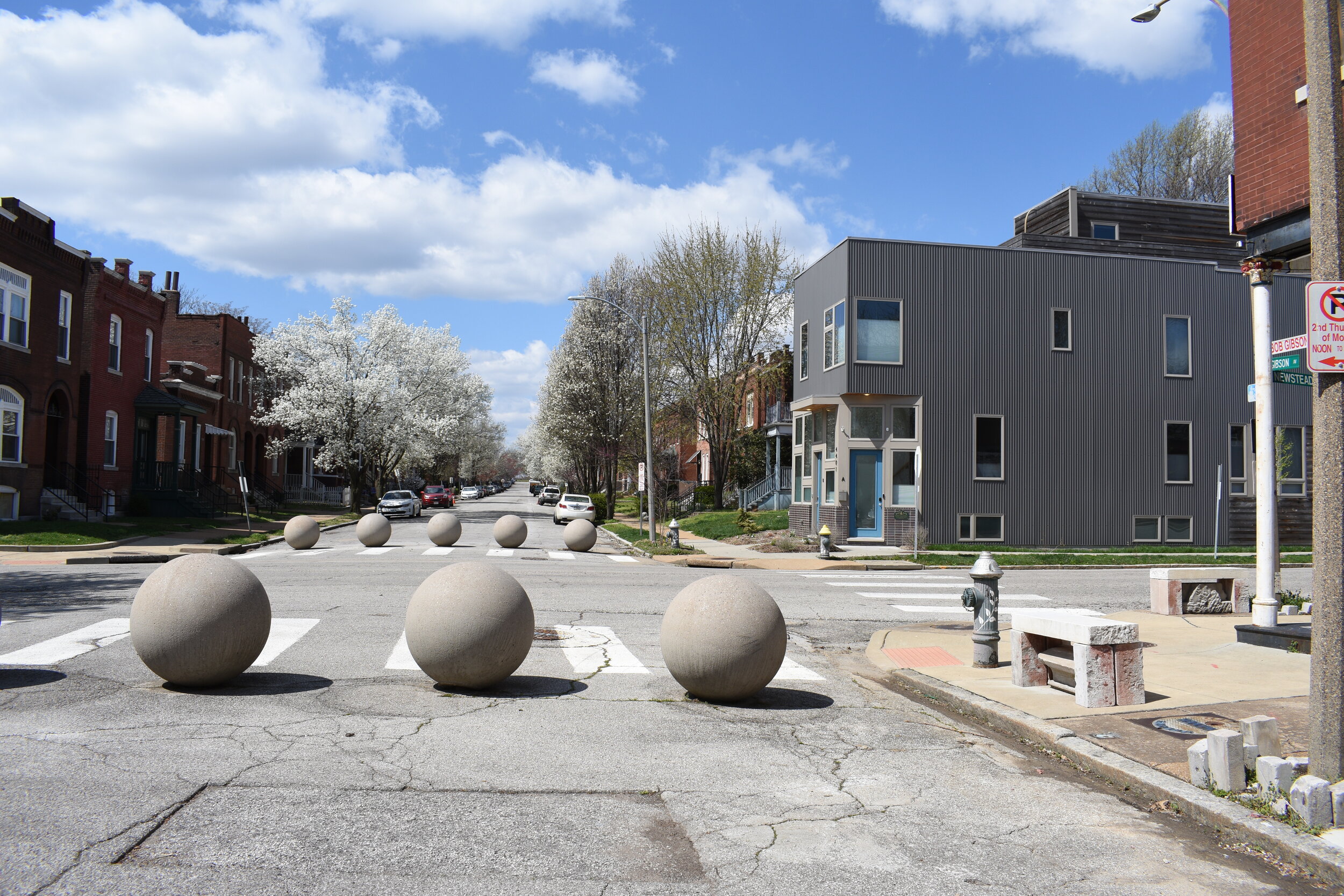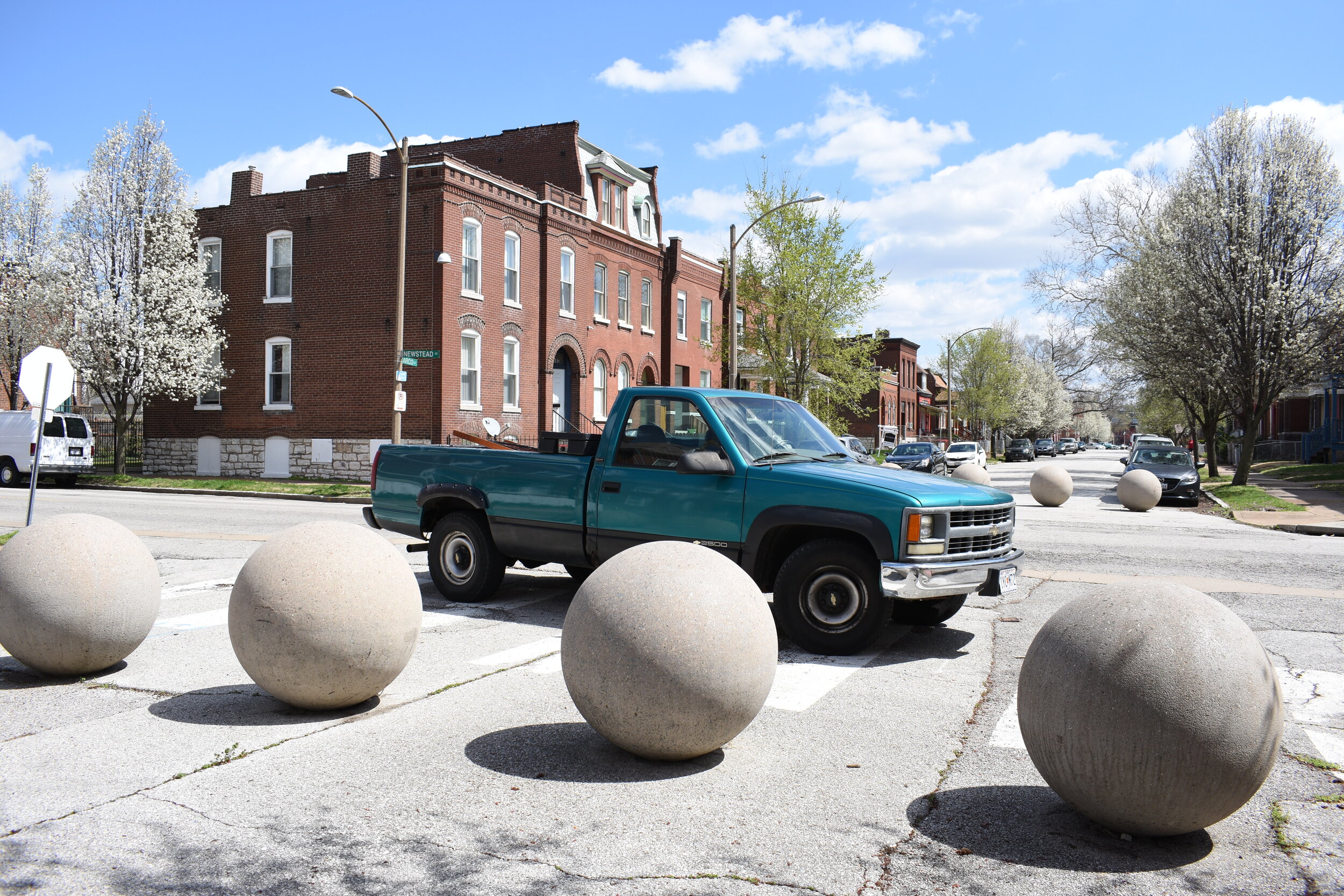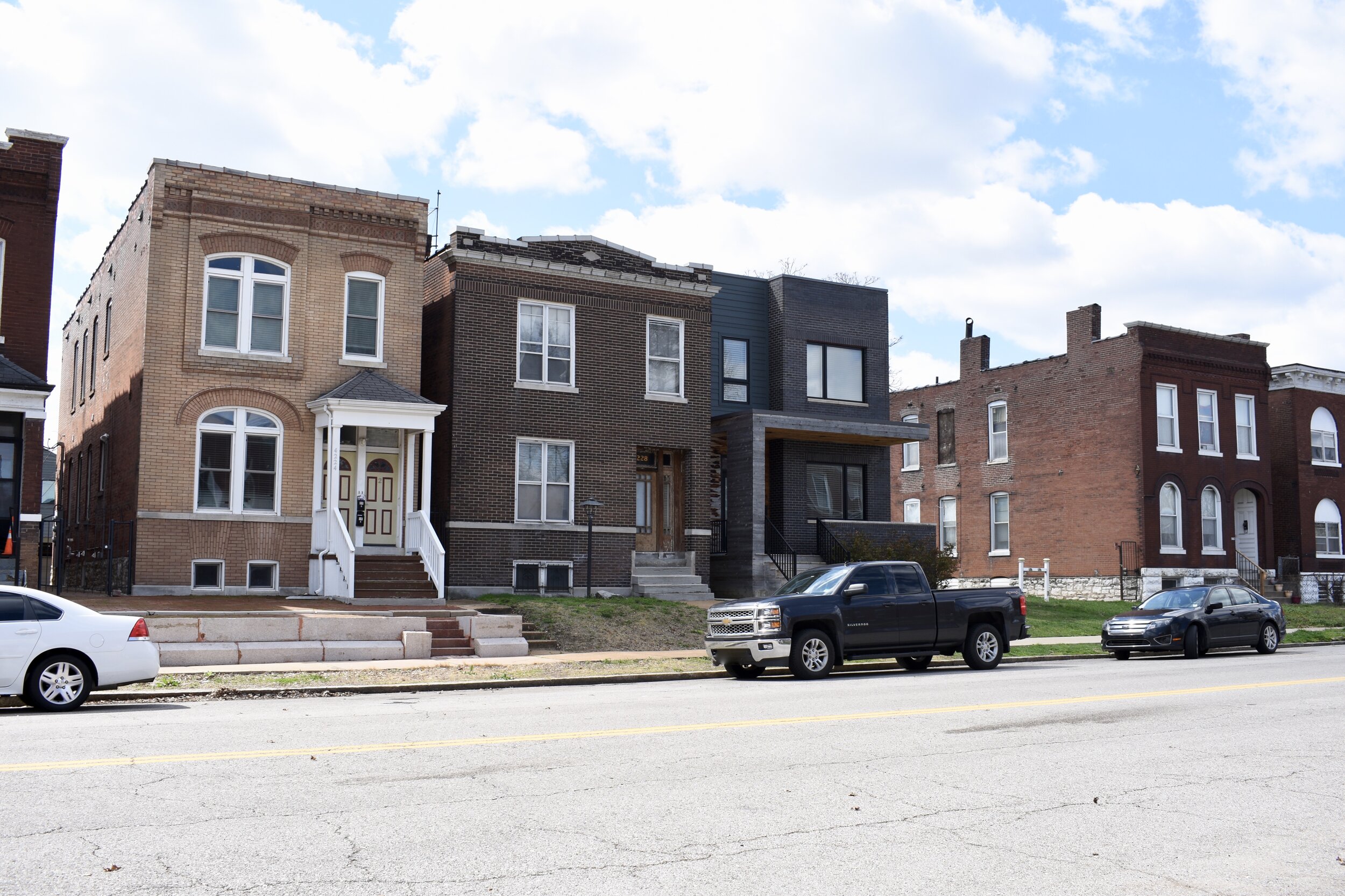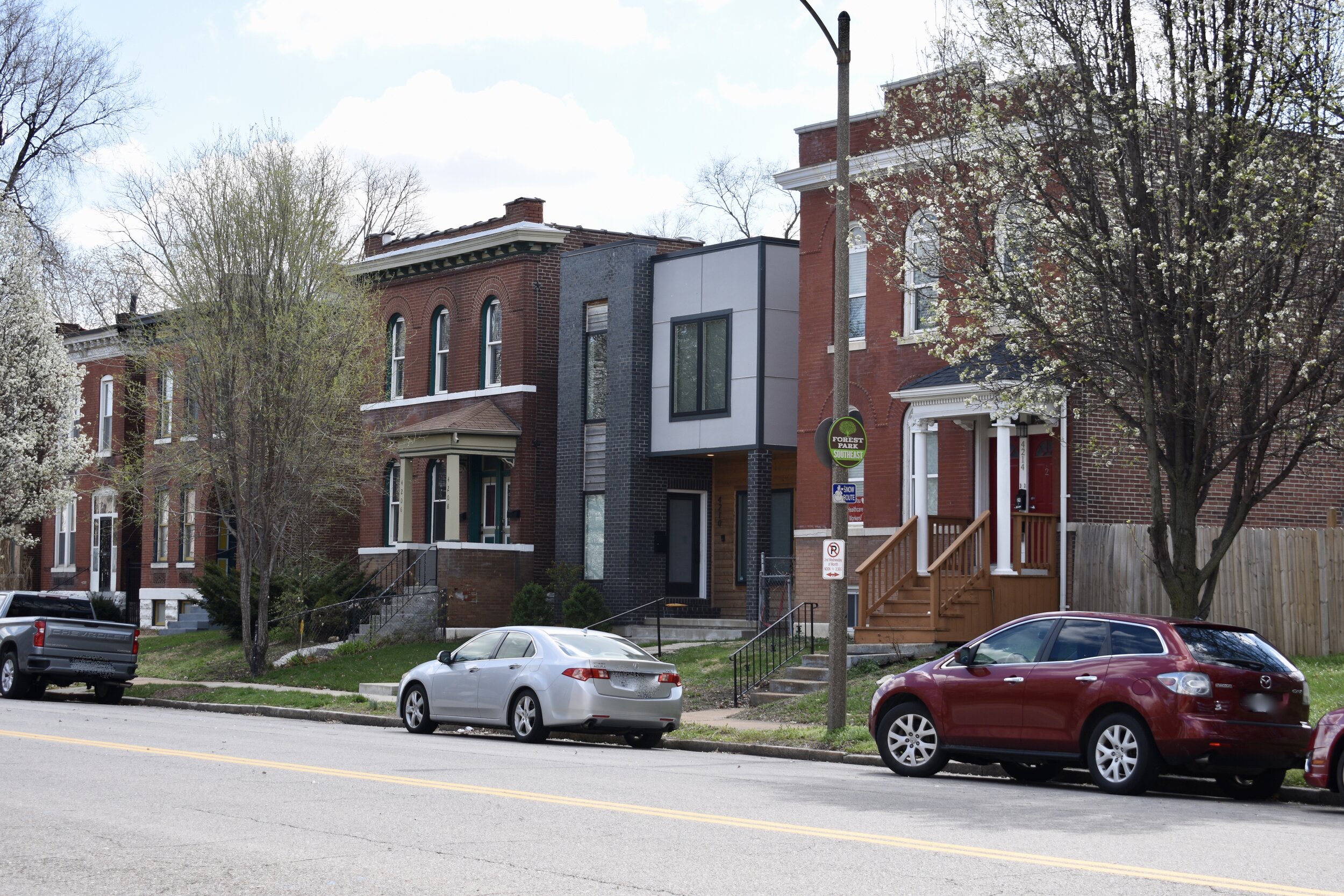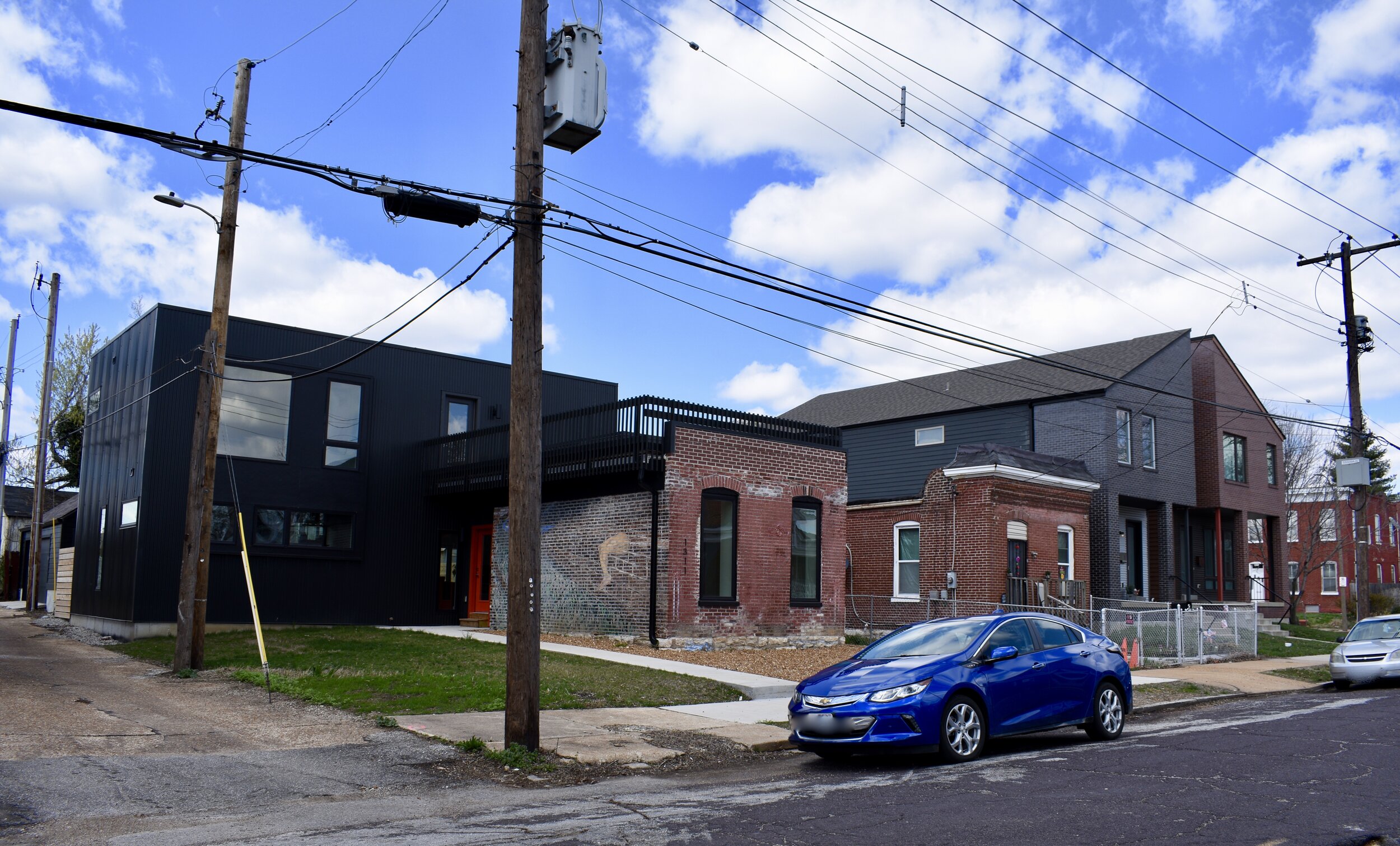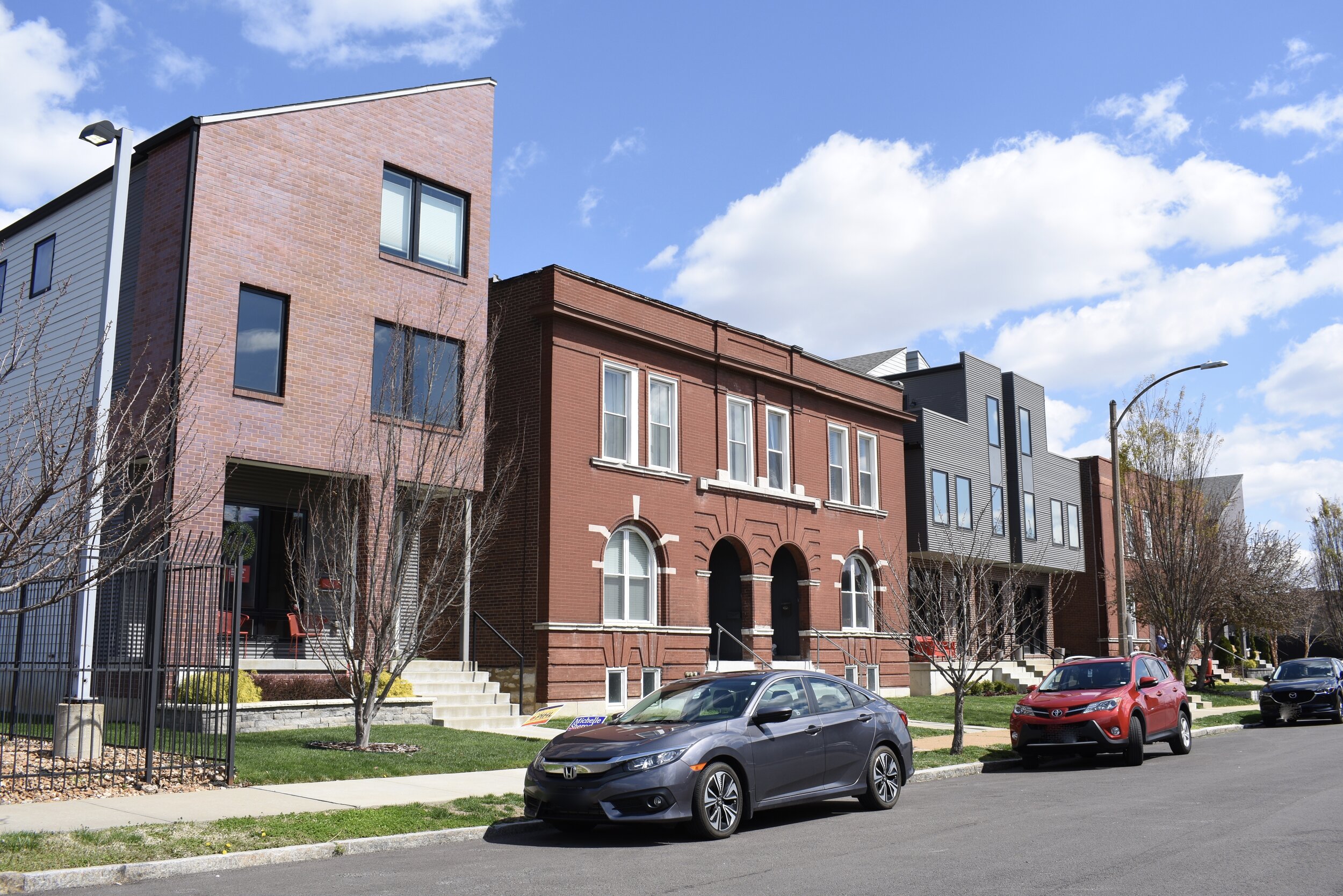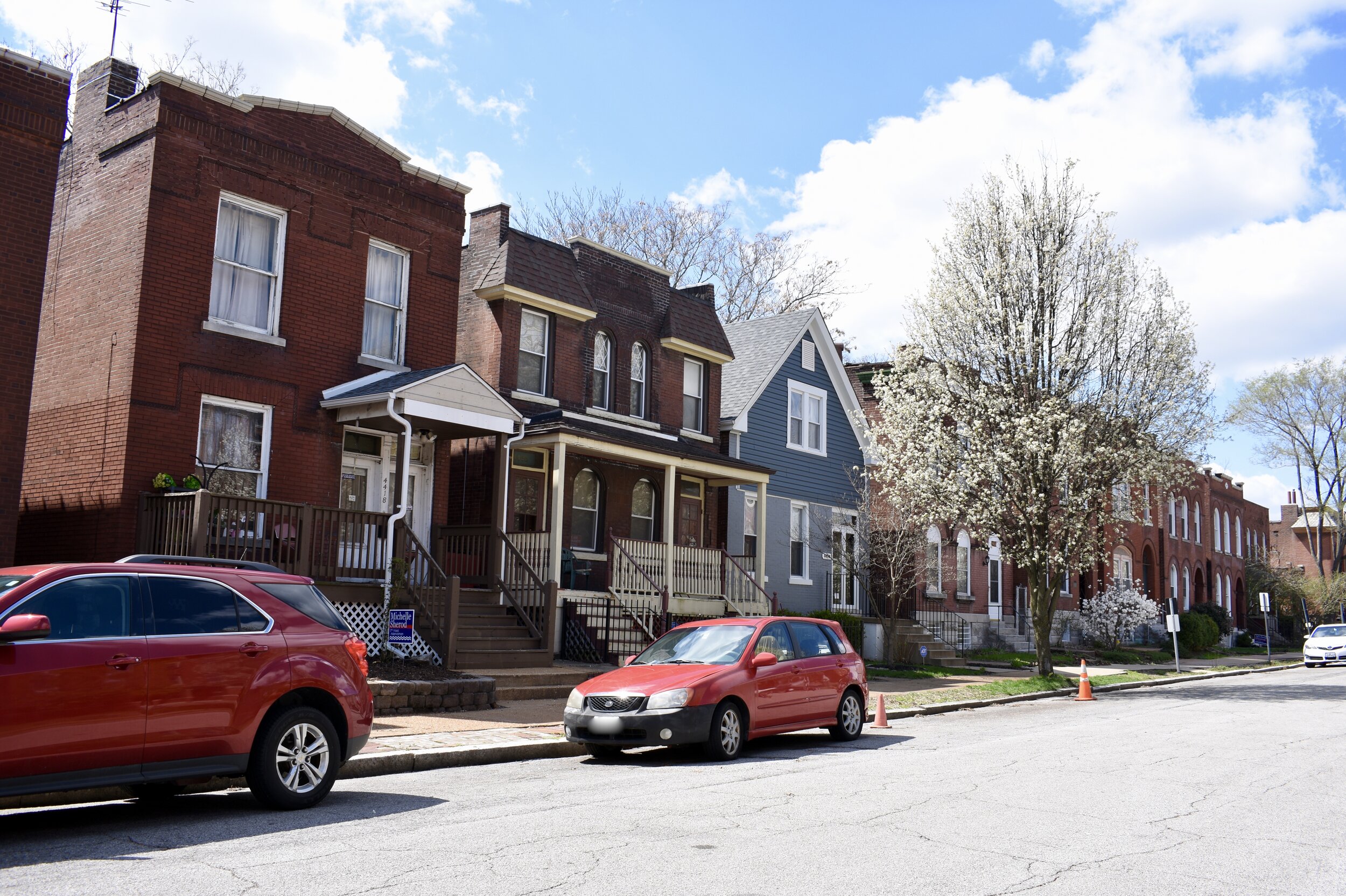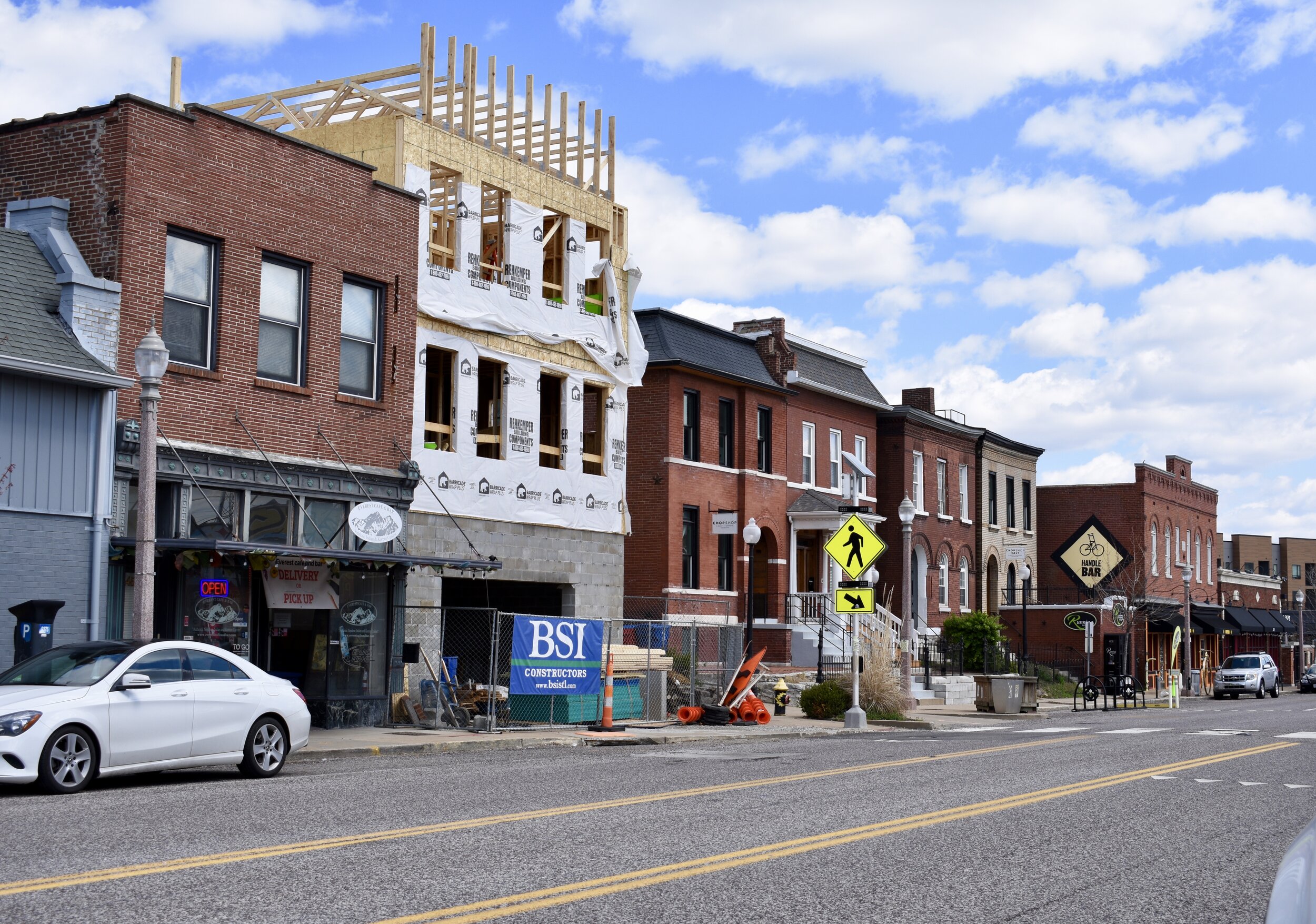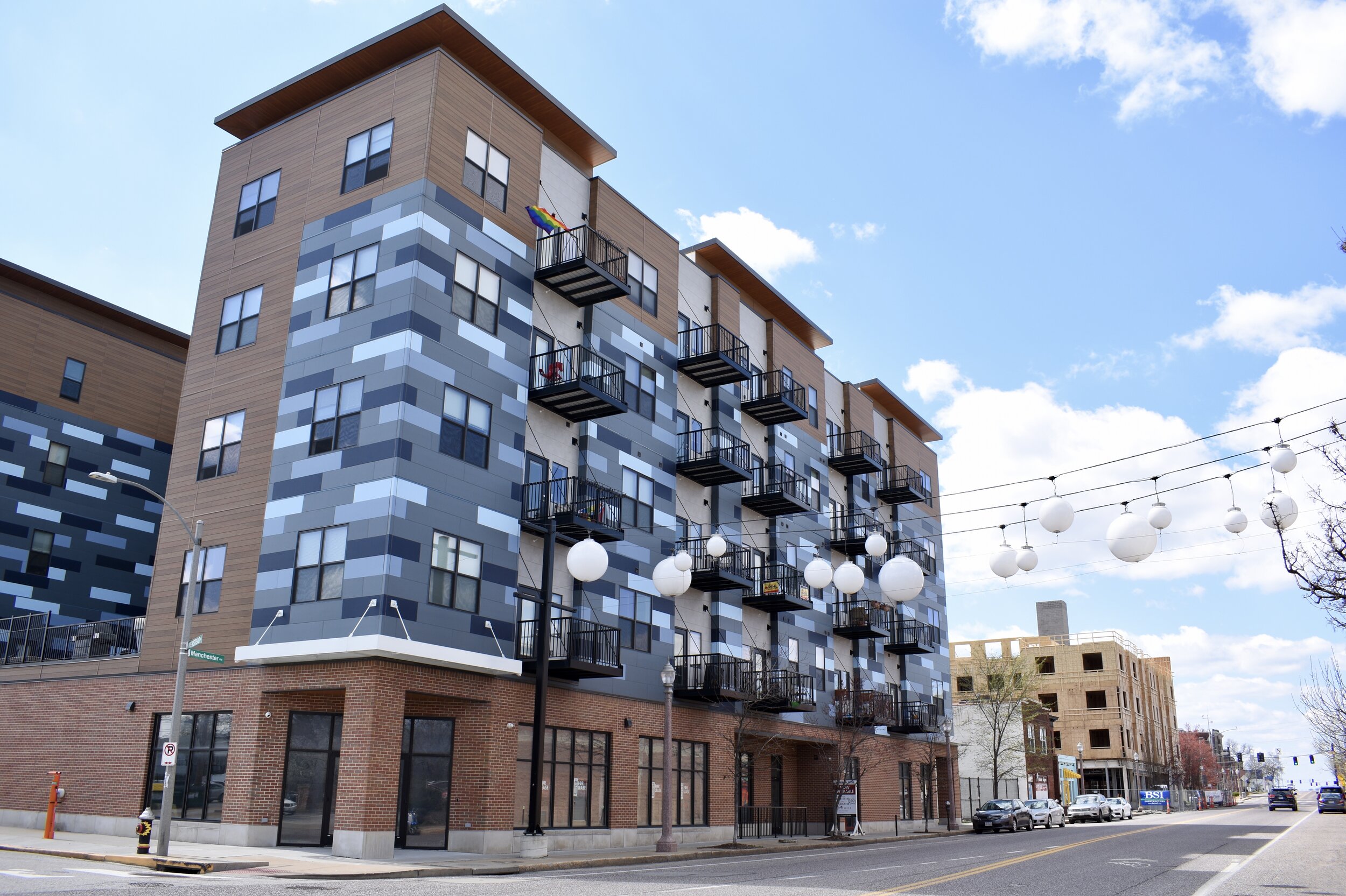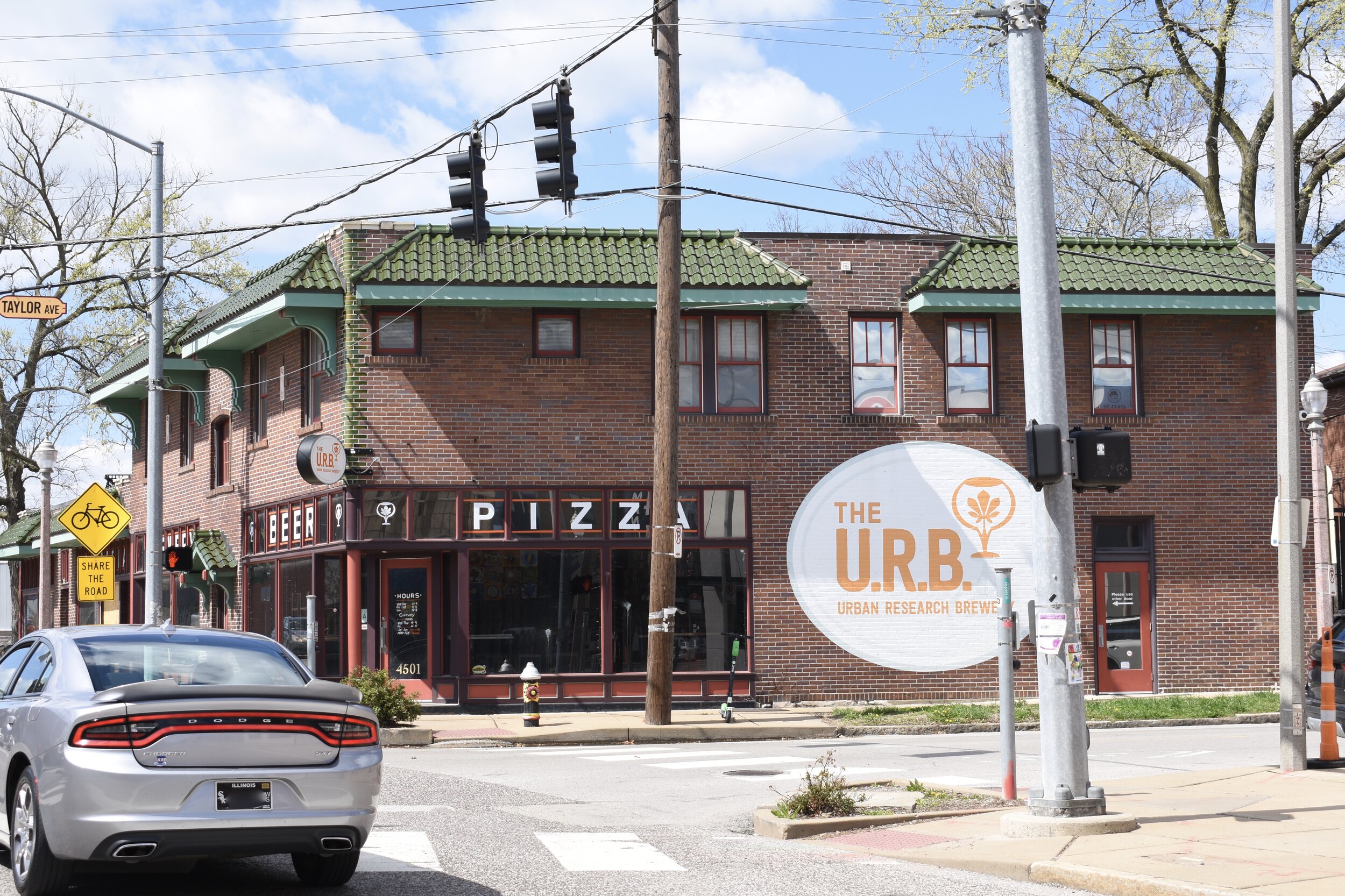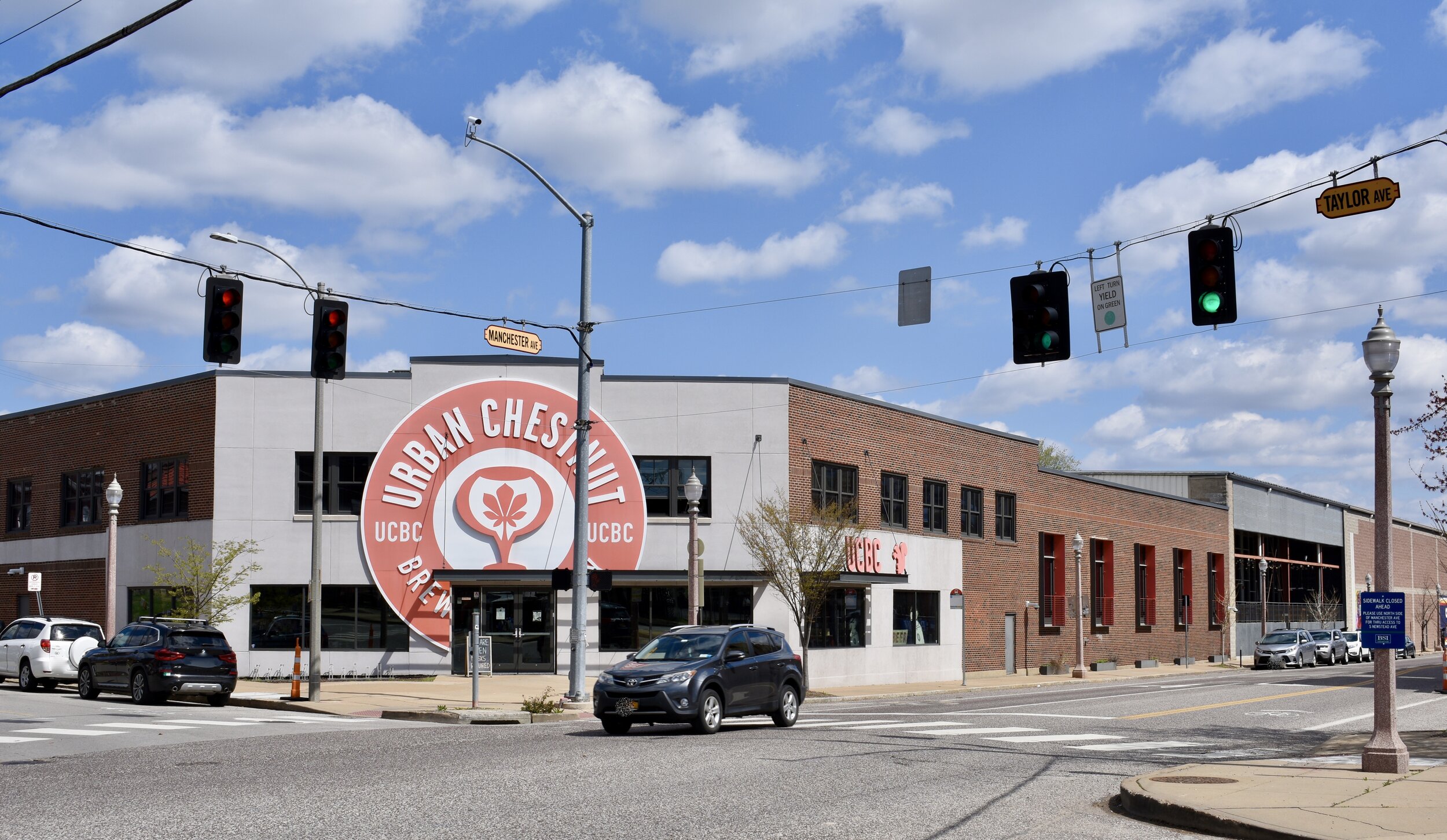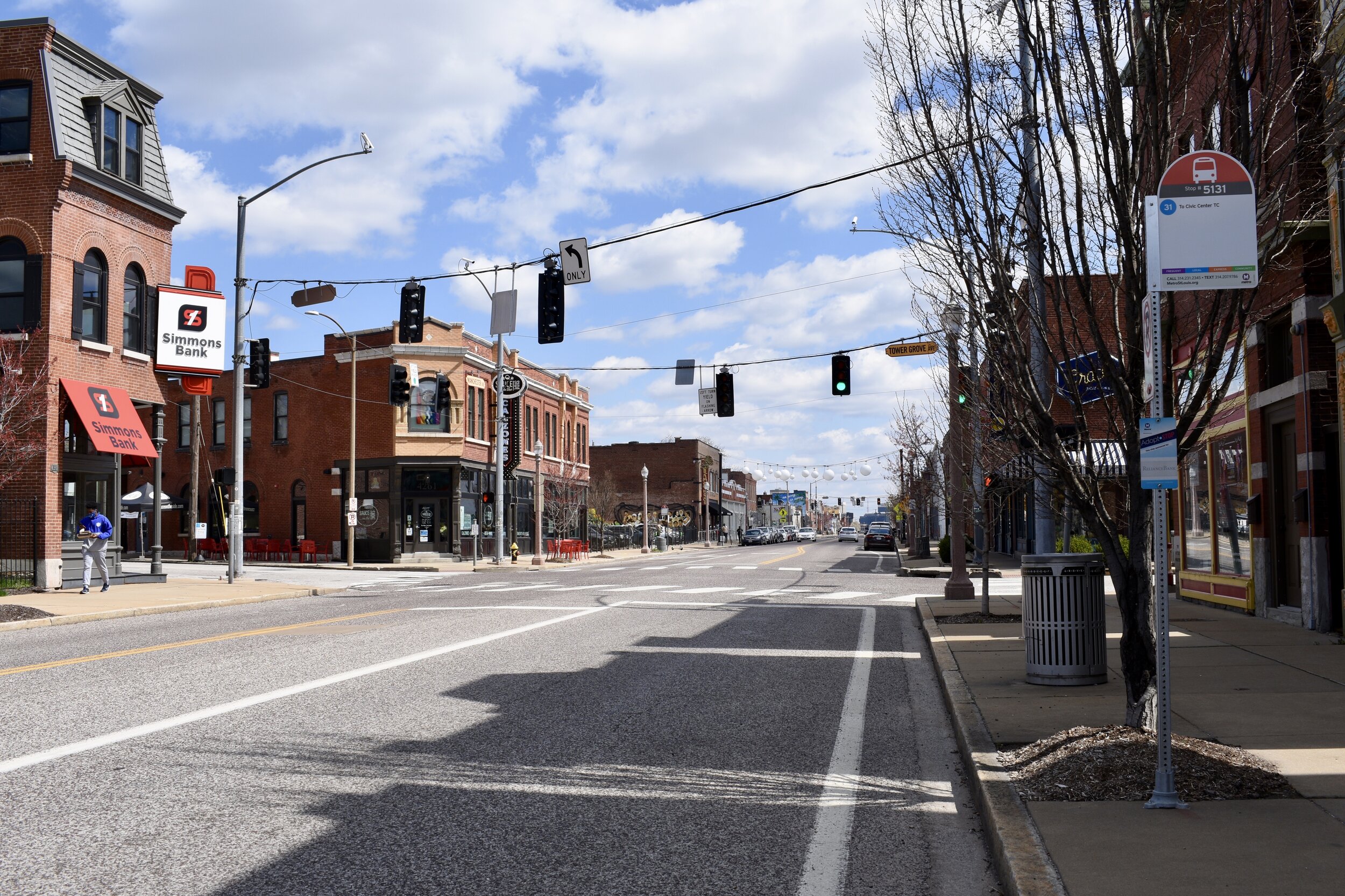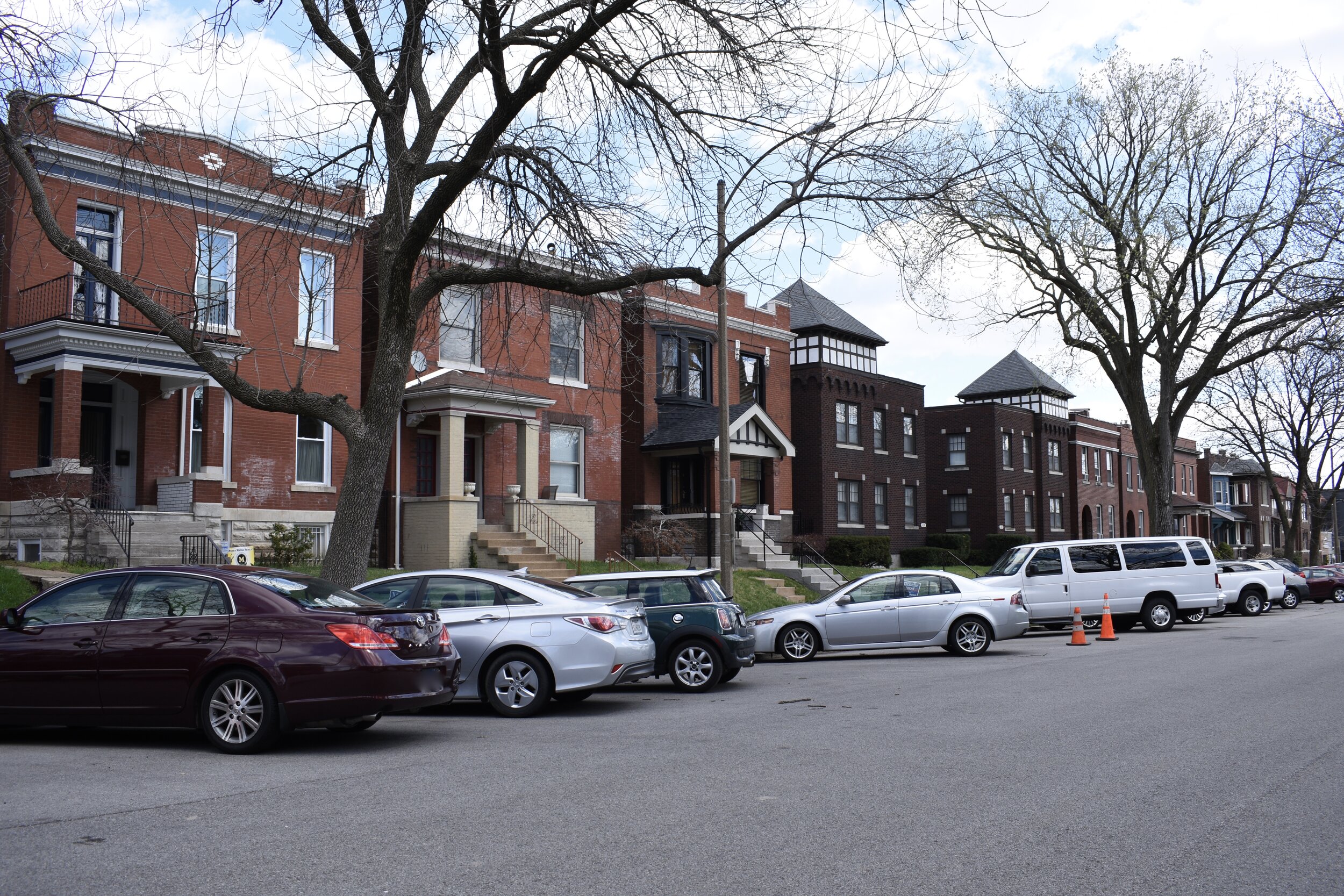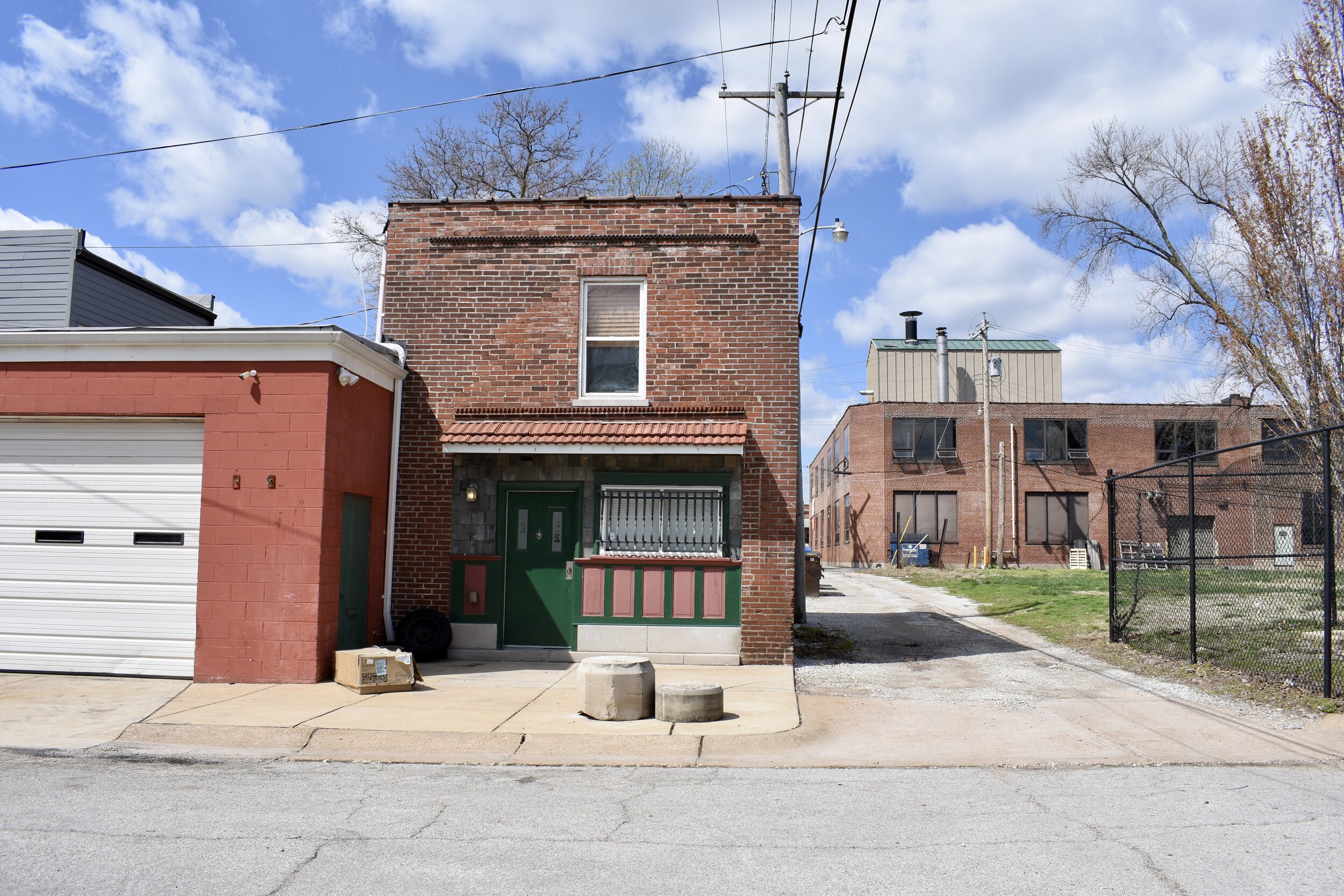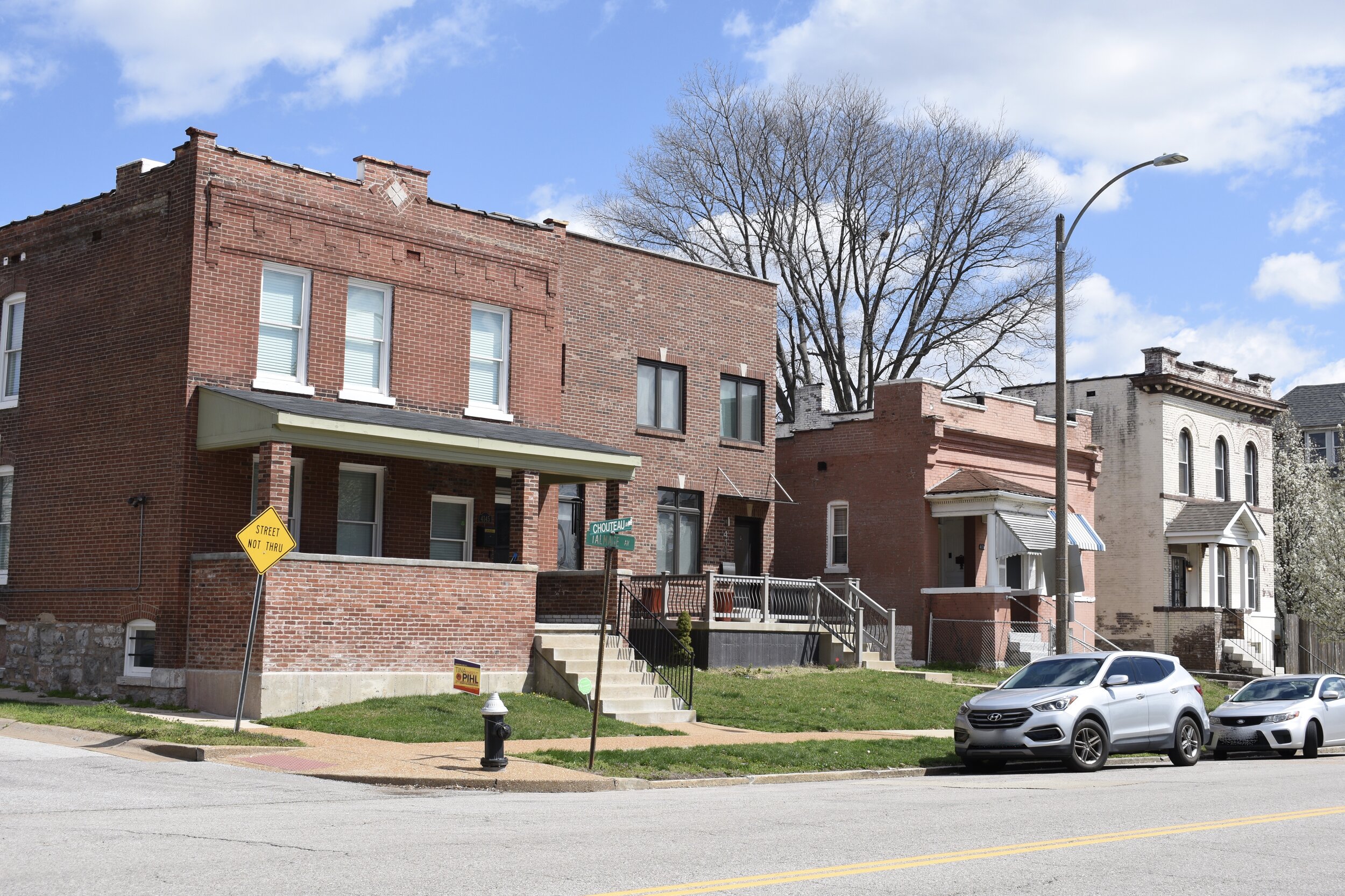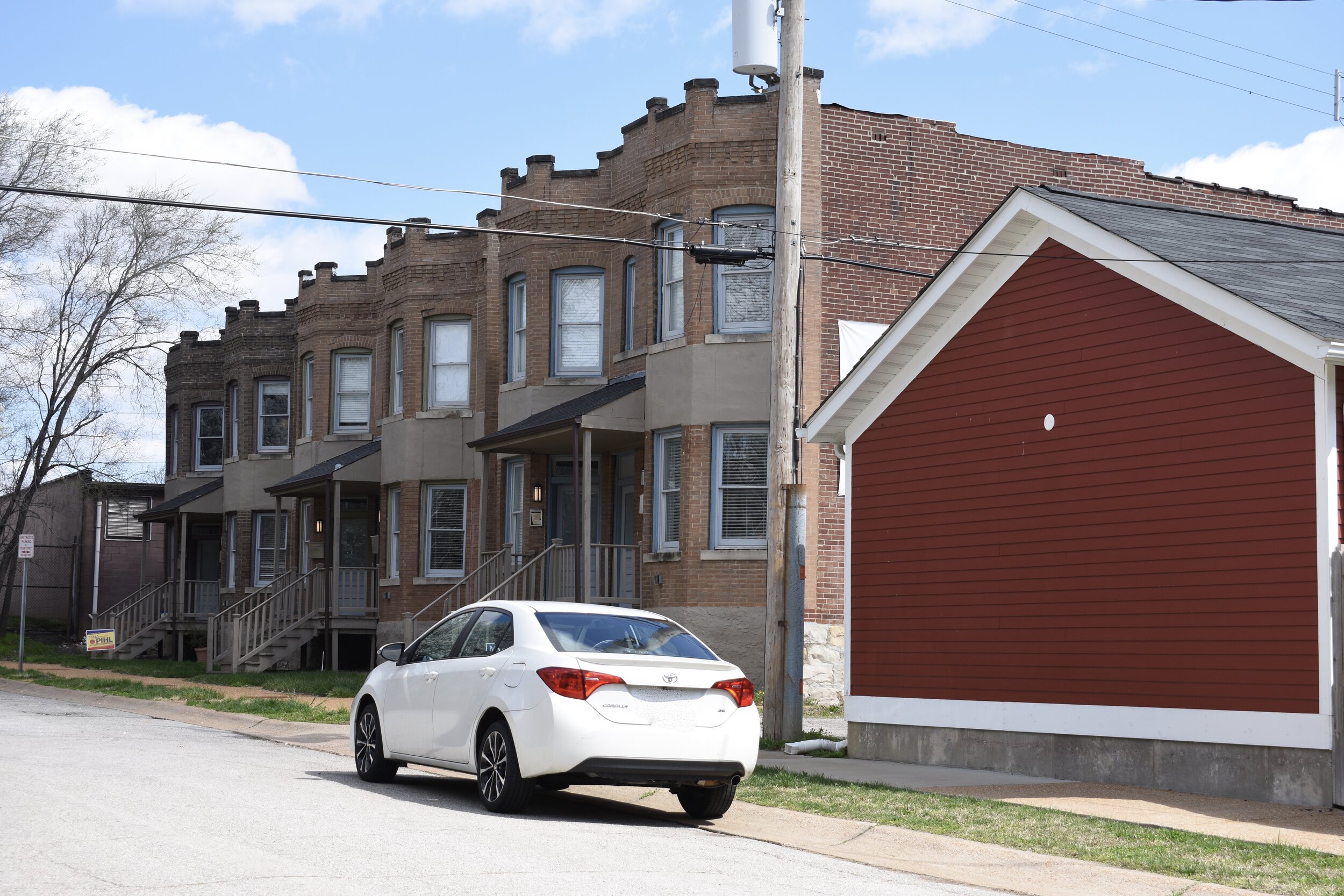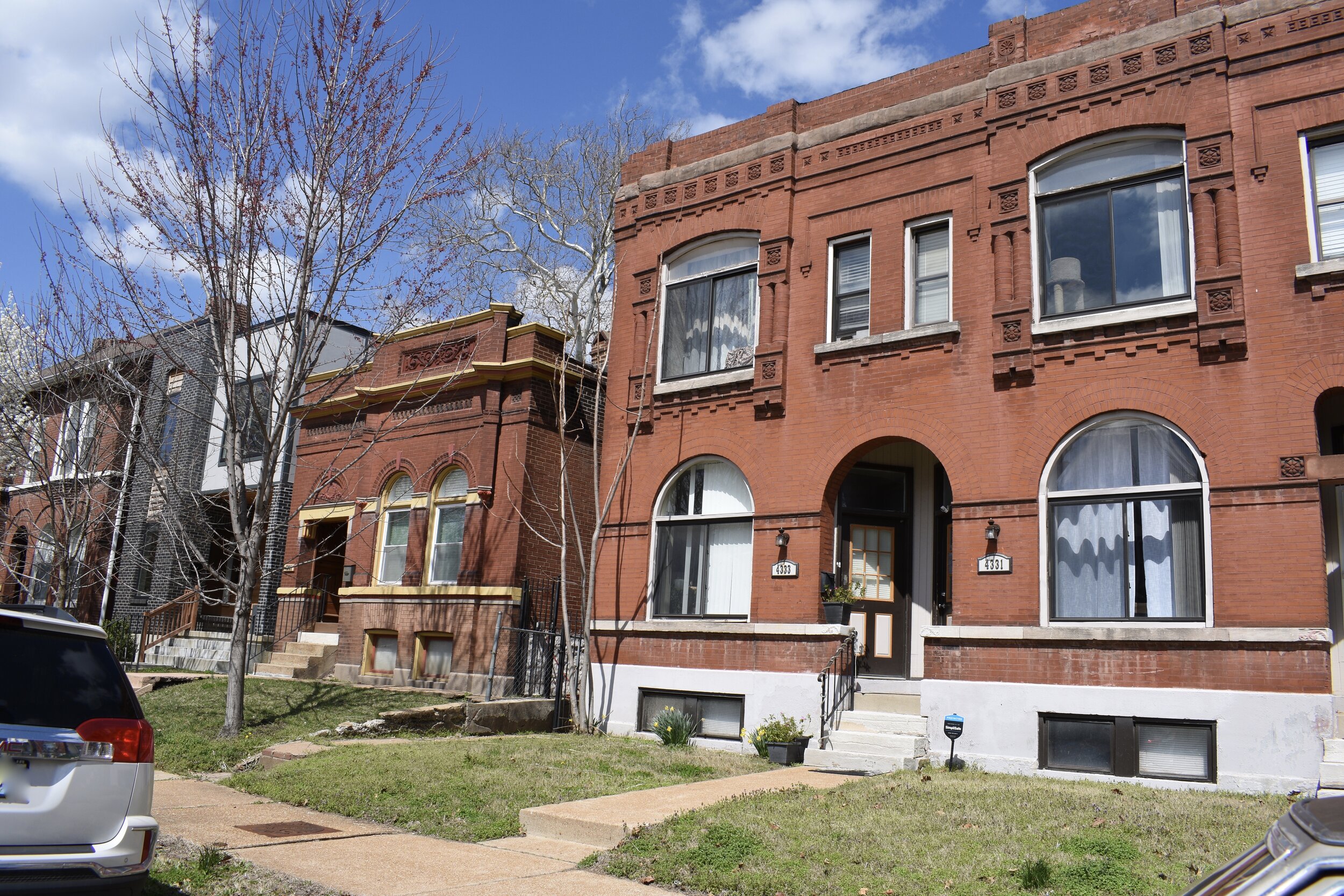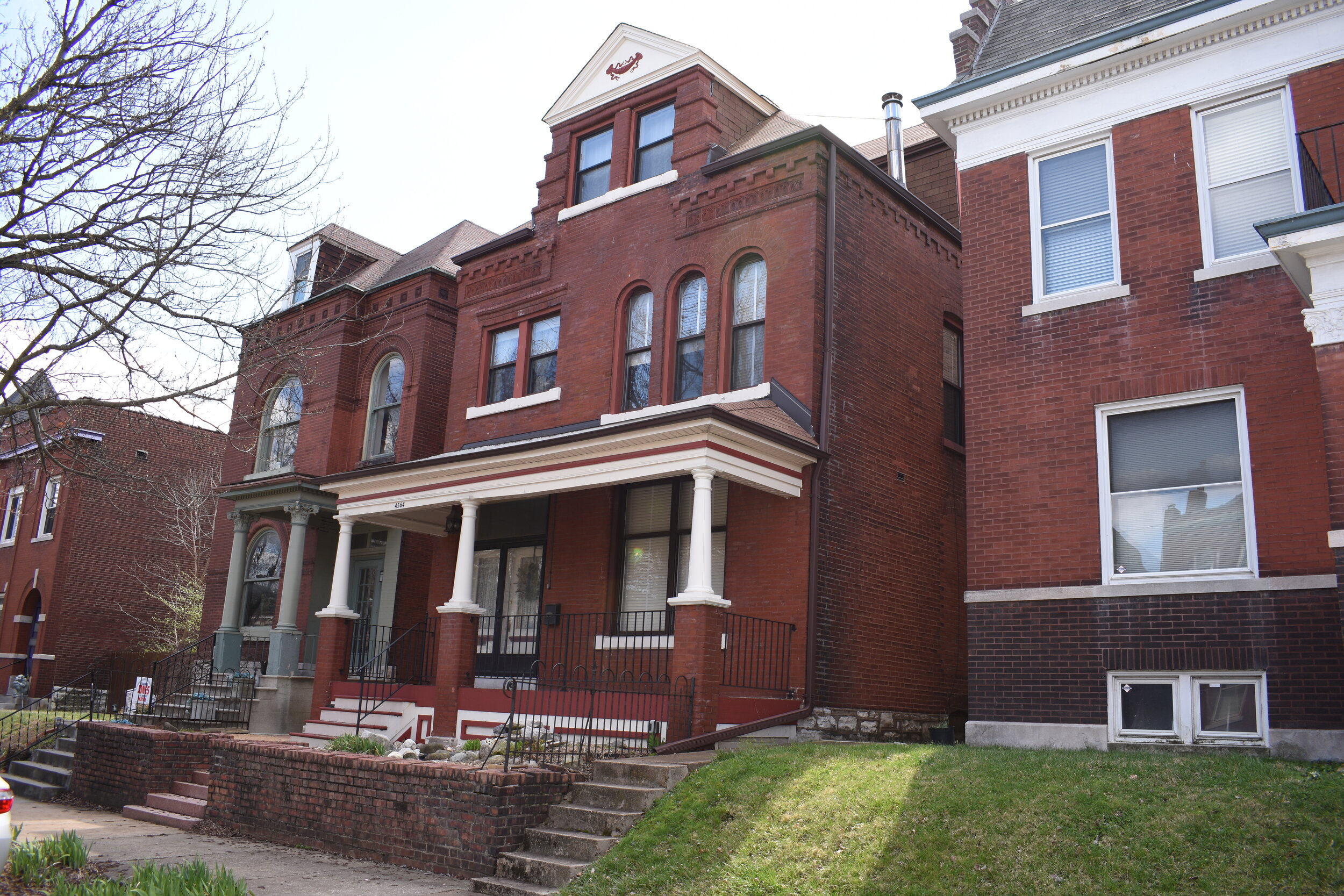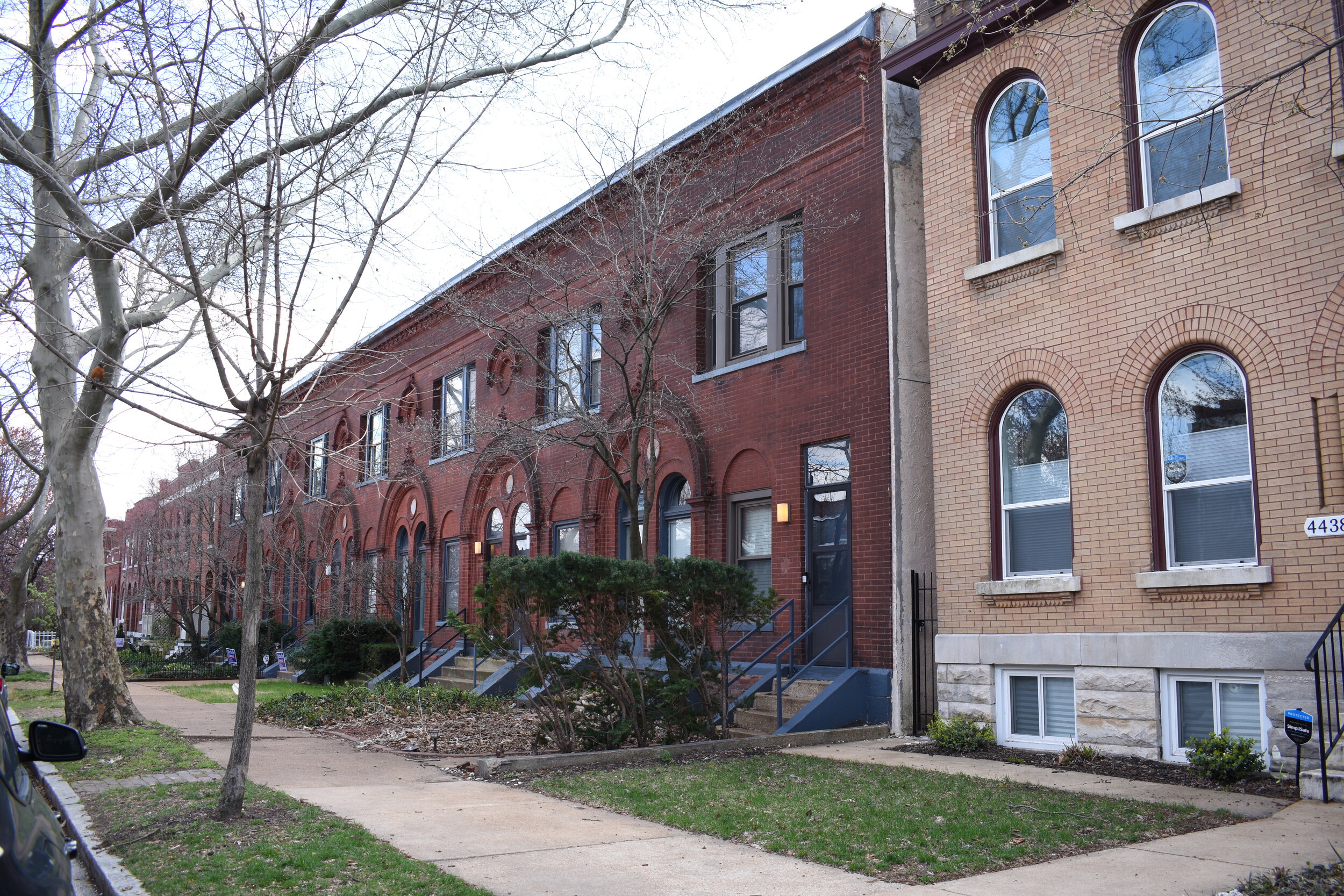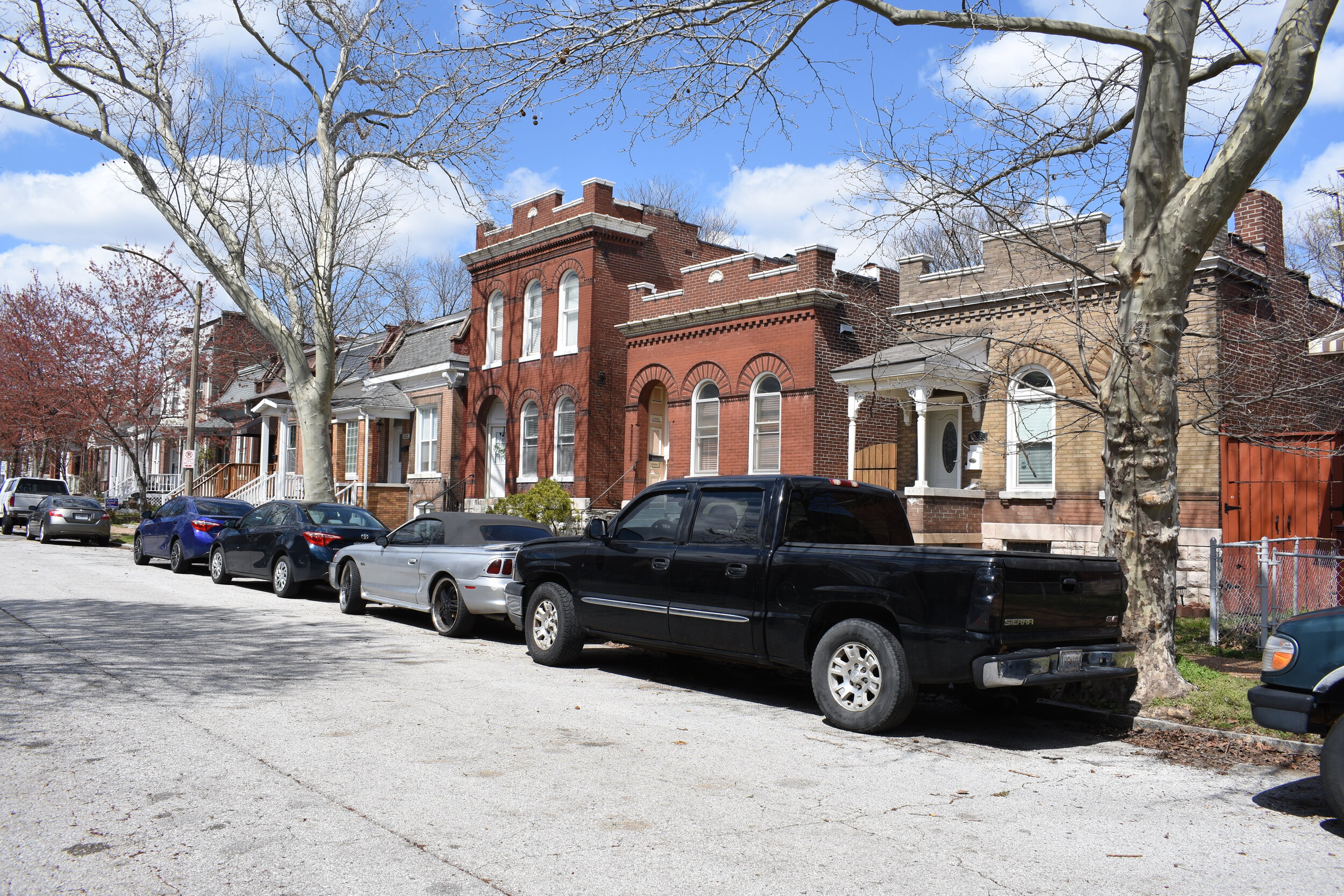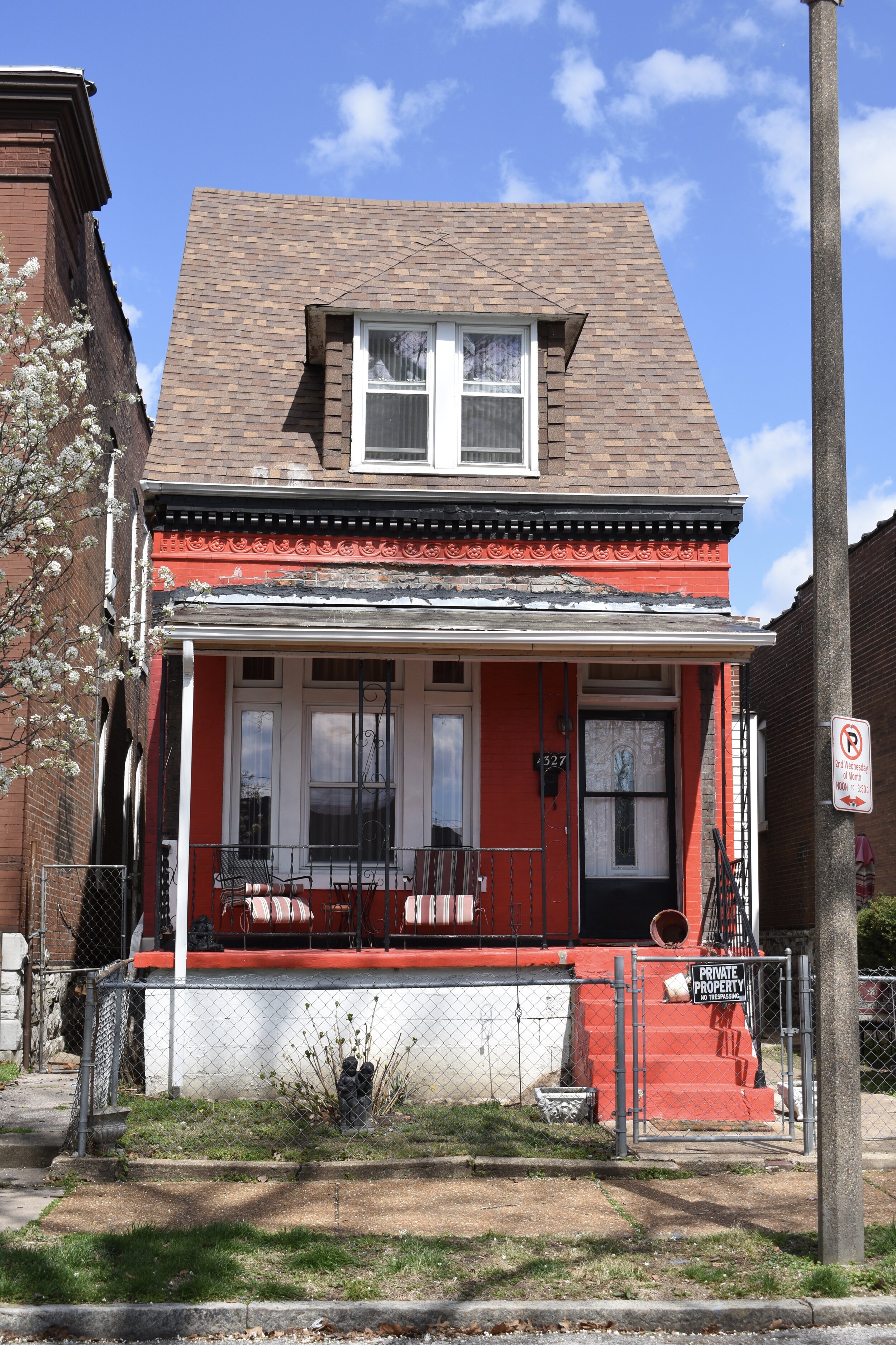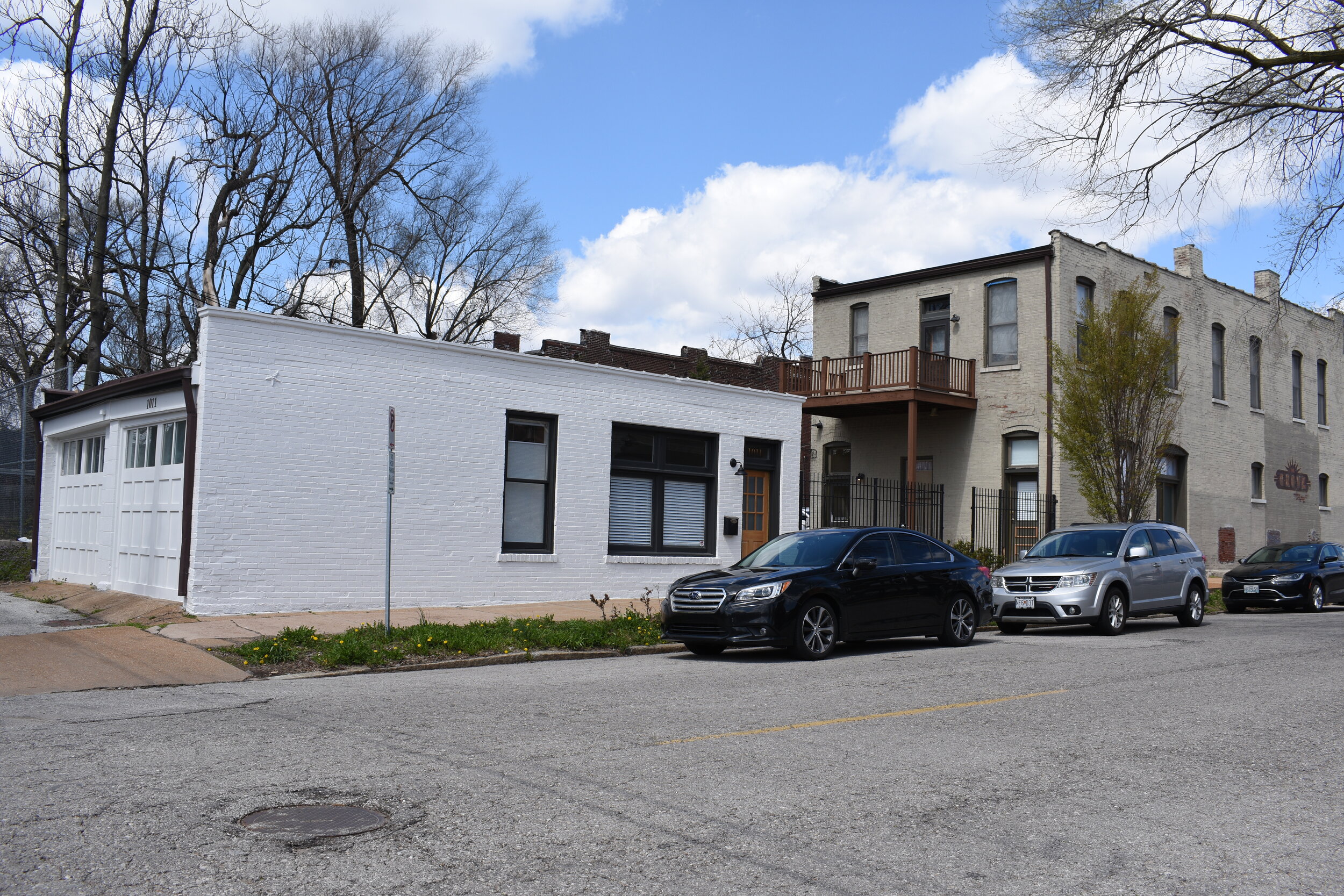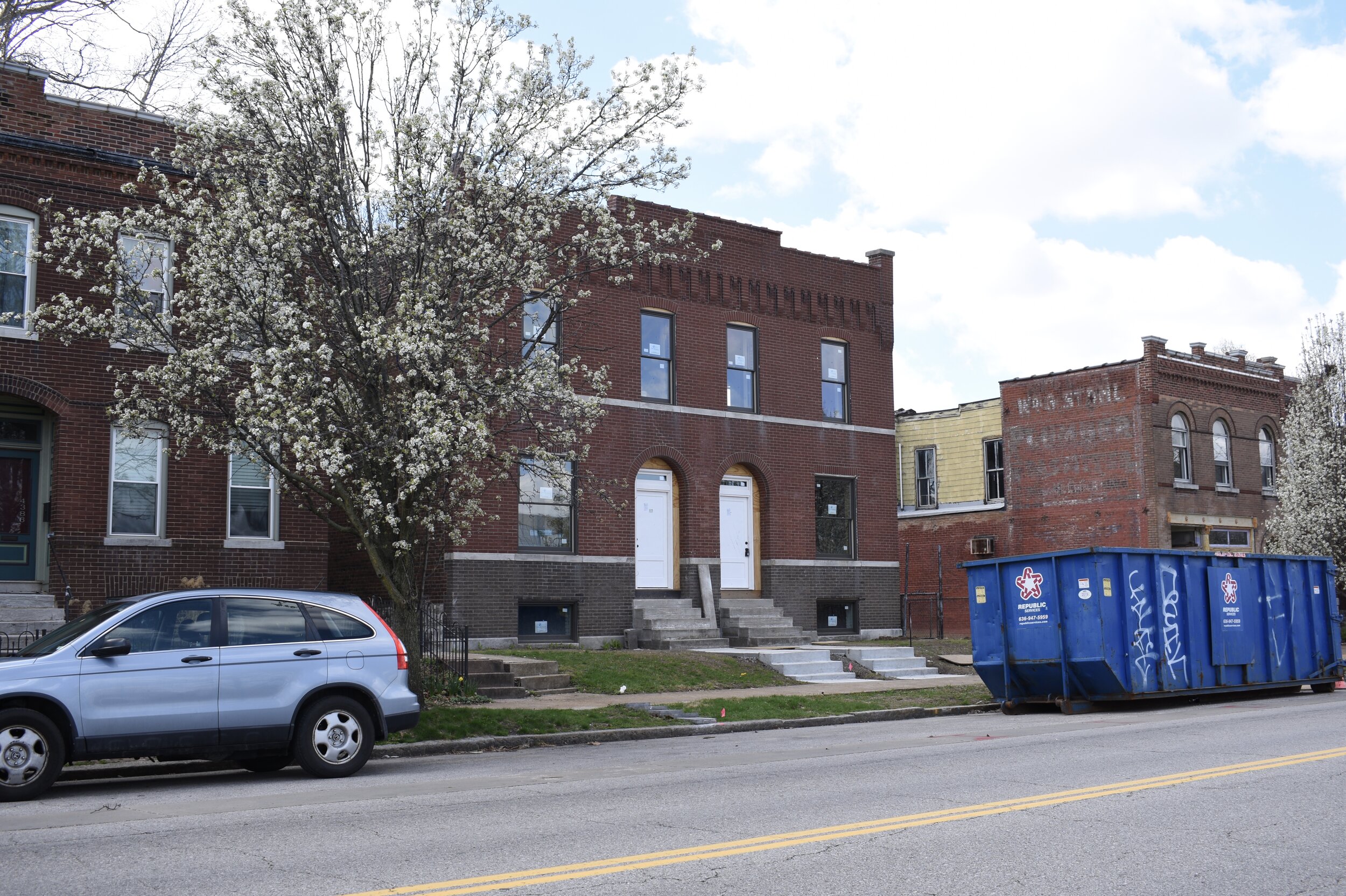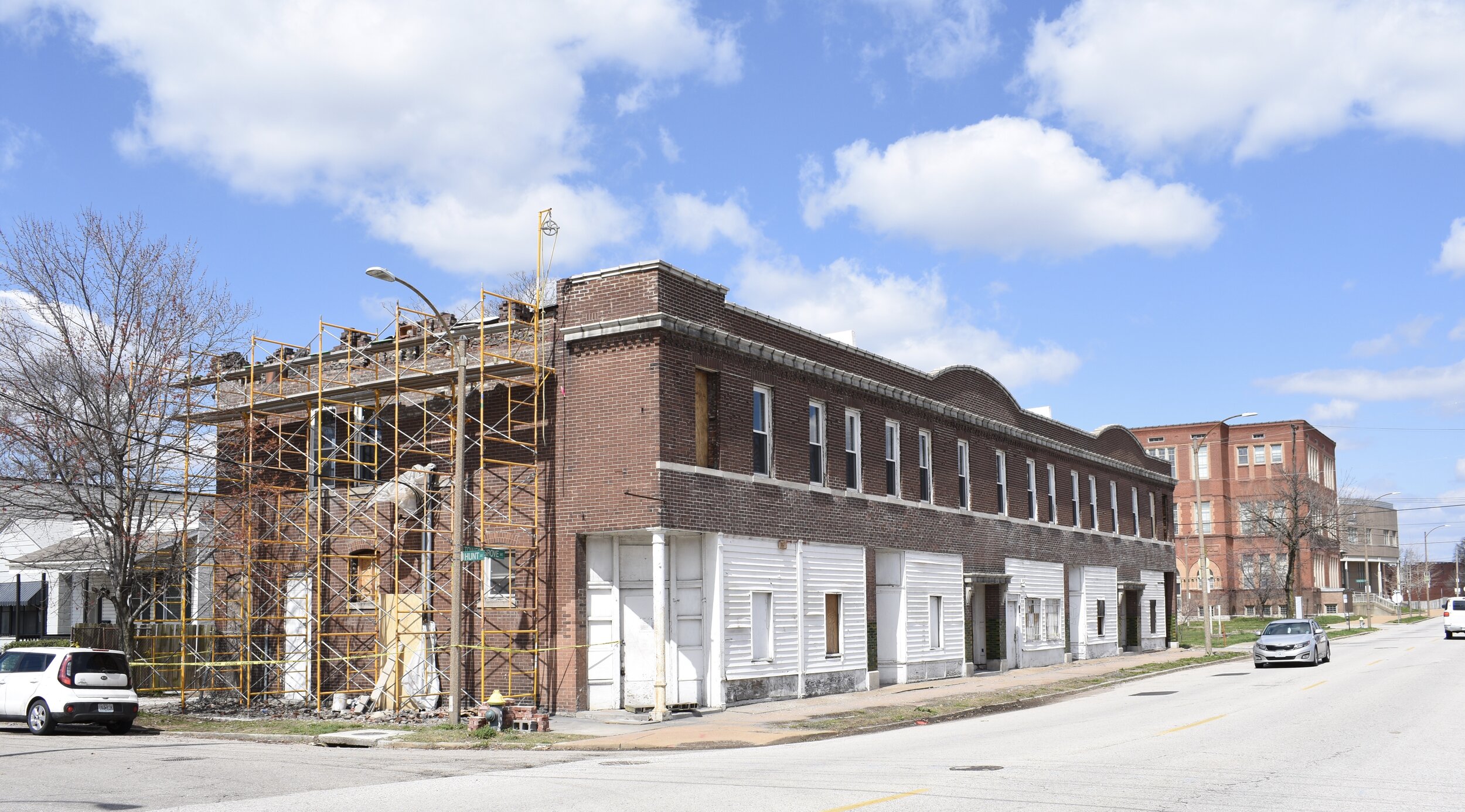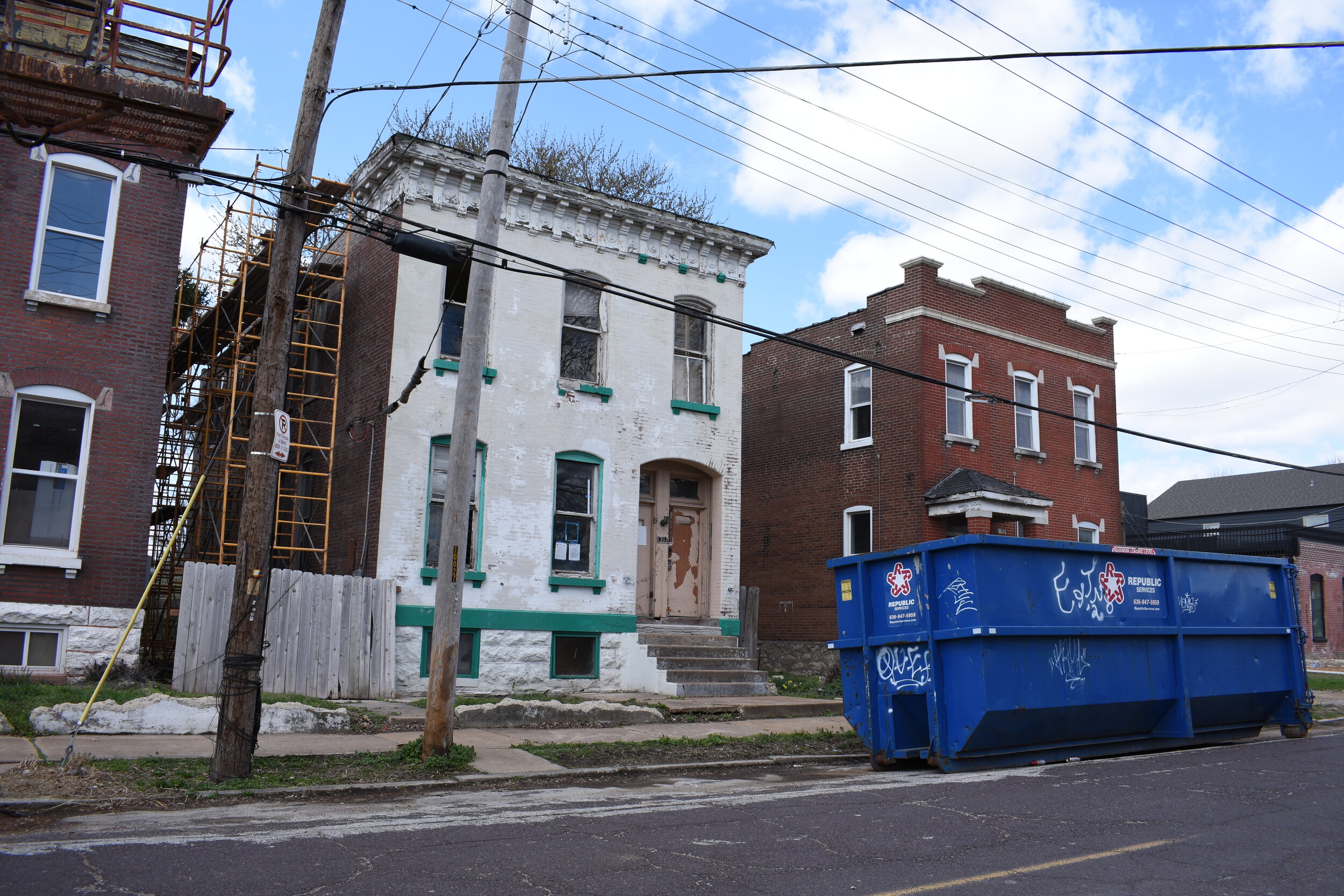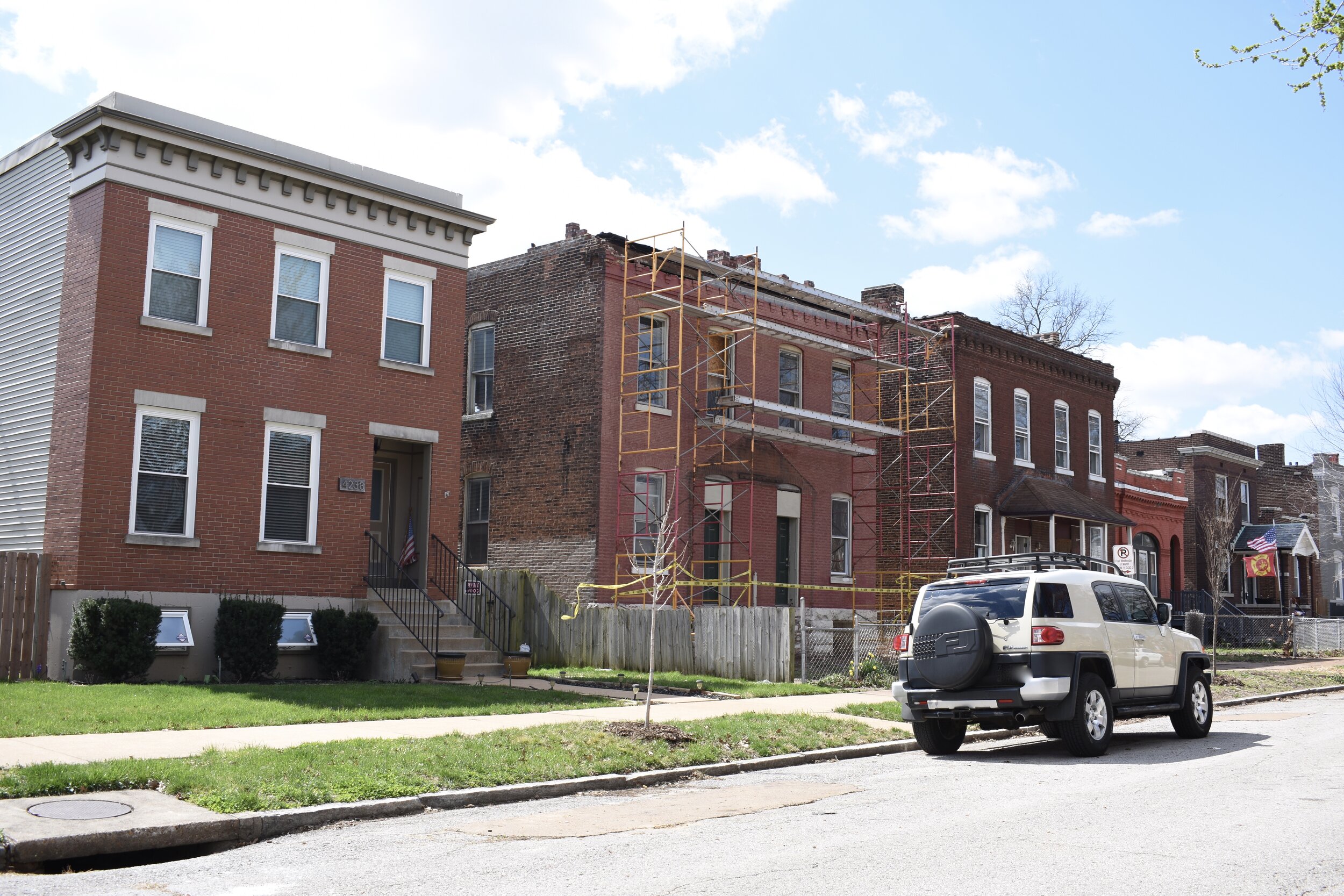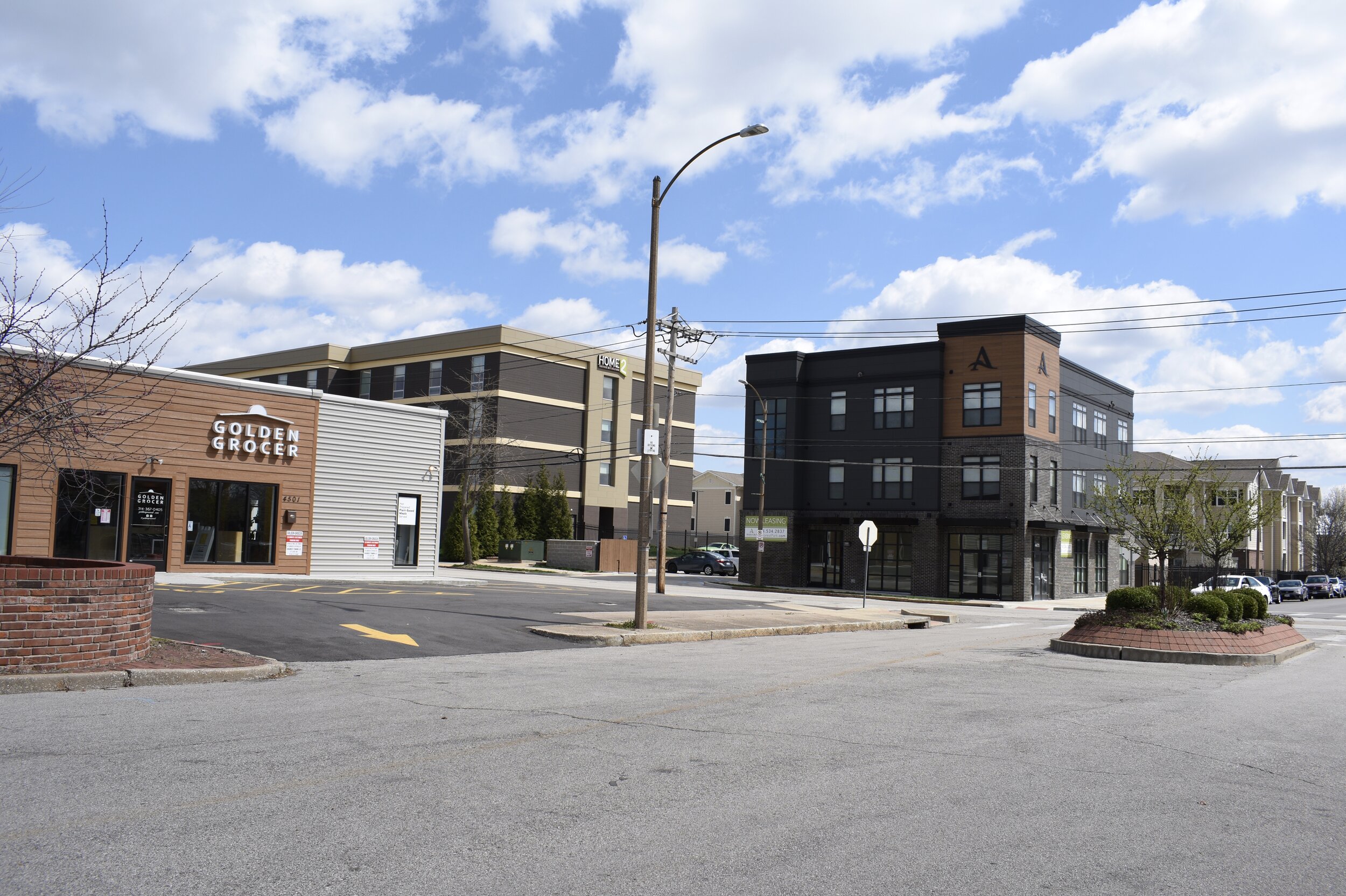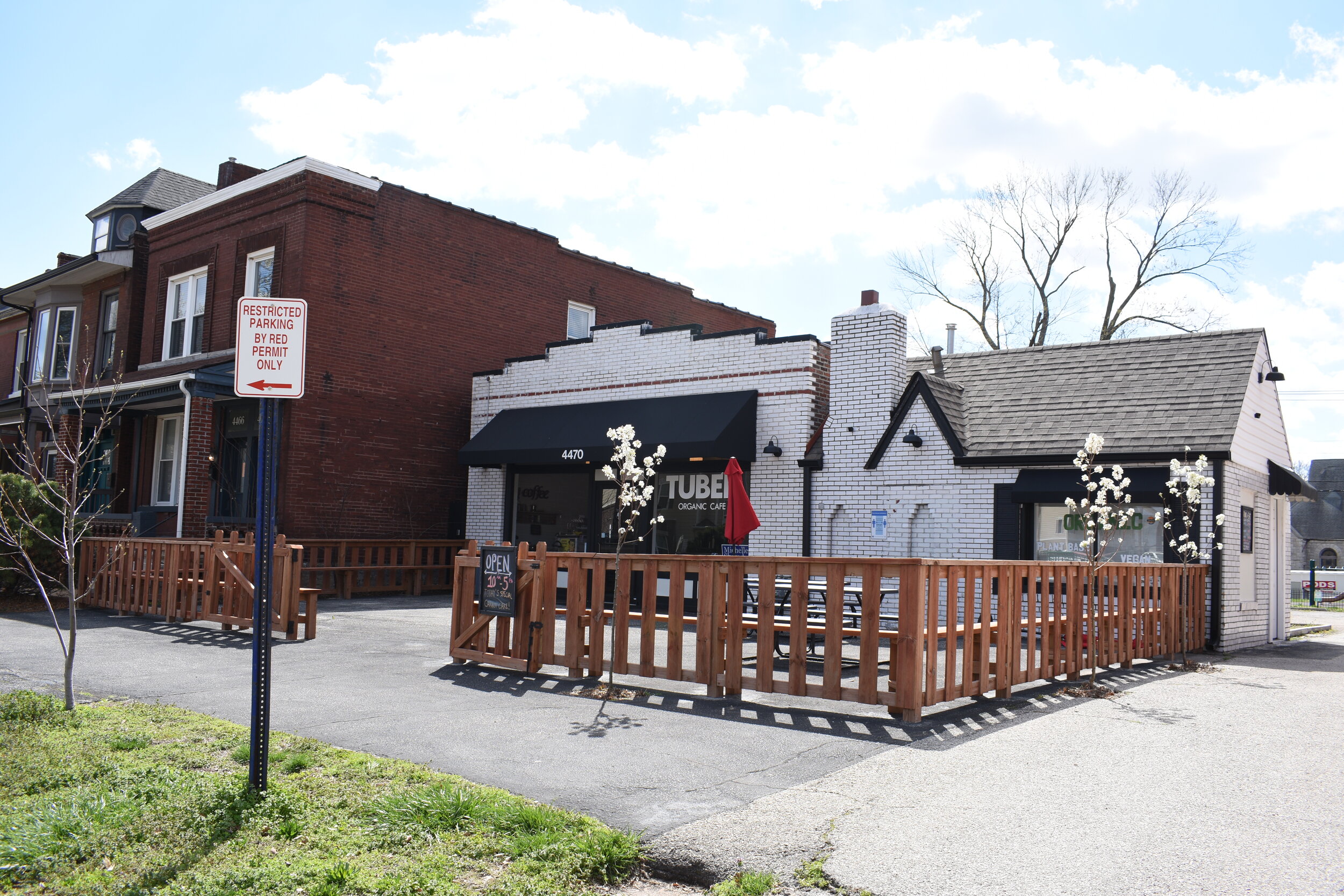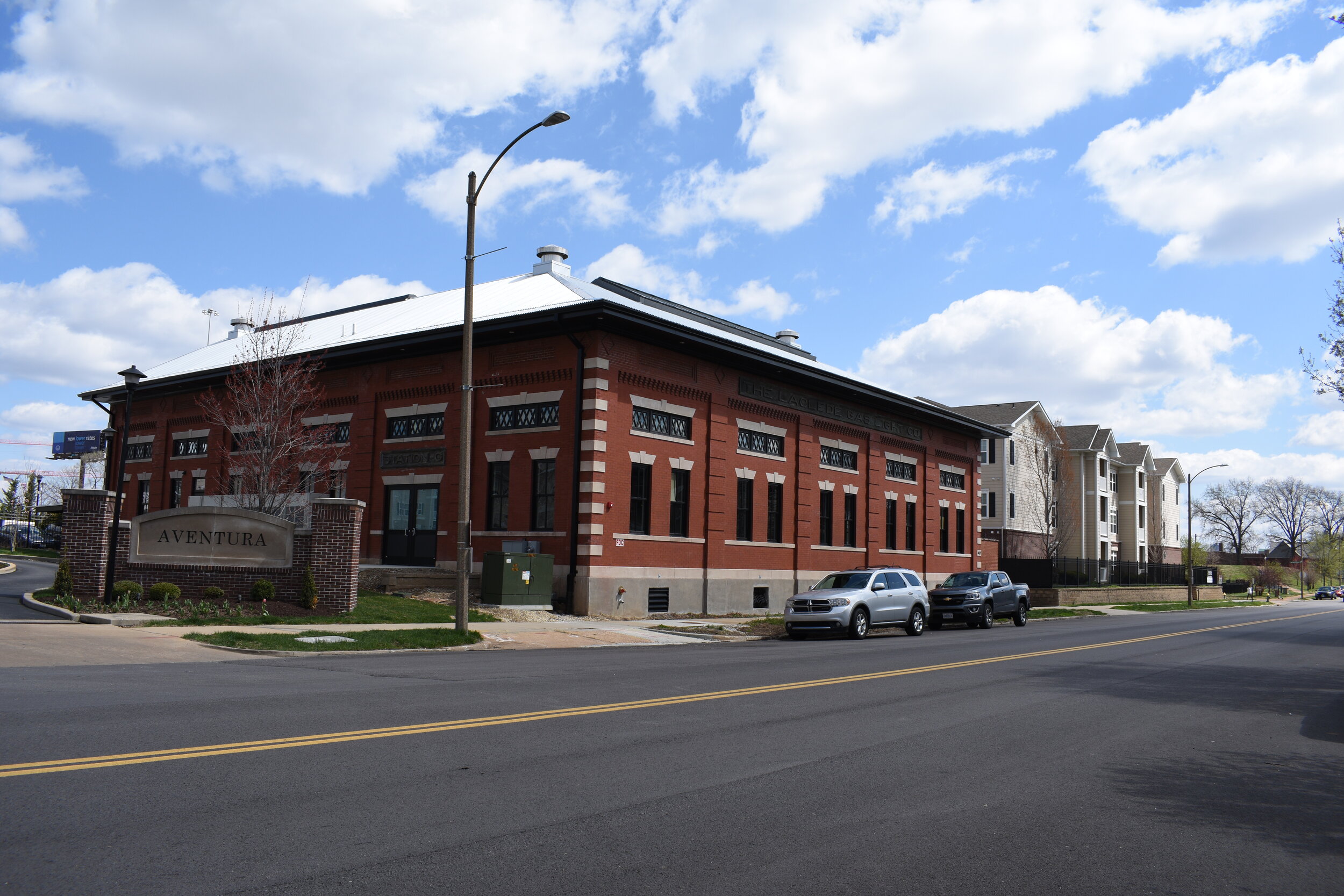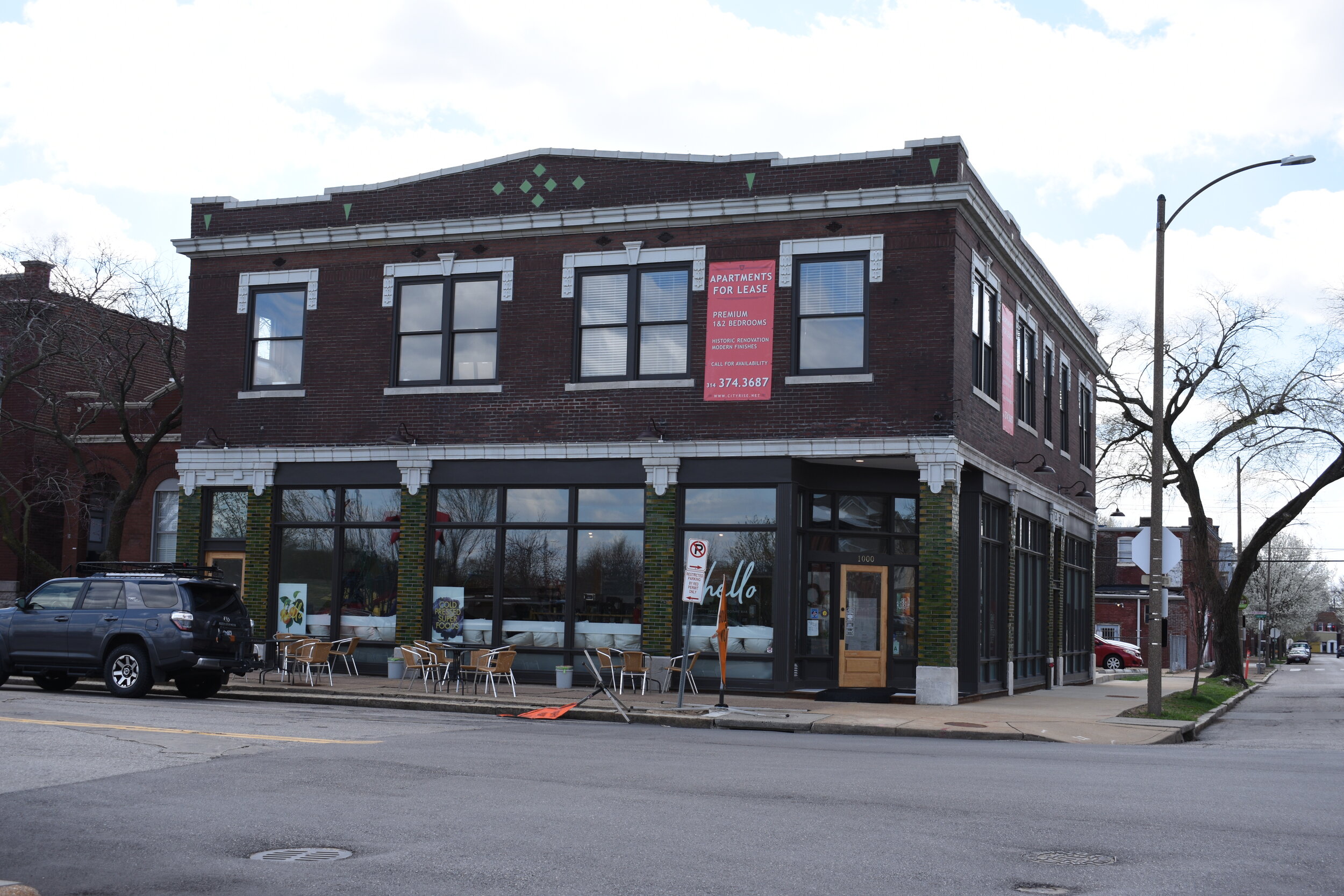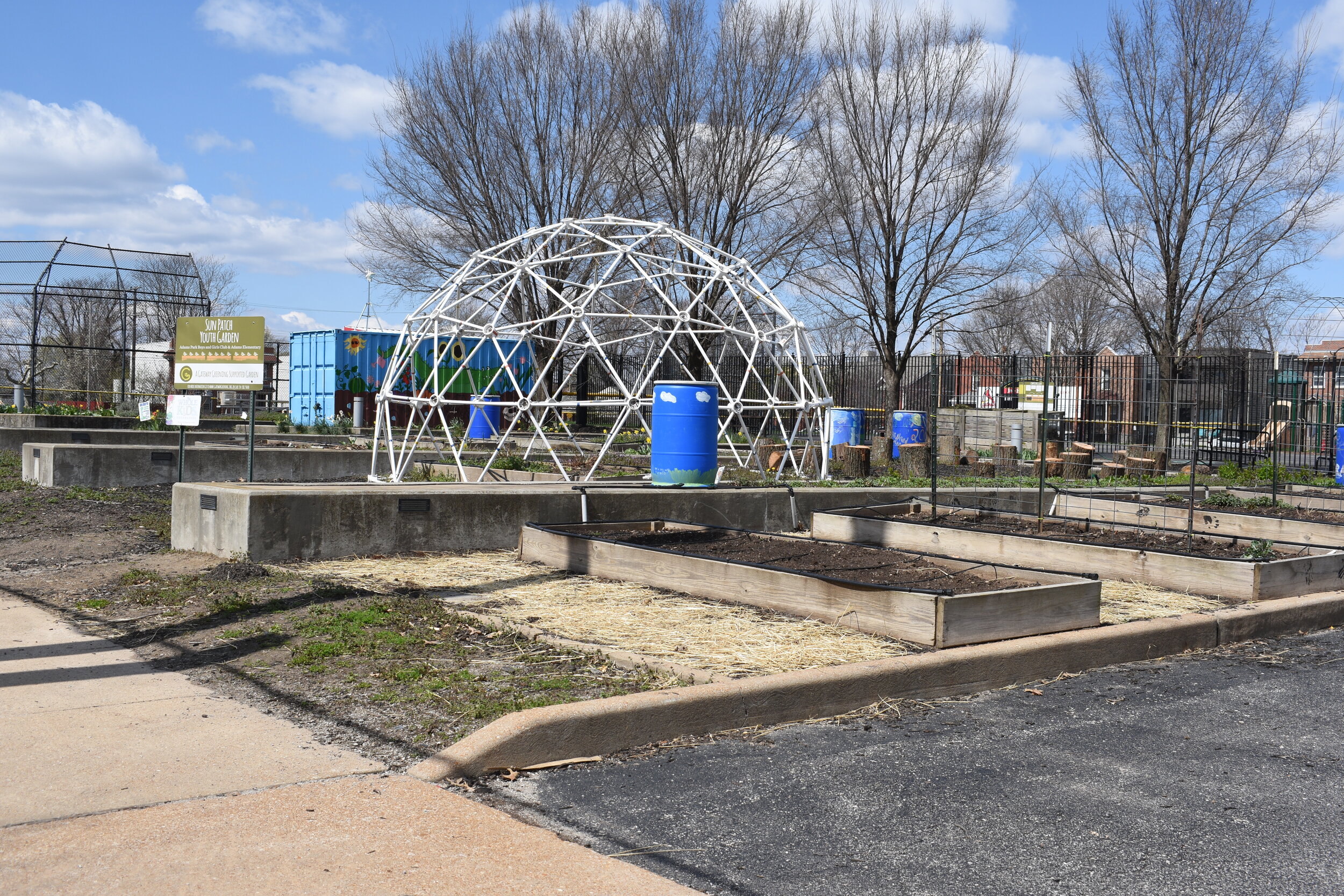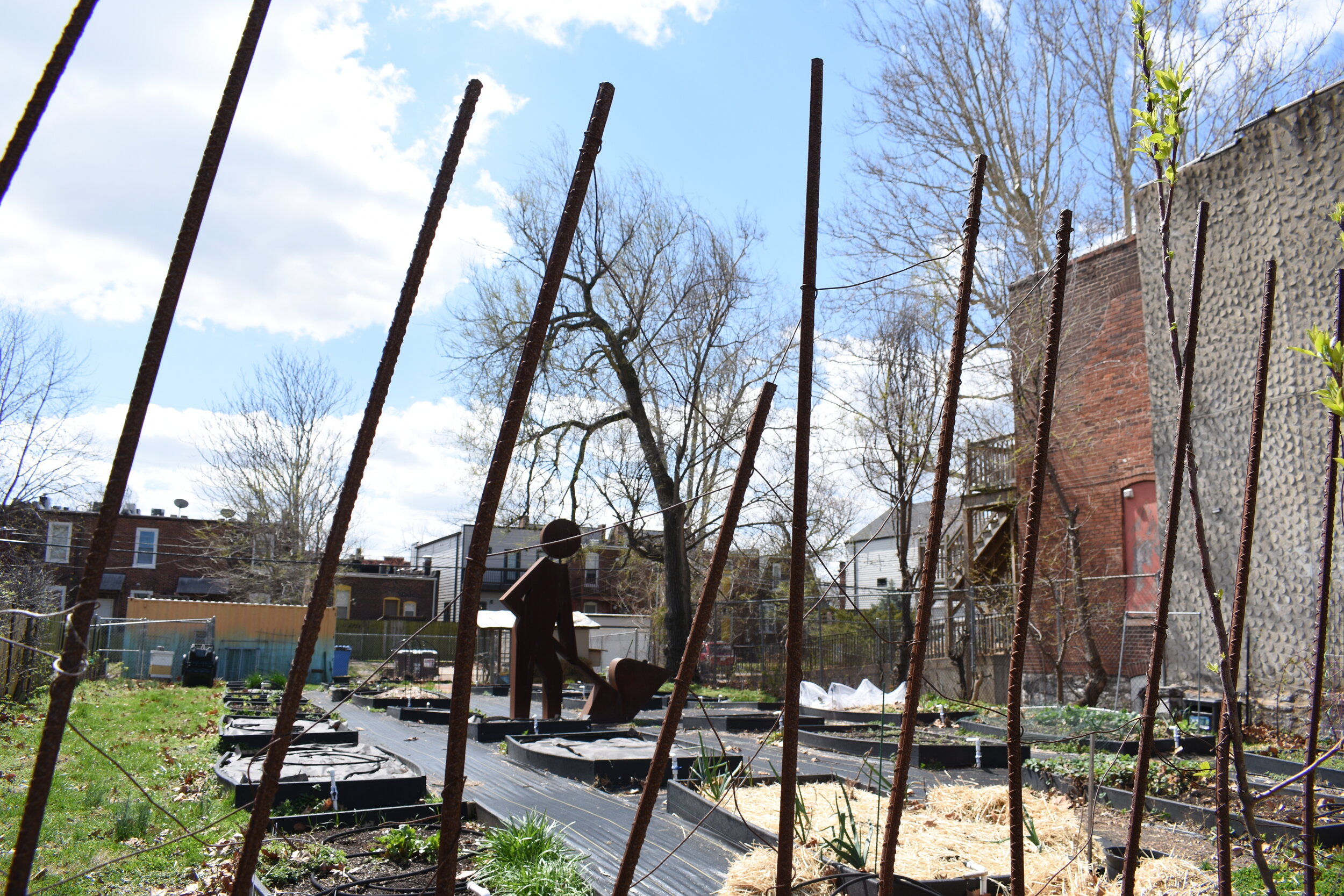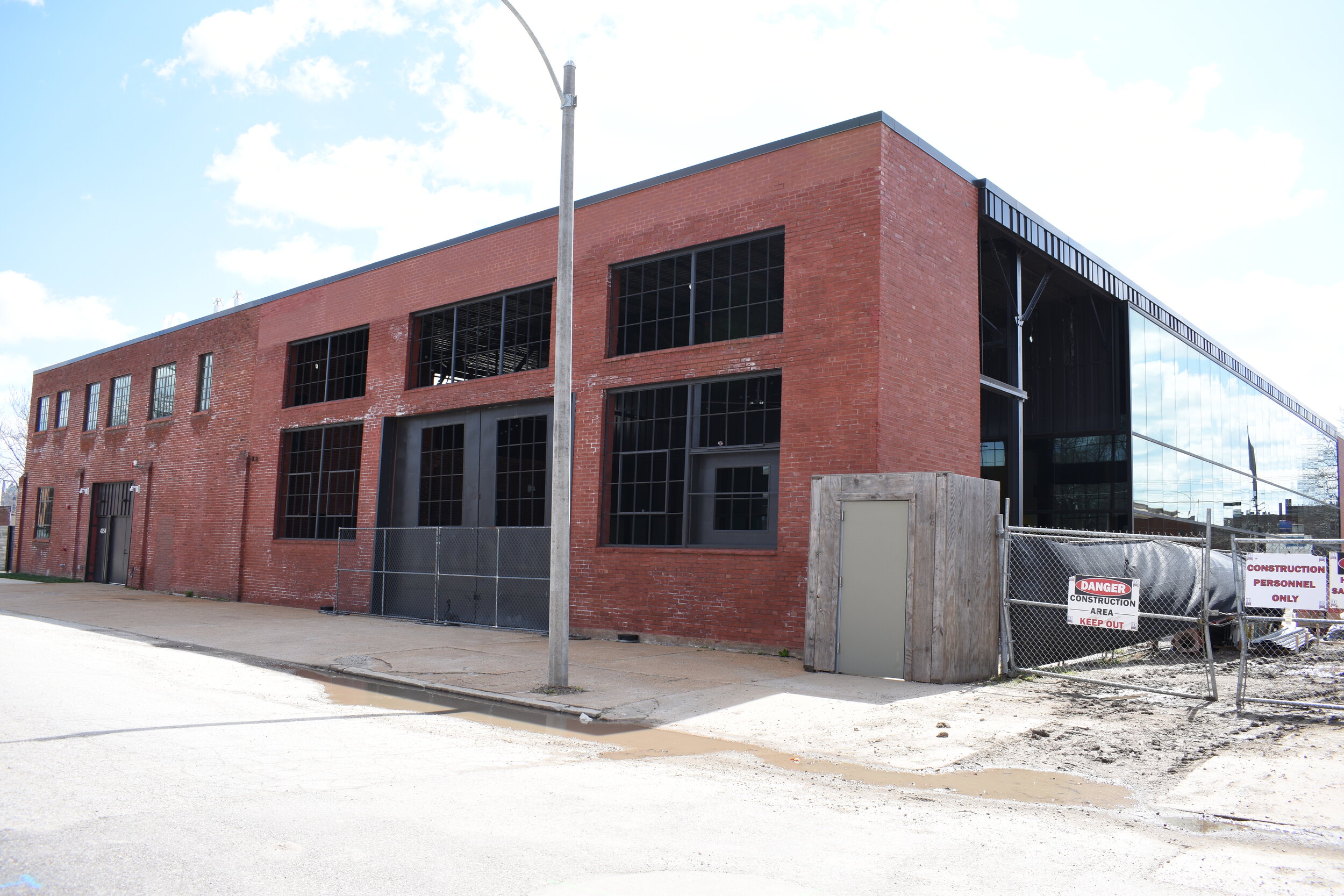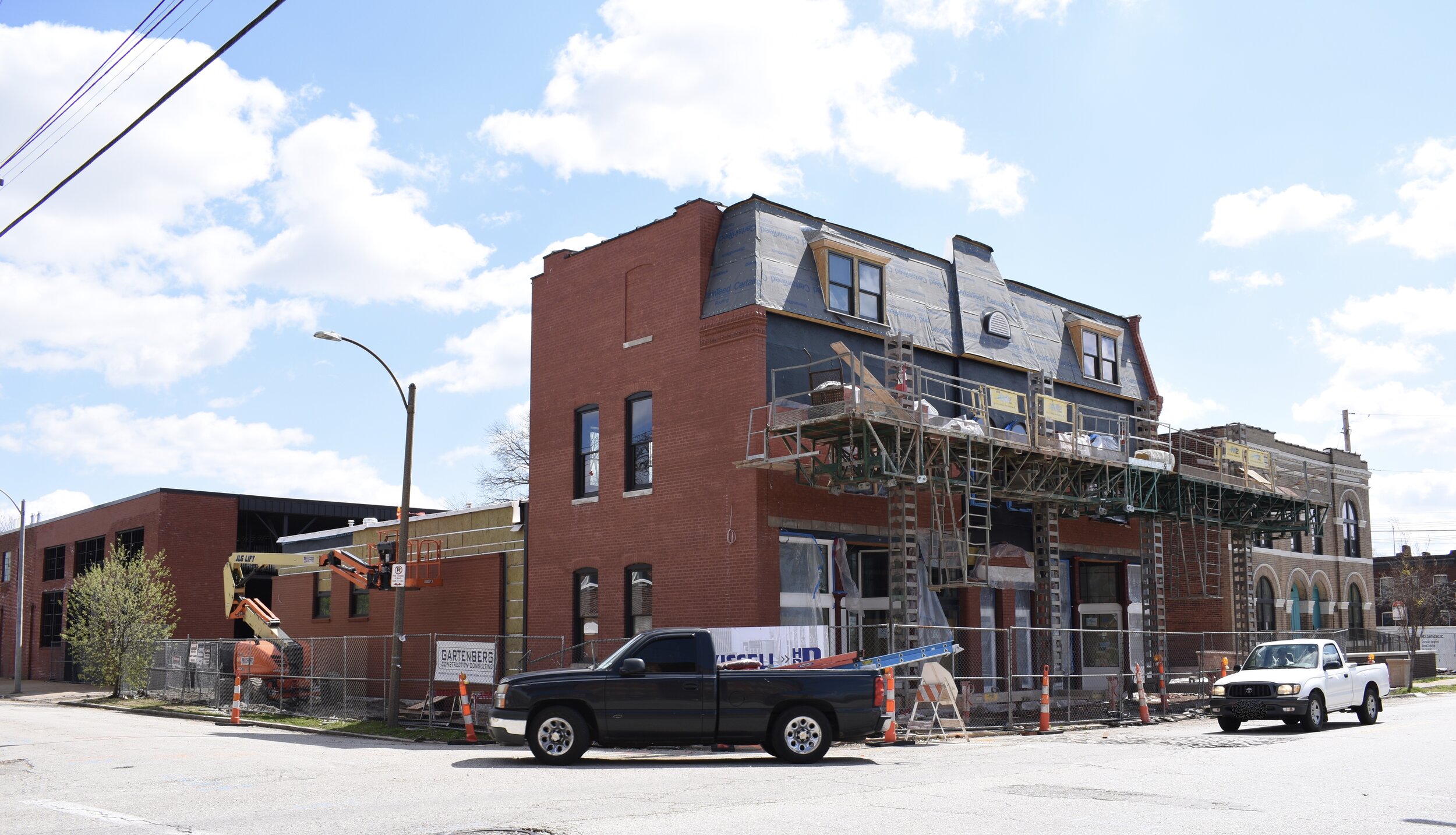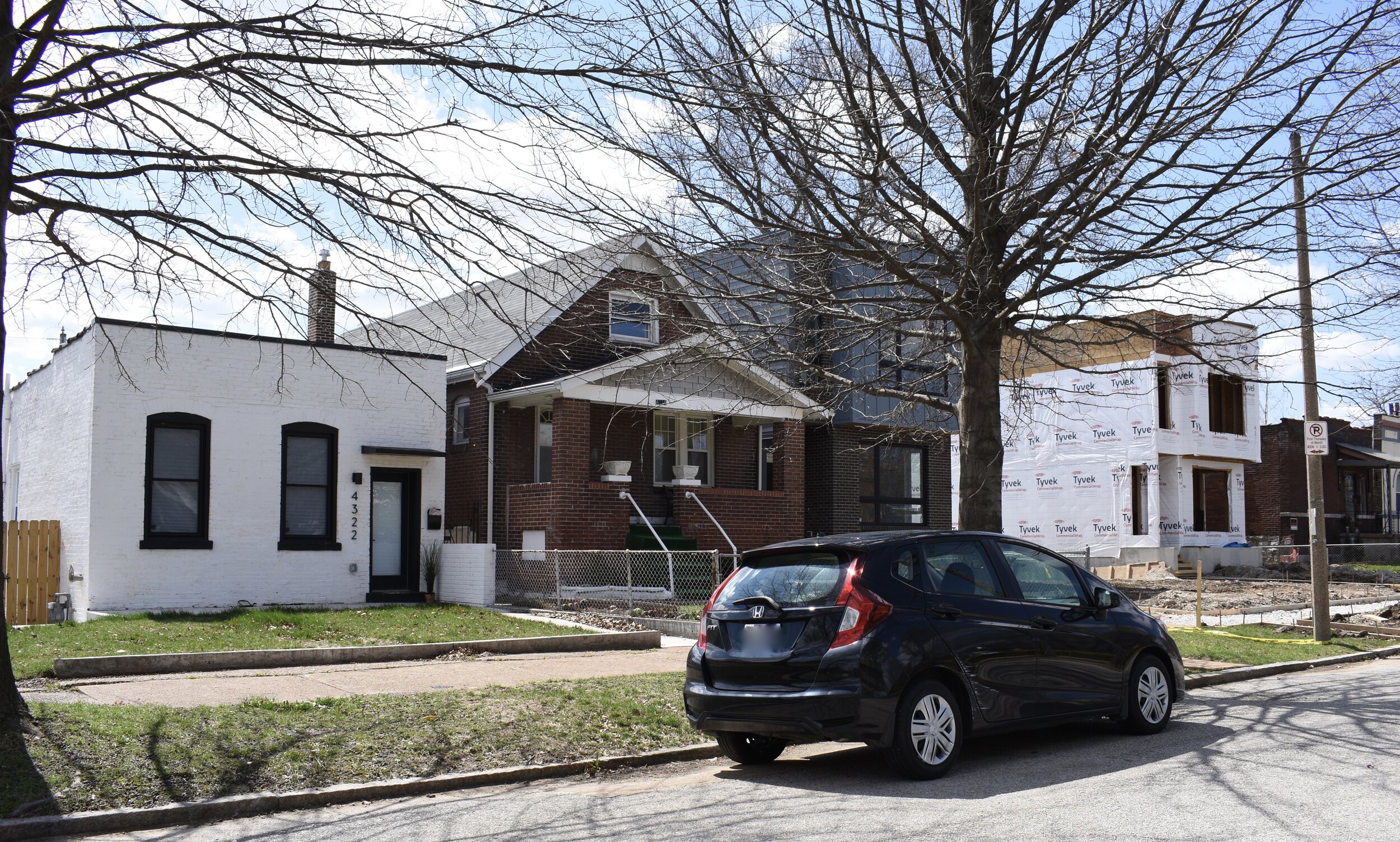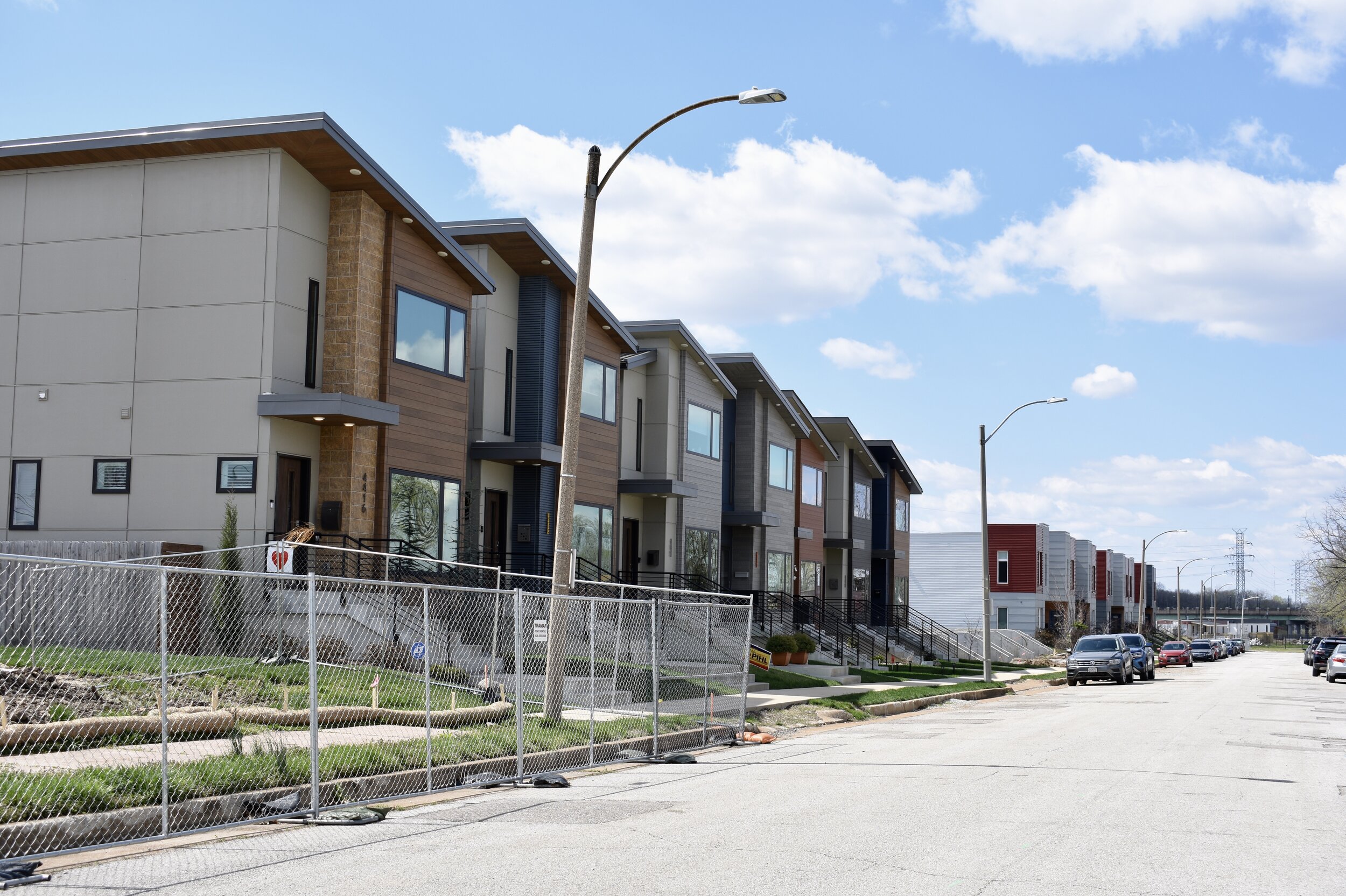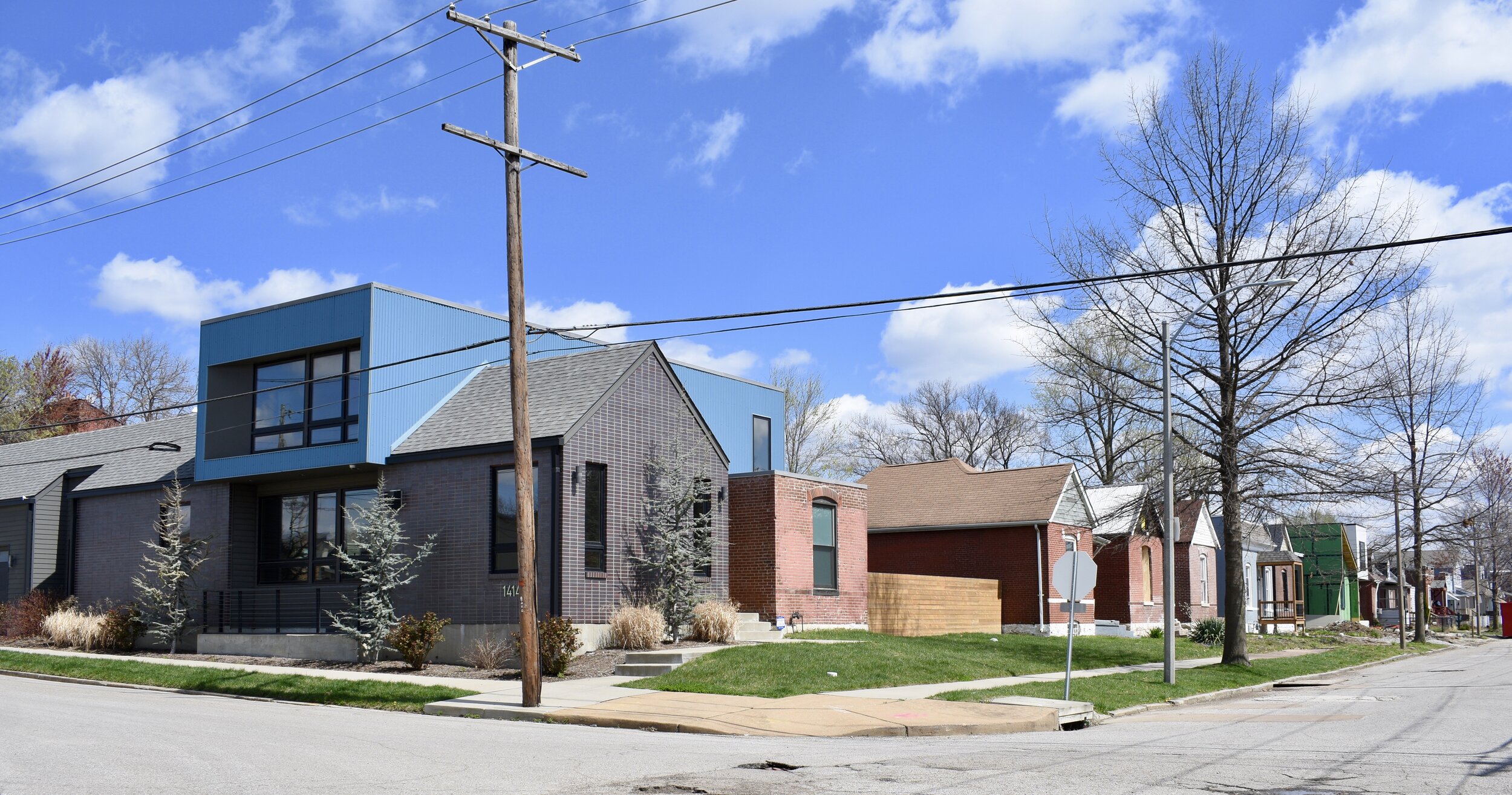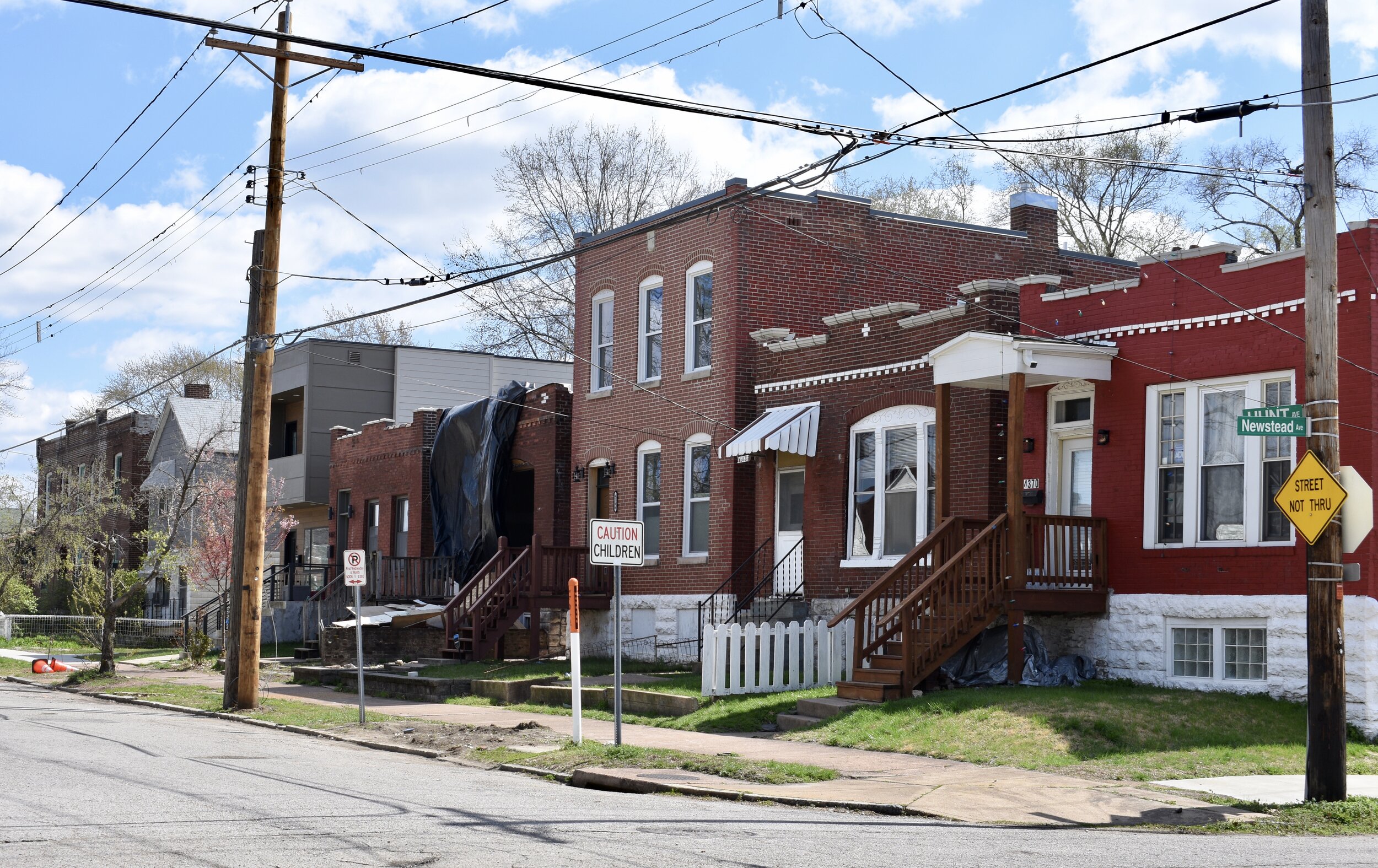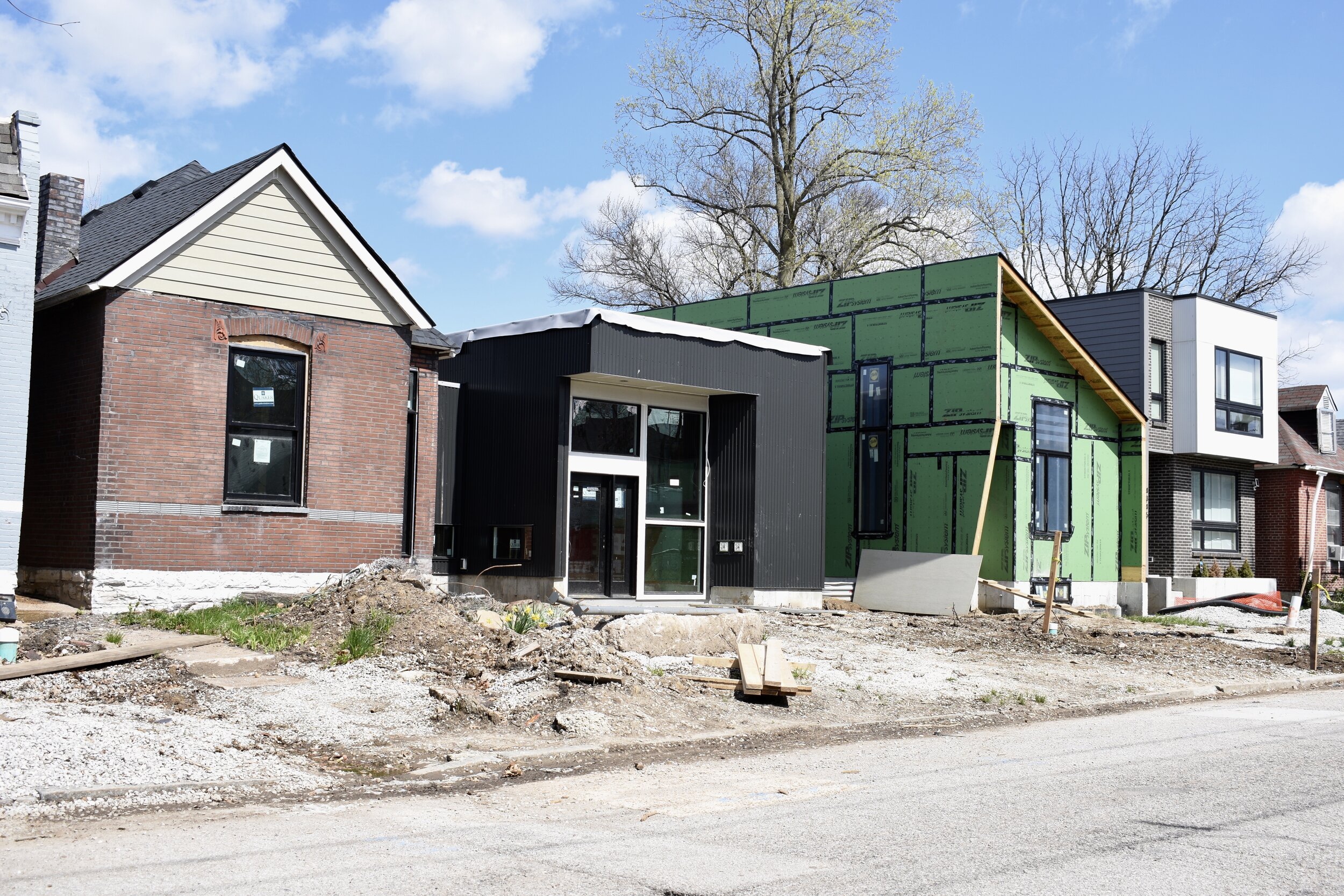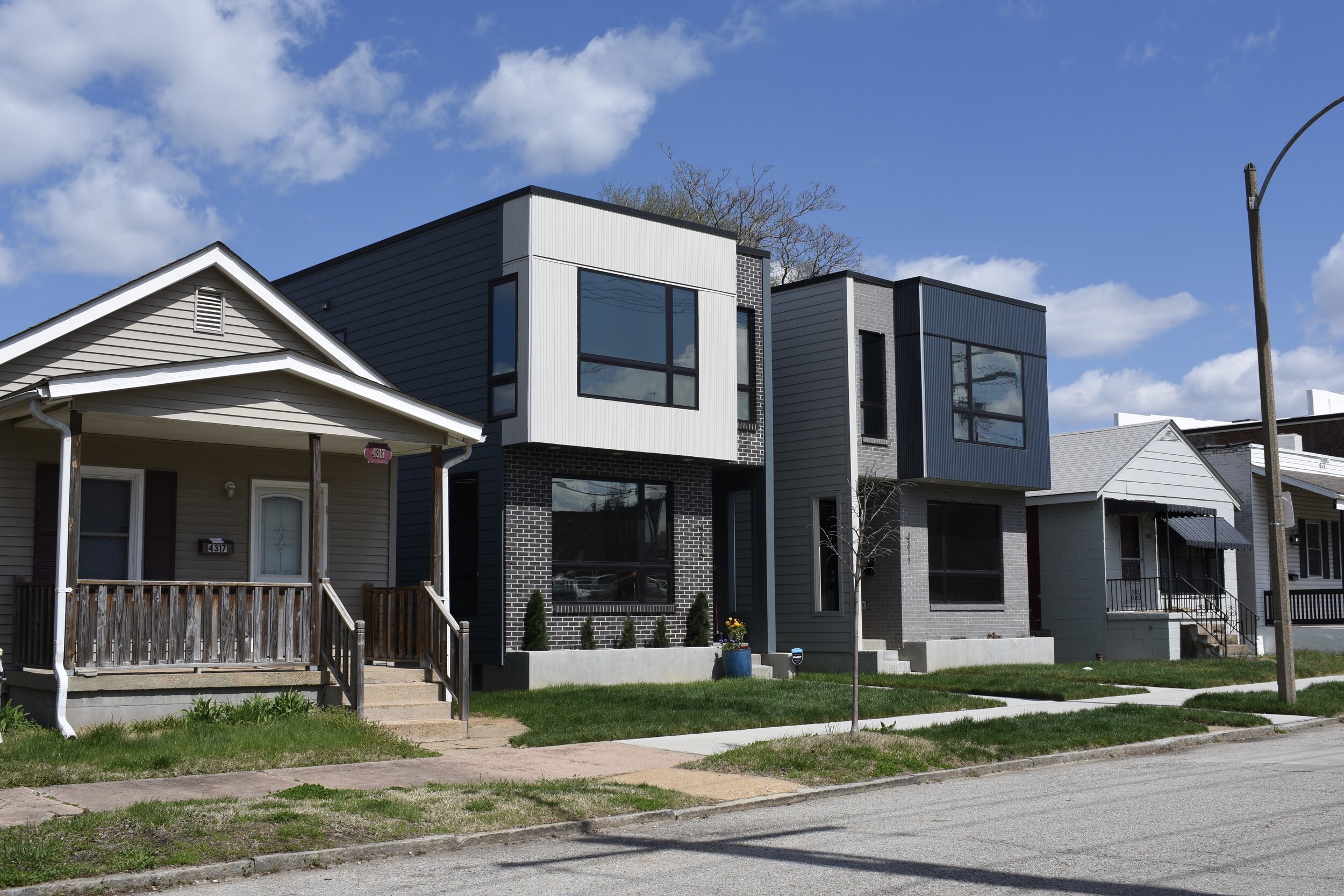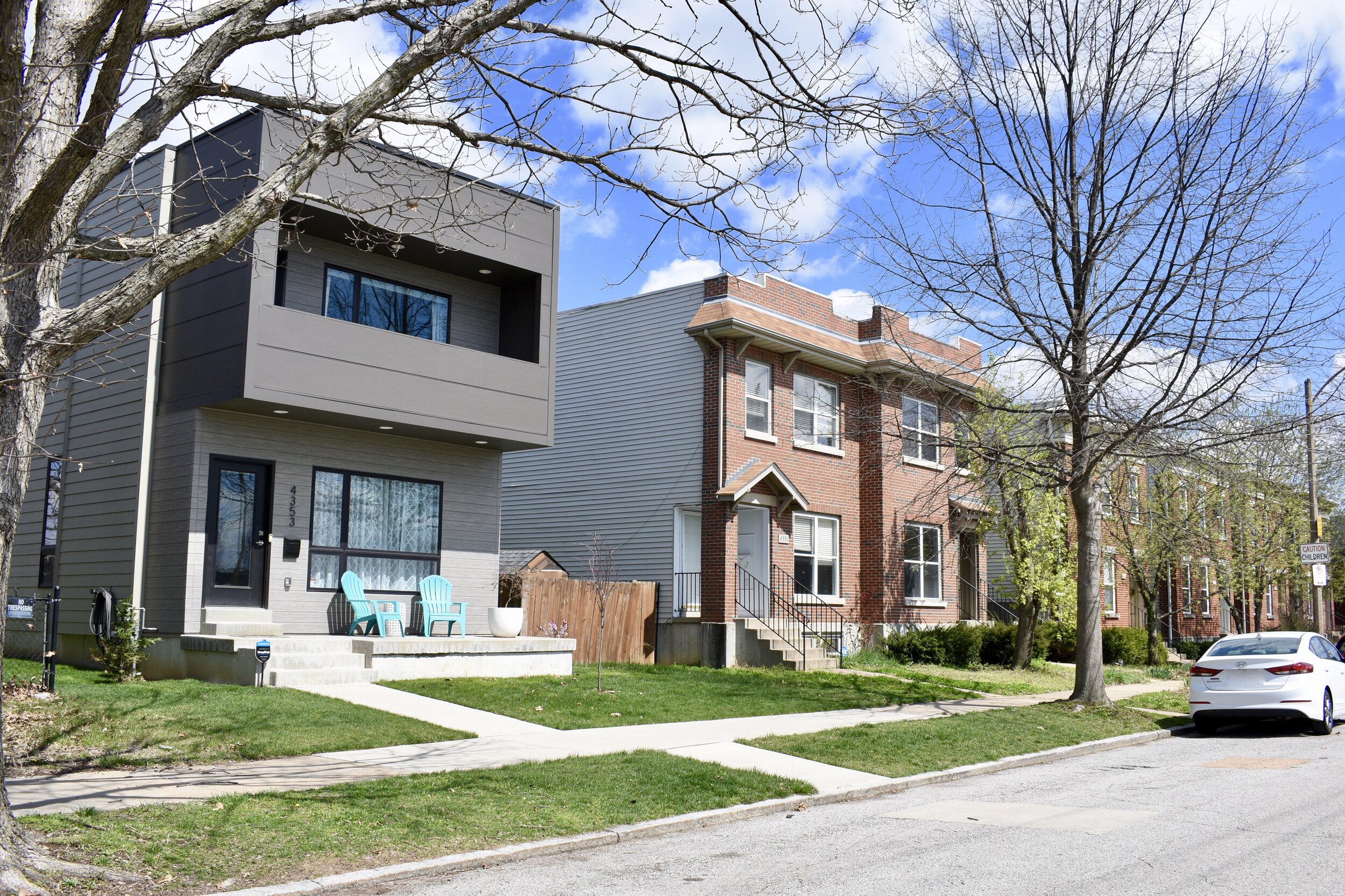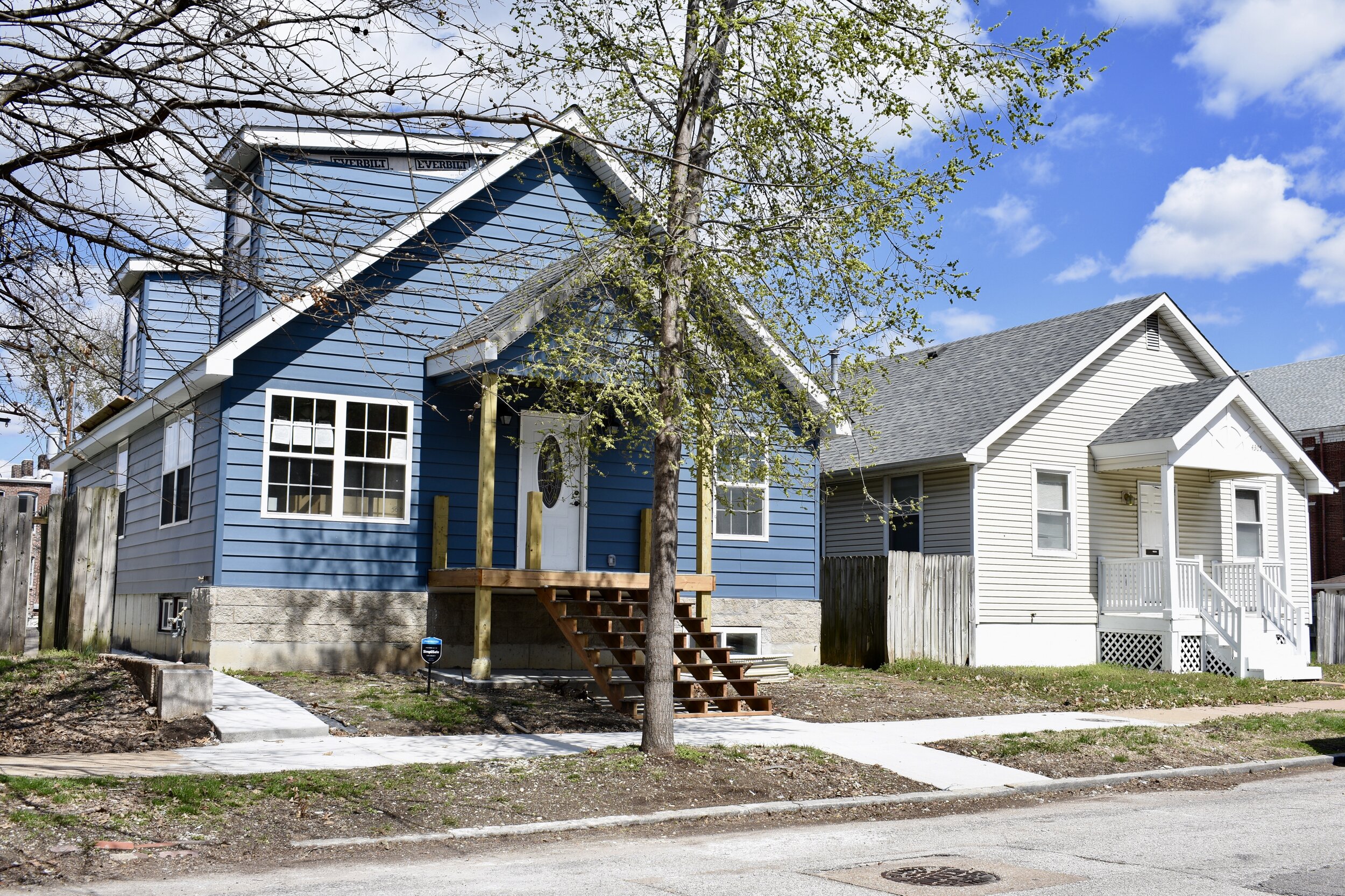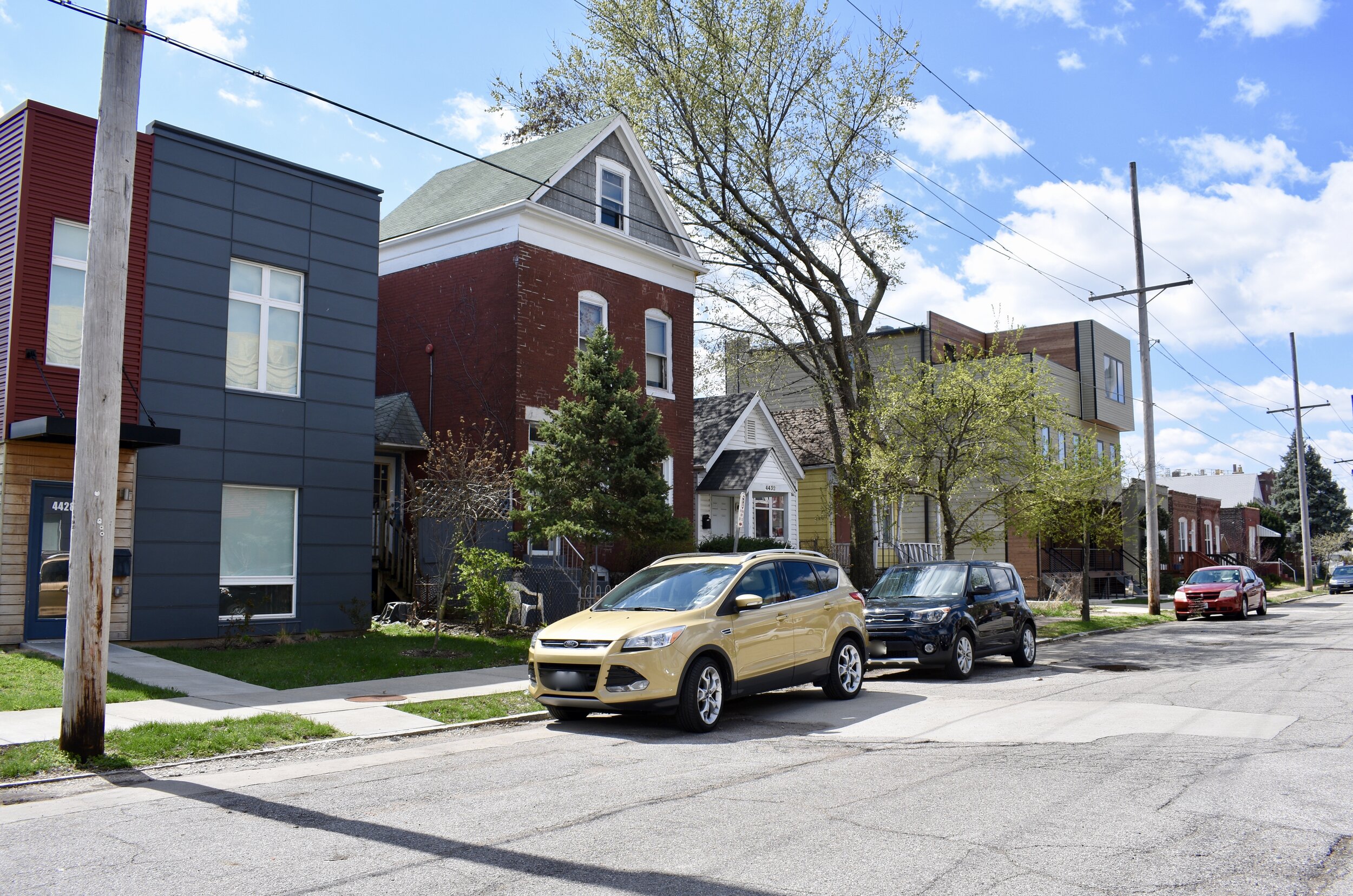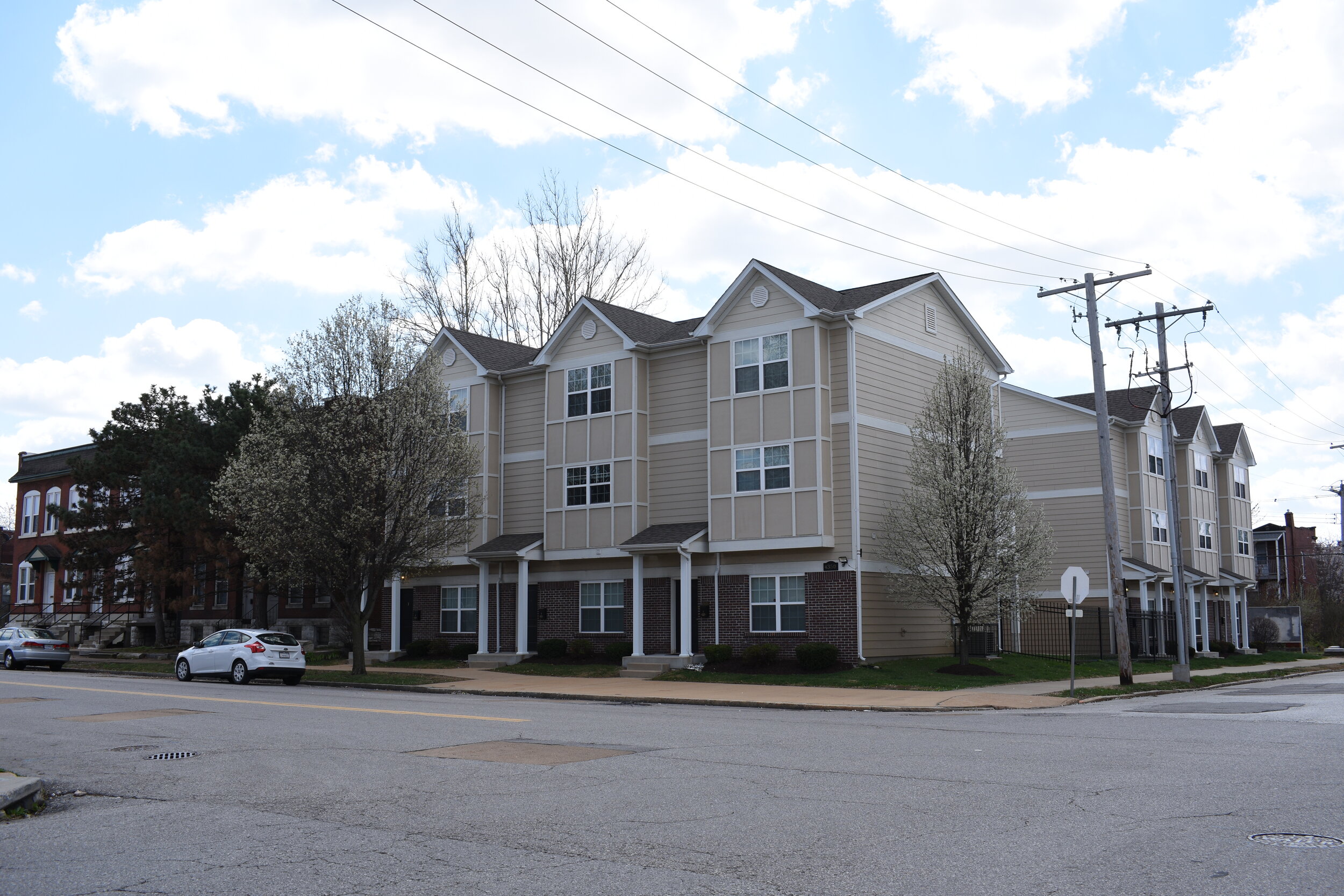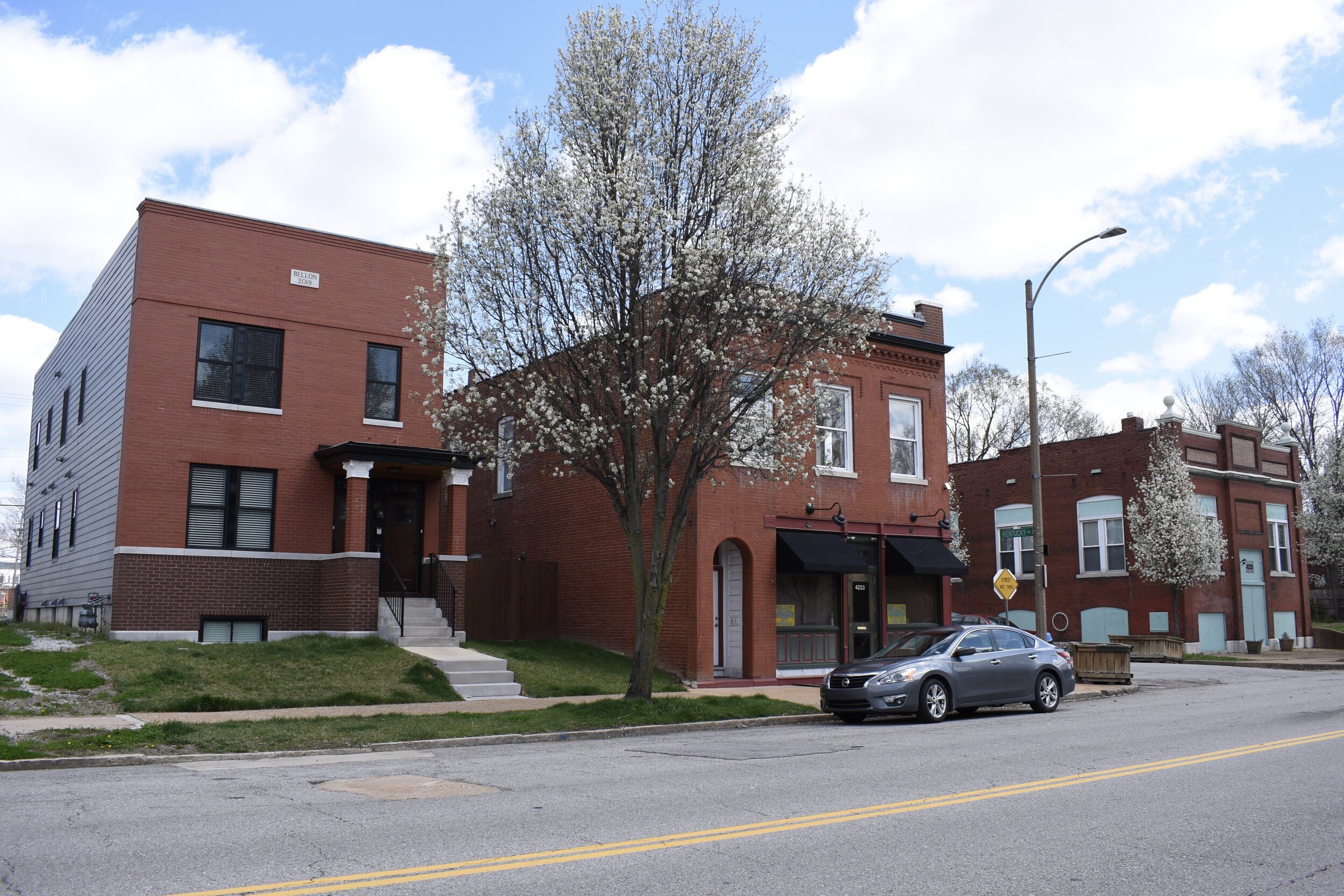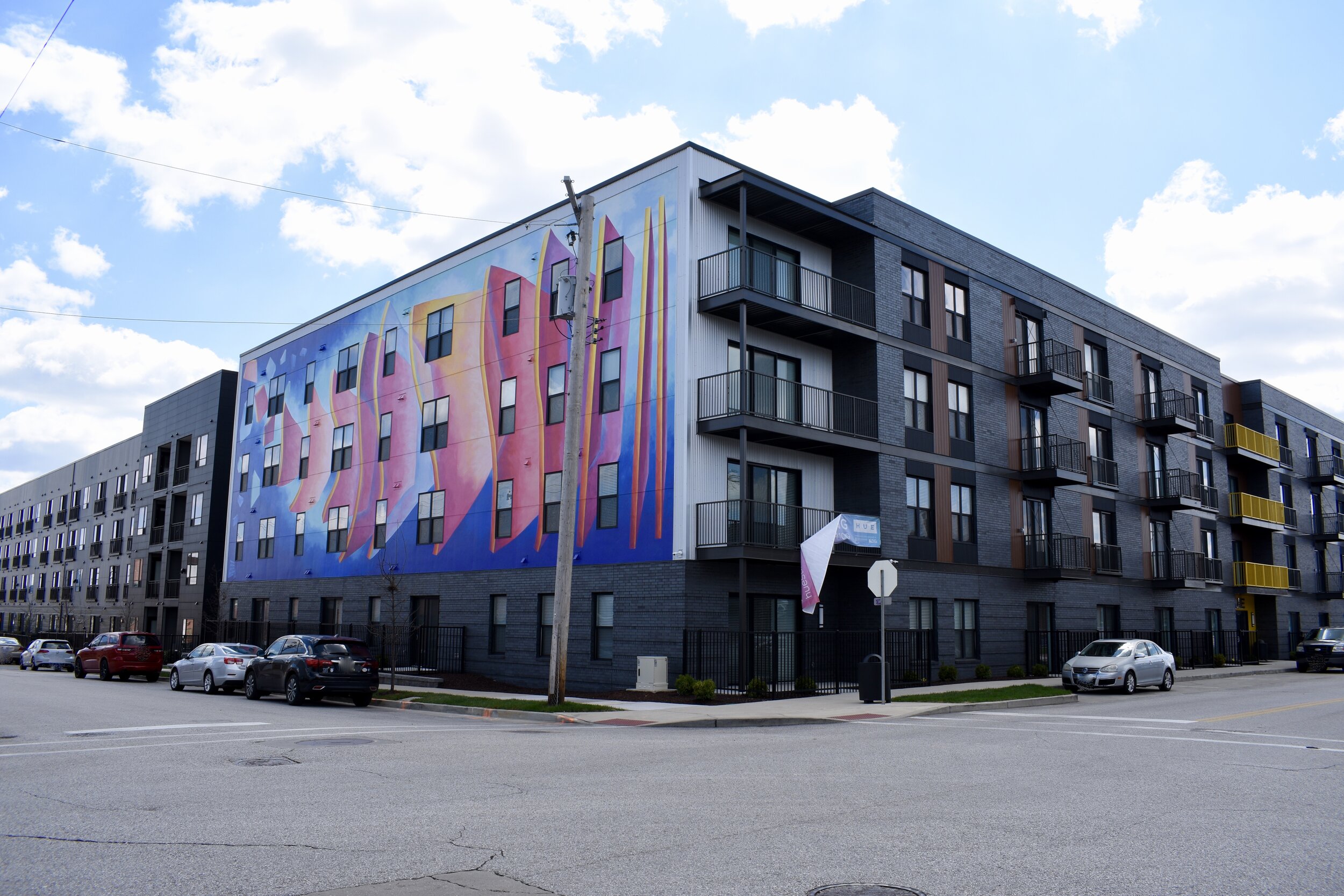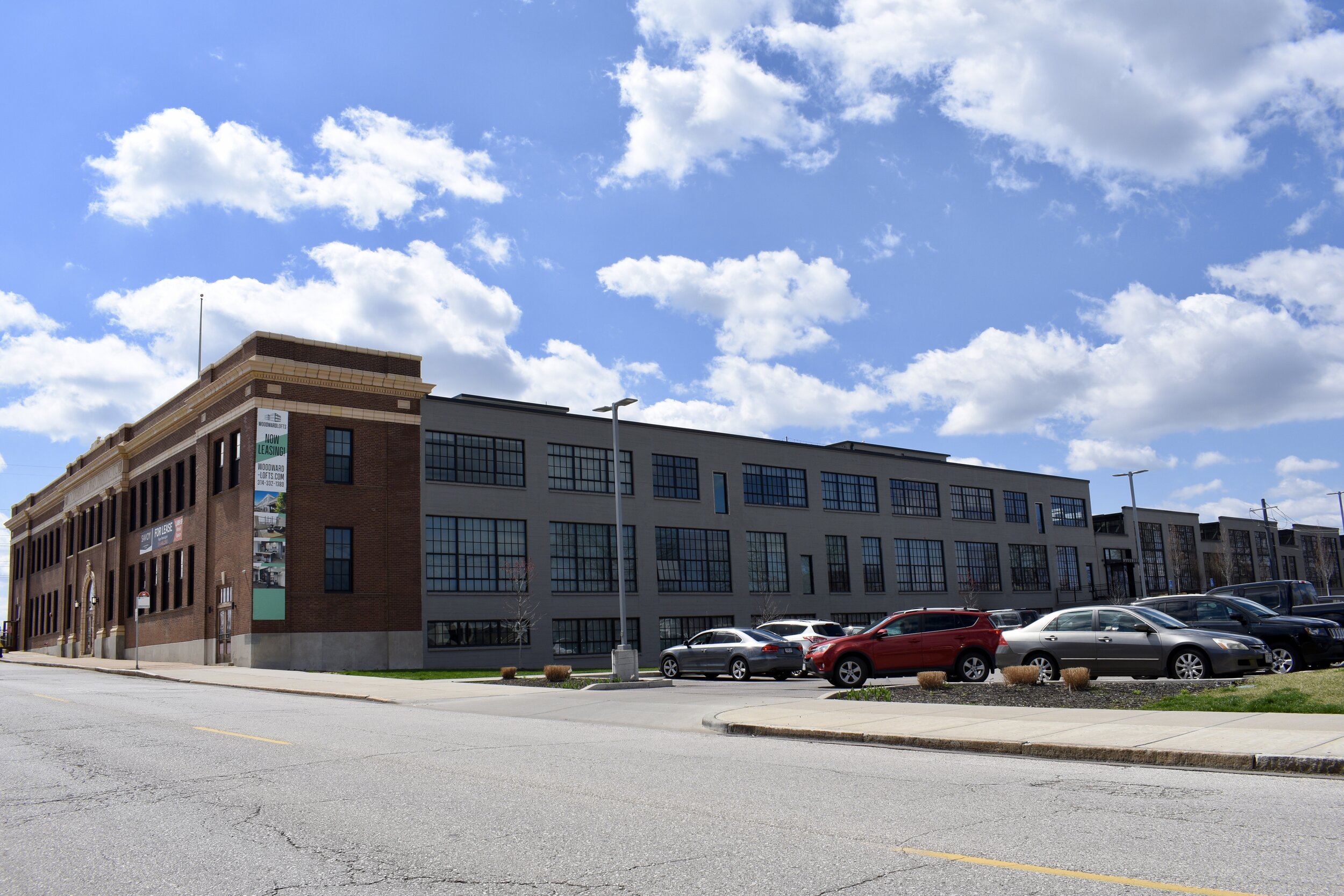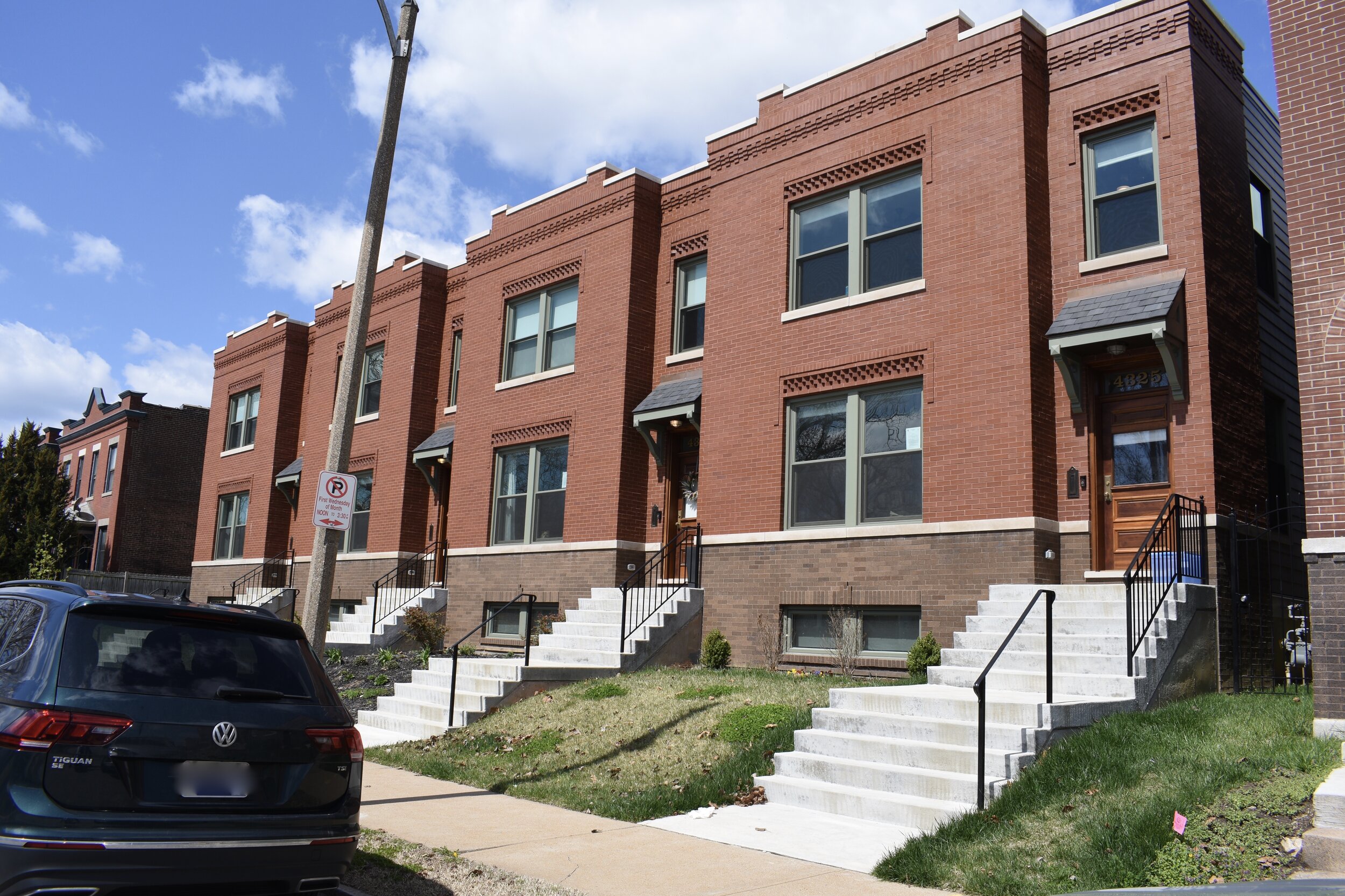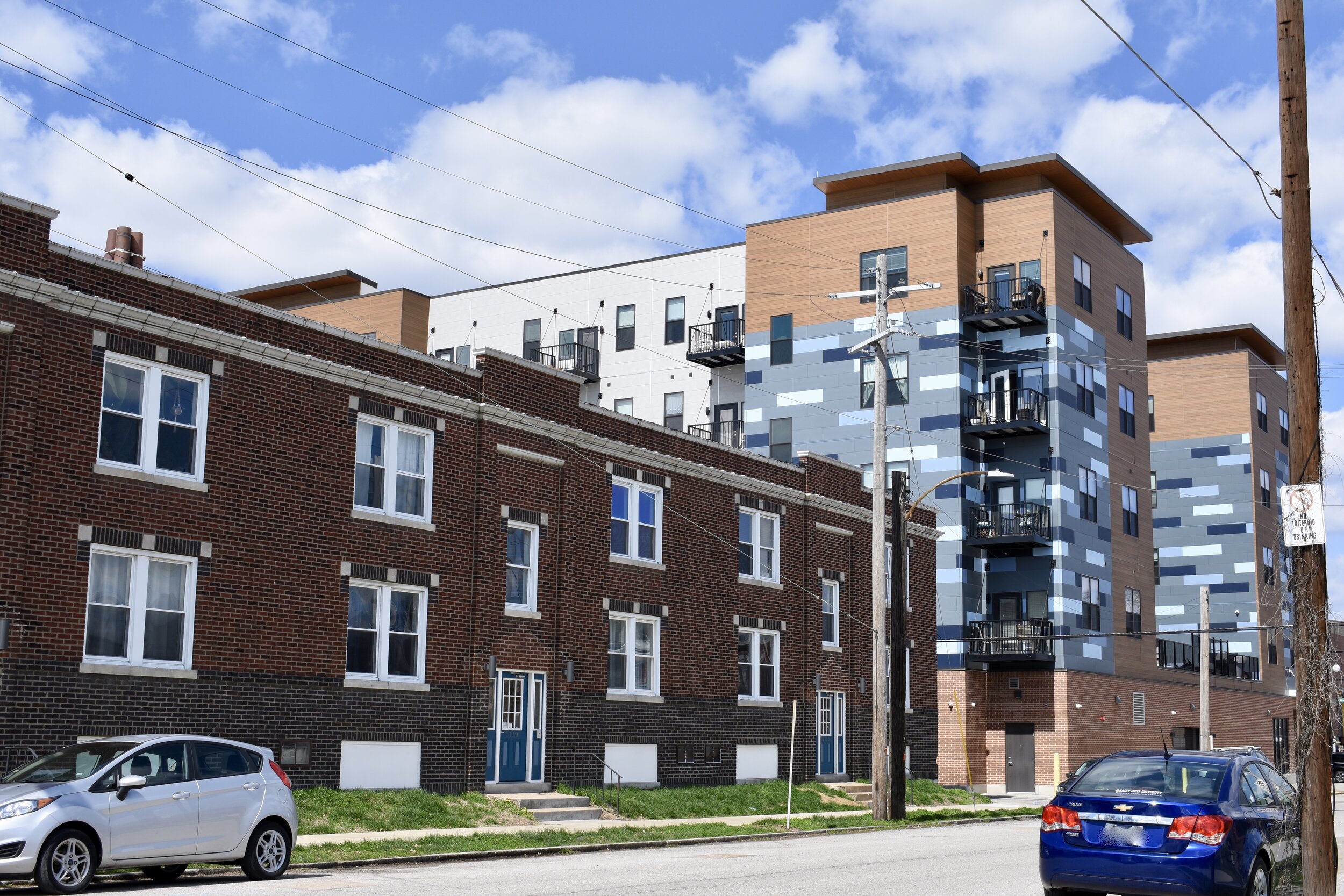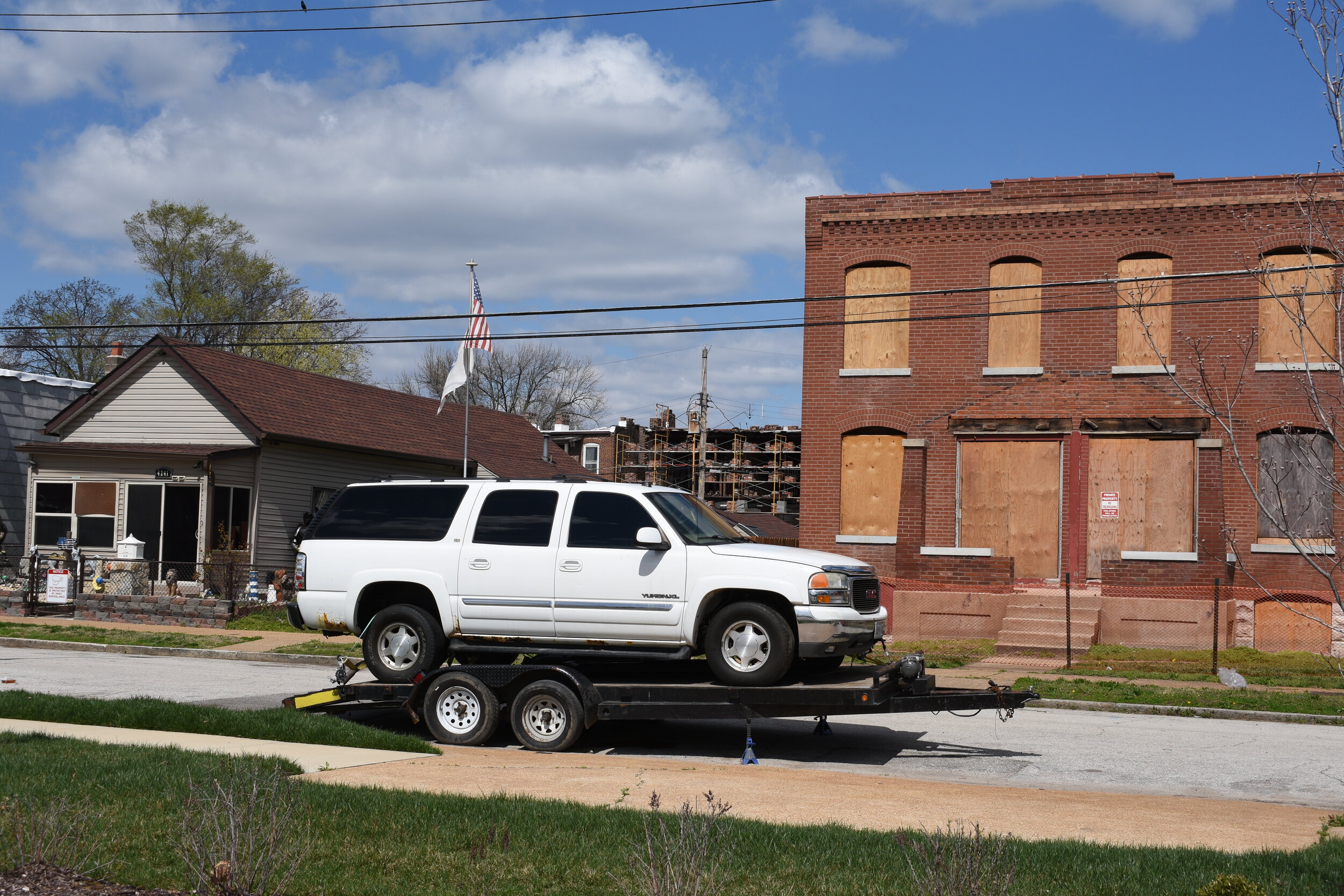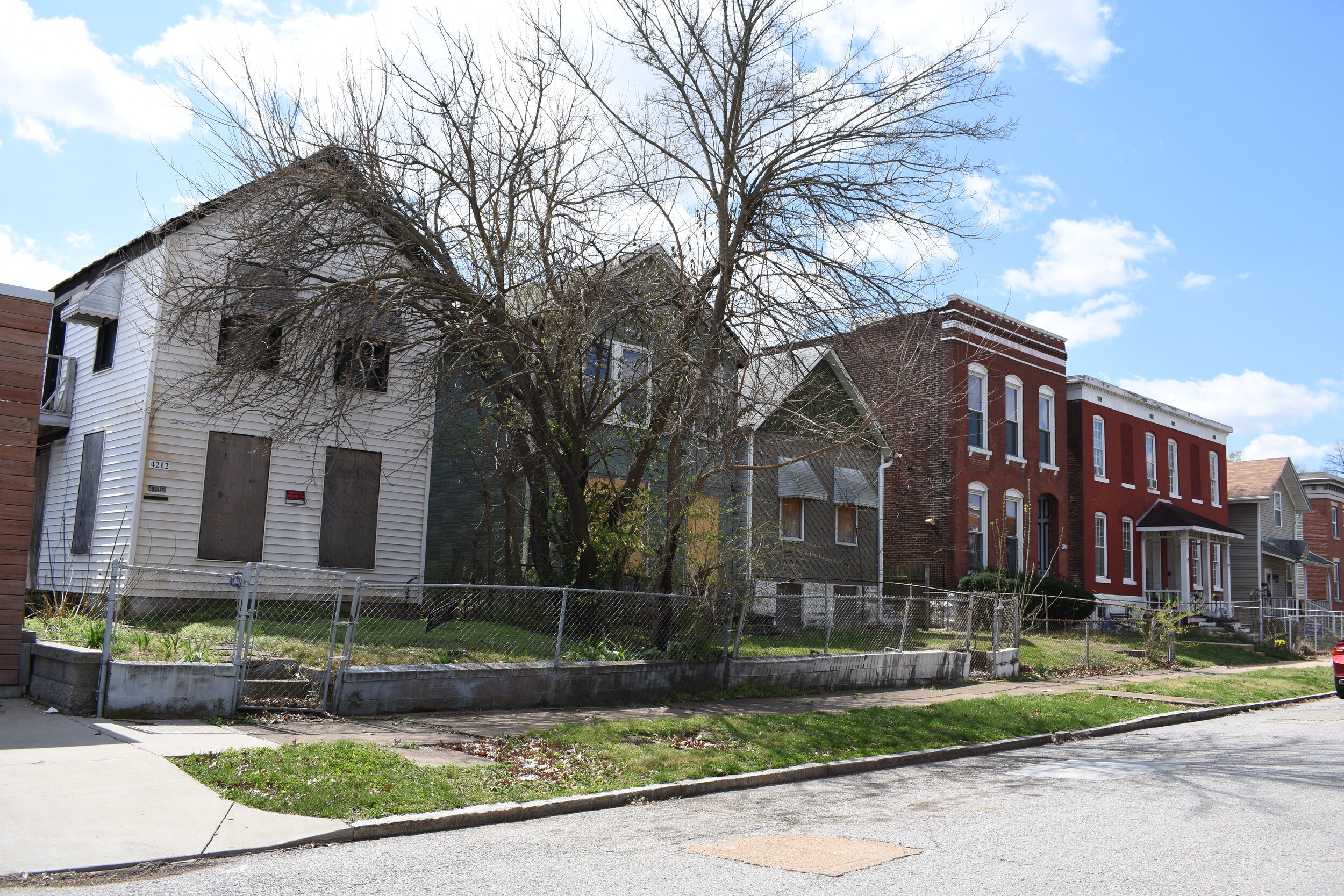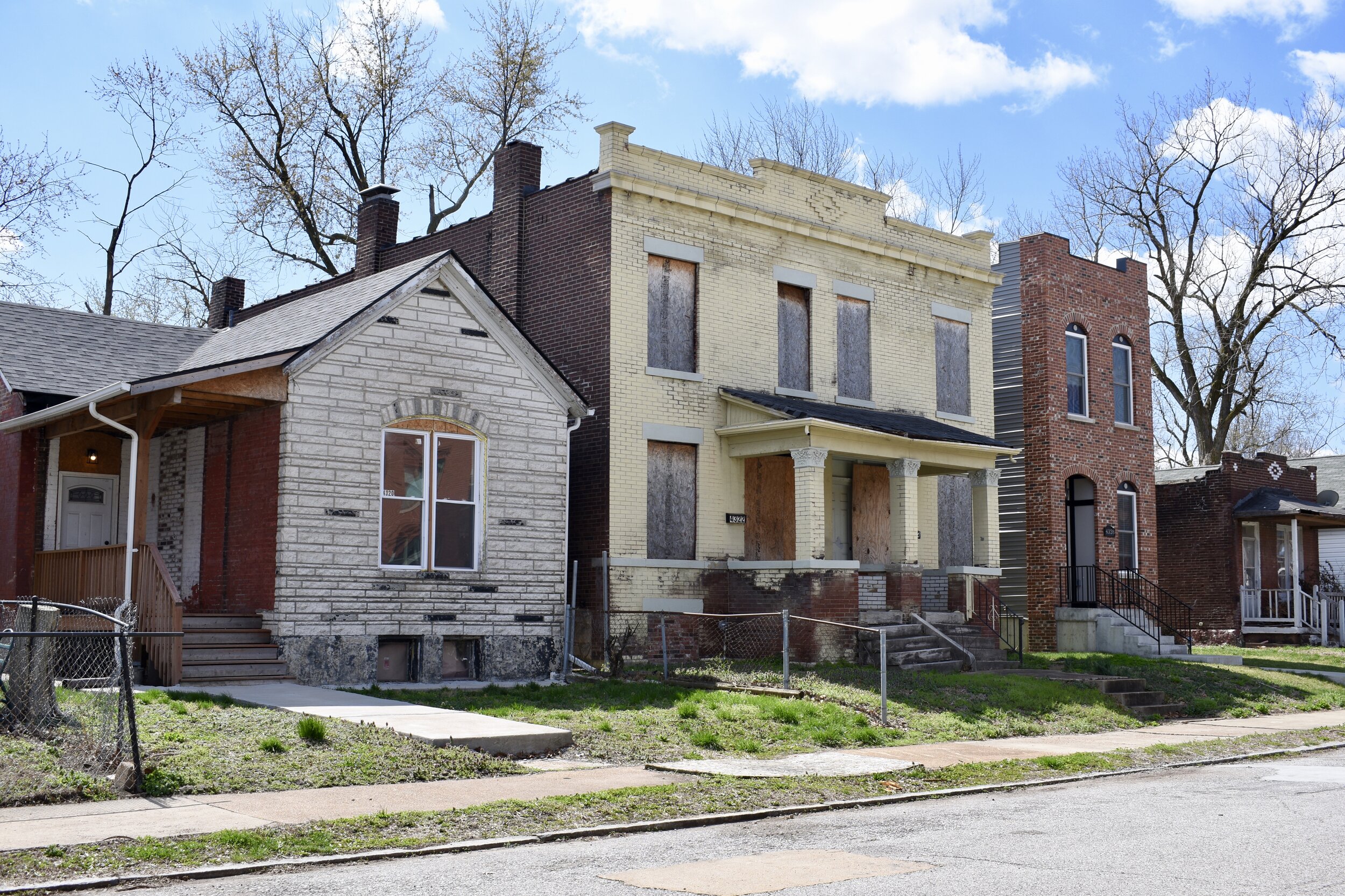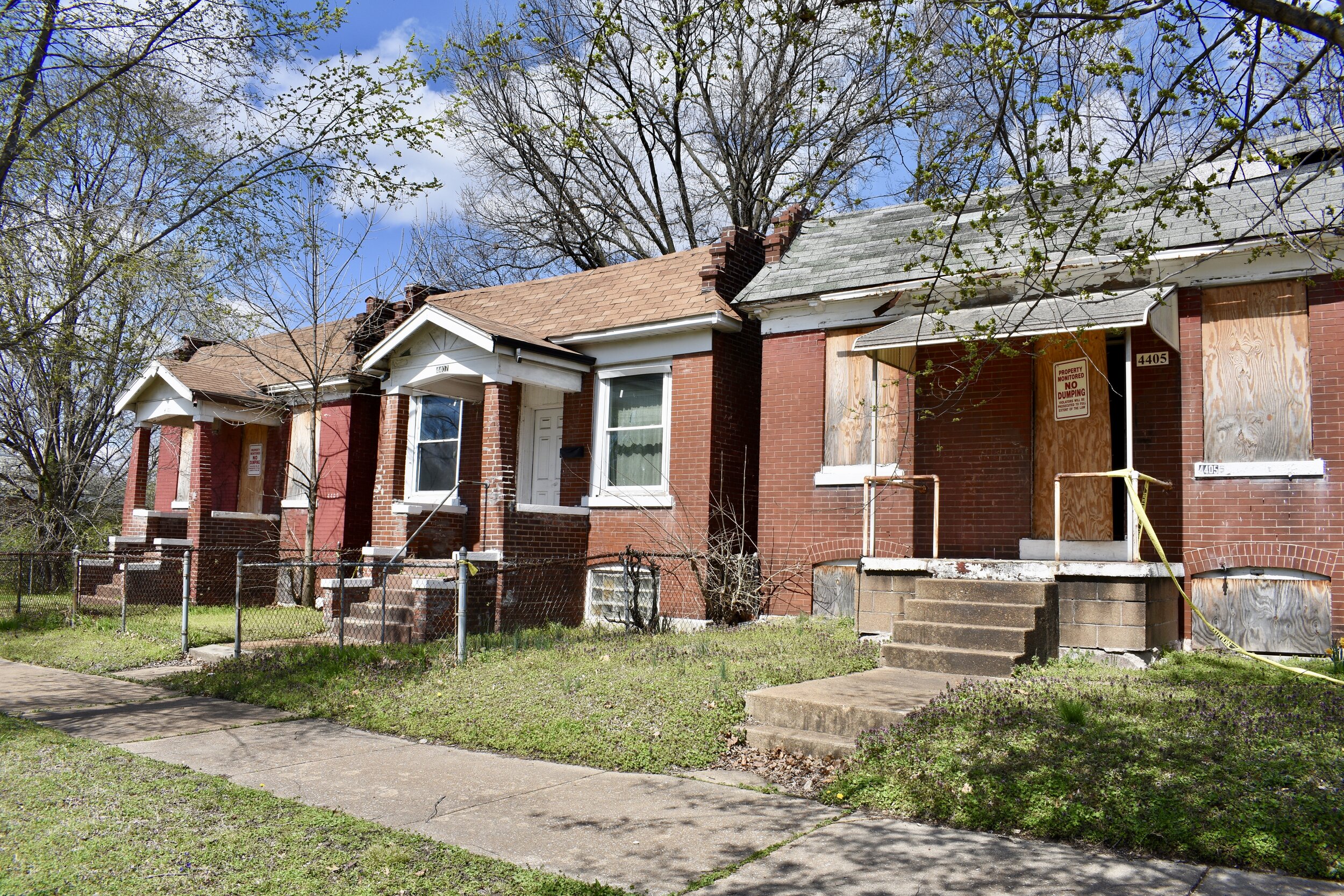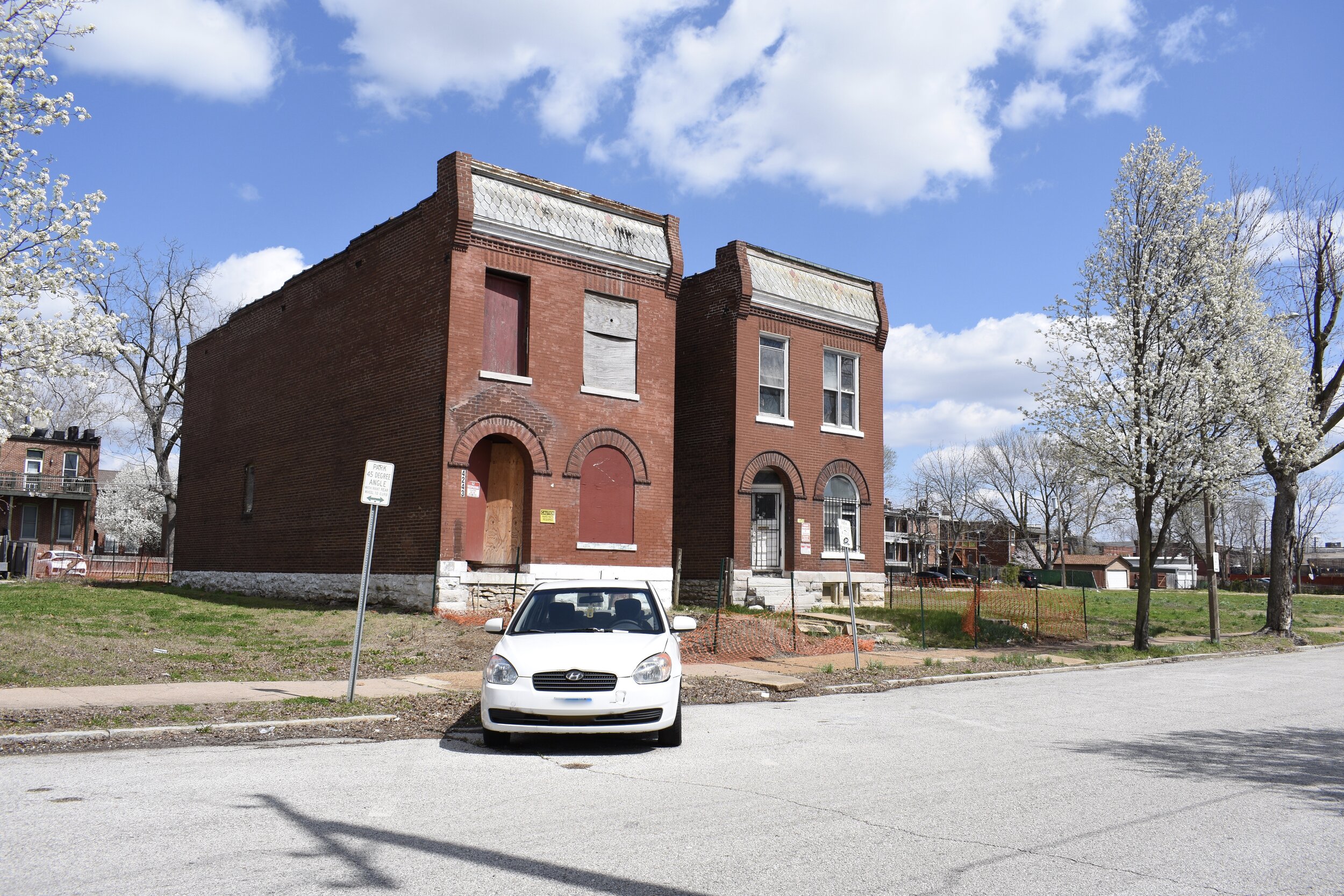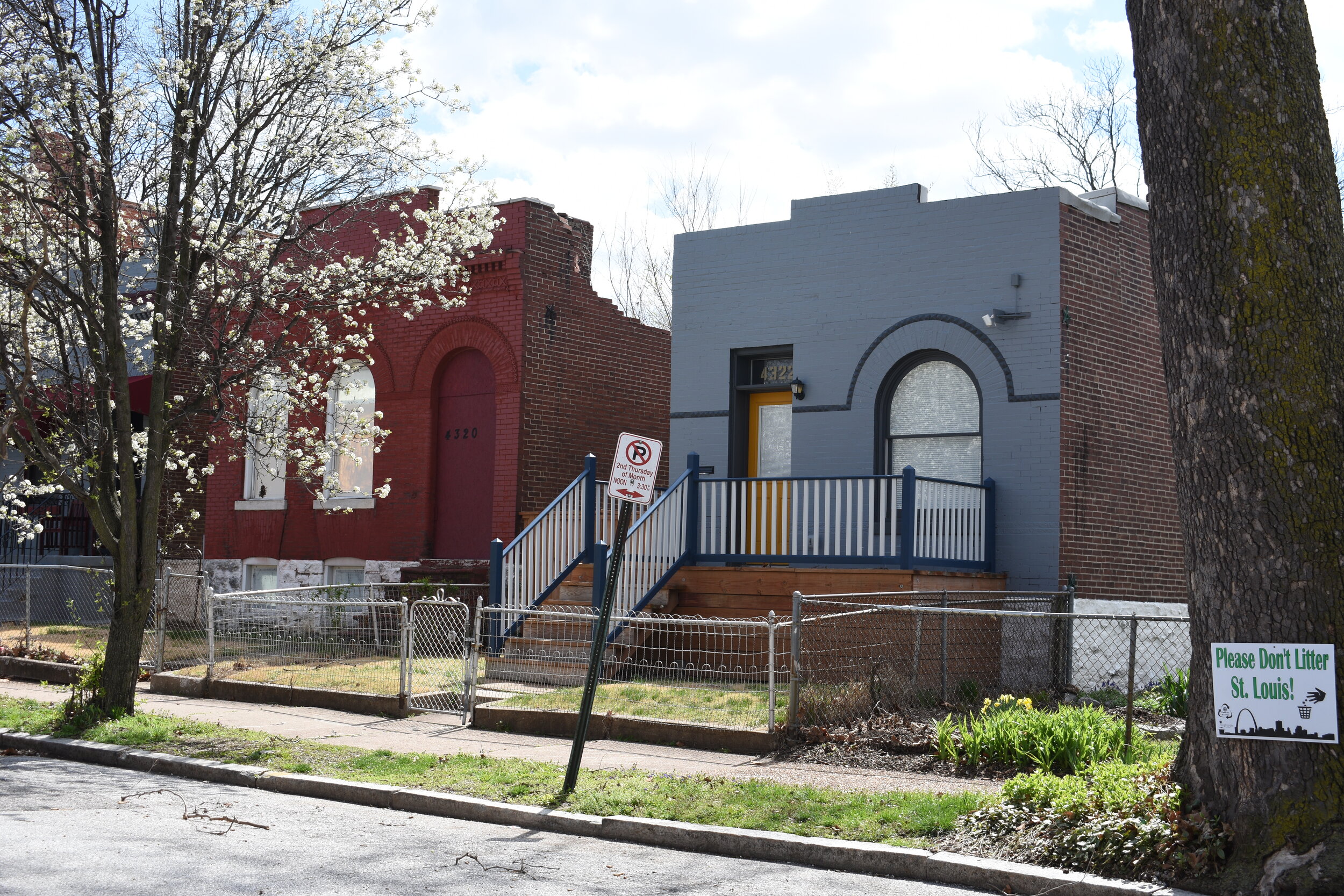Forest Park Southeast is a south St. Louis neighborhood bound by I-64 to the north, I-44 to the south, Vandeventer to the east and Kinshighway to the west:
The 2000 census counted 3,704 residents (13% decline from 1990s count) of whom 77% were black, 18% white, 1% Asian and 1% Hisp/Latino. 1,831 housing units were counted, 77% occupied, split 34%/66% owner/renter. The 2010 census data indicated another loss at about 21% with some significant racial shifts: 64% black, 30% white, 2% Asian and 2% Hispanic/Latino.


From the FPSE website:
Forest Park Southeast is an up-and-coming neighborhood with a mix of single- and multi-family homes on quiet streets along with trendy restaurants and bars in the Grove district along Manchester Avenue. FPSE comprises the four distinct neighborhoods of Adams Grove, Gibson Heights, New Boyle and Ranken East.
The neighborhood is convenient to Washington University Medical Center, Barnes Jewish Hospital, St. Louis Children's Hospital, the Central West End, the Science Center and, as its name implies, Forest Park. Forest Park Southeast is located near both Interstate 64/Highway 40 and Interstate 44, with a Metrolink stop just a few blocks north of the neighborhood.
The above mention of proximity to BJC is very true, and with the upgrade of I-64, there is a nice pedestrian crossing to access BJC, the CWE and Forest Park. FPSE is also a quick jog down Tower Grove Avenue to the Missouri Botanical Gardens.

It's also good to see I'm not alone in calling this an "up and coming" neighborhood.
A little history from the FPSE website:
Before 1989, the Forest Park Southeast neighborhood had been known by various names over the years. Originally, the area was known as Rock Spring, named for the large spring that was the principal source of the Mill Creek. Rock Spring drew a large crowd from the central city and became a resort where they could get away from the urban grind. The demographics of the area changed drastically, though, with the arrival of the Pacific Railway and the influx of industry that followed (www.stlouis.missouri.org). The construction of the Missouri Pacific railroad tracks and Manchester Road to Jefferson City in the 1850s made FPSE accessible.
However, Forest Park Southeast was developed primarily at the turn of the 20th century. The neighborhood was originally marketed as the city's first "subdivision" and was popular because of its convenient proximity to downtown and industry. Much of the housing development occurred prior to 1915 with infill activity occurring throughout the succeeding decades. Commercial development occurred primarily between 1930 and 1950.
Here is a reminder from the Rock Spring moniker for the neighborhood, the shuttered Providence Educational Center nee Rock Springs School):

As you can tell from the map and the description above, the south side of FPSE is defined by the railways. Among other operations, you'll find the City water division, Henry Plumbing (an excellent source for plumbing parts of all kinds), the Bed Guy, Luth Construction, and other various warehousing, distribution and light industry operations both operational and long since closed:





The south side of FPSE (using Manchester as the dividing line) has a high concentration of boarded up and abandoned properties:

Notice the black spray painted symbol on this property? They are all over the place in FPSE. Restoration Saint Louis is a company of Amy and Amrit Gill, who were responsible for the renovation of the Moolah and Coronado in Midtown among other things. This is probably a good sign for FPSE:

There are probably more abandoned homes and corner storefronts in FPSE than any other south side neighborhood I've visited so far:










There are examples of new construction from the 1980's through the early 21st century:



It's pretty clear that the late 20th century inhabitants of FPSE were not the best stewards of the neighborhood. However, I really think things are looking up.
Don't get me wrong, the south side of FPSE is cool, it just needs some TLC and an influx of people who want smaller shotgun homes.


The section of the neighborhood north of Manchester has seen much more investment in the last 10-15 years. There is major potential here, especially with all the corner commercial opportunities:













^ An attractive cafe with sidewalk seating.








^ This is one of my favorites. Check out the windmill above the 2nd floor window.

^ And this is right next door to the cool red building. The sign reads: "Center for Survivors of Torture and War Trauma"









^One rehabbed, one to go.

Many of the streets are closed off with bollards and cul de sac'ed. I still don't get why this is necessary.

And if those photos don't convince you that FPSE is a great up and coming neighborhood, the recently proposed Chouteau Park space near the former natural gas towers has a huge potential to draw people to FPSE, and it will be visible from I-64 and the Tower Grove Ave. exit:

Adams Elementary is on Tower Grove Avenue and has a modern upgrade to match the original structure built in 1899.


Directly adjacent to the school is another Cardinals Care baseball field, this one dedicated to former center fielder Jim Edmonds:

According to this source:
Edmonds donated $1 million -- $200,000 each season from 2001-05 to the team's charitable arm, Cardinals Care. Cardinals Care unveiled Jim Edmonds Field in June 2001 in Forest Park Southeast.
Don't like the public schools? How about a French and Spanish language immersion charter school? The first of it's kind in the area can be found at 4011 Papin Street:

Some nice old churches dot the neighborhood:



But the real claim to fame for FPSE is its mainstreet commercial district, Manchester with several businesses services, night clubs and restaurants deemed the Grove. When I first moved to STL in 1994, This stretch of Manchester between Kingshighway and Vandeventer was pretty desolate; it's amazing how much progress has been made in the last 10 years:















^ This storefront is sweet.





^I like the senior assisted living buildings, just not the empty corner at Manchester and Kingshighway.



There are many places of interest along Manchester, here are just a few:
Sweetie Pie's at the Mangrove (Now Grace Meat + 3)
(the place that got me addicted to sweet potato fries)
Mia Rosa
Novak's Bar and Grill
The Fox Hole
The Newstead Tower Public House
And many others
Five has since closed shop in the Grove and moved to the Hill.
Most of the buildings along Manchester have been redone. However there are still a handful that await their turn:

Some sights along Vandeventer:

The former Billy Goat Tavern

^This stretch of store front is attractive, can't understand why things haven't taken off here.
A former fire station is available for sale/lease:

I really like the Chouteau building, too bad it's fallen victim to some urban poaching:


The Thomas Coffee headquarters on Boyle is an impressive employer, who seems committed to the city. They've been roasting coffee under this roof since 1905.

Thomas isn't the only coffee roaster in FPSE:

FPSE has seen an amazing amount of investment over that last 10 or so years. I think the positivity will continue both north and south of Manchester to make FPSE yet another great south side neighborhood that will draw all kinds of people to live, work and play.
Cheers to Forest Park Southeast!
***In March, 2021 I revisited the neighborhood and the following includes updated commentary and photos.***
Misses On Original Tour
Not too many misses, so I’m good with the content. I should not have listed individual businesses as they tend to come and go. I’ve chosen to keep them in there as a reminder of what once was there. I’m nostalgic like that, so I won’t delete the places that have moved on or gone out of business.
I’ve got hundreds of photos in the Additional Reading links below, as I’ve enjoyed watching this neighborhood rebound over the years. I will include some more just to freshen it up.
Noticeable Changes
Wow, where to start. This neighborhood has seen the most residential infill and drastic change in the last ten years. Nearly every photo in the 2010 post has changed. New housing, both affordable and market rate, has exploded. Mixed use buildings have filled in a lot of holes, new businesses are there, rehabs have swept the entire neighborhood.
My subjective observation is it is trending younger, and the 2020 Census data will tell a different story on demographics and vacancy.
If you are a fan of modern mixed with old St. Louis charm, you will love it here. The place is nearly unrecognizable and it continues to change. I will post many photos that speak to just this.
Even the less residential, formerly industrial areas of the neighborhood are changing with the addition of a project called Terra in the Grove which will bring a ~$55M investment in the form of a 4-story, 307 apartment and 1,400 sq. ft. commercial space mixed use building. It is just getting off the ground as of this update.
Pair that with local developer, Green Street, moving their corporate offices from the suburbs to St. Louis in the former industrial area along McRee Avenue in a mixed development that will include a dog-themed entertainment venue called Bar K.
Another massive project, Union At The Grove, will bring another wave of modern housing options. Affordable housing is still part of the mix, as the area has active CDCs and non-profits working there to keep the conversation balanced as millions of dollars flow into the neighborhood. There is a good project summary from Washington University HERE.
What Are The Future Needs?
I’m going to keep my mouth shut and just sit back and watch this neighborhood evolve. I’d like to see a full service grocery store and pharmacy to put the walkable icing on the cake.
Hopefully more rehabs of the old brick beauties that are boarded up will occur to balance out the modern construction.
I’d like to see Chouteau Park continue to evolve to be a neighborhood treasure. There is a masterplan and folks are working on it. Word is there may be a new basketball court being added.
Some blocks are nearly perfect and densely populated. Mature street trees line them providing a cozy, healthy, well-cared for vibe. Other blocks are barren and neglected from a street tree perspective. I’d love to see a push to upgrade sidewalks, tree boxes and of course, smartly selected tree species.
There is evidence of bollards being rolled back and streets reopening, although neighbors have taken to parking in the spaces intended for pedestrians and “private” streets. With tens of millions being invested south of Manchester, near Taylor, two streets are being reopened. This is a massive sea change for a neighborhood that used to try to choke off traffic due to the drug trade and copious gunfire. Things are finally changing.
There is always something to criticize, but I think Forest Park Southeast is an example of how to rebound from the lowest points of abandonment, vacancy, disinvestment and decay. How neglect and abandonment can be reversed. A strong partner is always needed and Washington University Medical has been that, along with the CDCs and non-profits working hard in the area.
Additional St. Louis City Talk Reading
Laclede Gas Station G - 2016 Development Favorite - December, 2016
Curvy Building on Tower Grove (Woodward Lofts) - 2016 Development Favorite - December, 2016
Chouteau’s Grove in Forest Park Southeast - 2016 Development Favorite - December, 2016
4400 MANCHESTER: ANOTHER 2016 FAVORITE DEVELOPMENT, WELL UNDER CONSTRUCTION - December, 2017
4101 Chouteau Avenue: Another Development Favorite - Well Underway - December, 2017
Adams Grove - 2017 Development Favorite - December, 2017
Forest Park Southeast Activity - Vista Place and Columbia Iron Works - February, 2018
SCOOTER RIDE #6: DRIVE-BY OF SOME NEW CONSTRUCTION AND REHABS - September, 2018
95 Unit New Construction in Forest Park Southeast - December, 2018
Ronald McDonald House - Forest Park Southeast - December, 2018
Forest Park Southeast - The Most Changed Neighborhood Since 2010? - March, 2019
Rock Spring School - Forest Park Southeast - December, 2019
Photos from March, 2021:
A theme of this neighborhood, especially on the south side of Manchester is new, modern housing mixing in with the older brick beauties.
Even though the COVID-19 pandemic claimed several businesses along Manchester Avenue, there are still plenty holding on and even some expansion.
There is a proliferation of brick homes with arched windows and an abundance of the smaller homes that add to the density and variety of architecture.
There is evidence of conintuous rehabbing of our historic brick stock.
There are more and more intra-neighborhood (off Manchester) businesses.
I spotted two community gardens.
The Missouri Foundation for Health campus, the former Columbia Iron Works, is making progress.
The section of the neighborhood south of Manchester has some very interesting infill and will see tremendous change in the coming years as more and more empty lots see new construction.
So much has happened in the last ten years.
There are fewer and fewer board ups and vacant buildings, but they still exist. Hopefully this neighborhood will be fully built out in the coming decade.
The momentum, change and continued investment in FPSE can be a template for future neighborhoods that have seen massive levels of flight, abandonment and disinvestment. Future St. Louisans can learn a lot from this place. If you want to explore topics of gentrification, equitable rebuilding, affordable/market rate housing, mixed use development , community development corporations and private/public partnerships, Forest Park Southeast would be a great St. Louis neighborhood to study.

